The Best 10 Sections/Parts of the Great Wall to Visit
Though the Great Wall is over 6,000 kilometers long, the best 10 sections to visit are around Beijing's north and east: 1) the best-restored, Mutianyu, 2) the most beautiful, Jinshanling, 3) the wildest, Jiankou, 4) Simatai, 5) Huanghuacheng, 6) Gubeikou, 7) Juyongguan, 8) Huangyaguan, 9) Shanhaiguan, and by far the most crowded 10) Badaling.
(We list the top 10 below in order of recommendation, followed by a listing of Great Wall sections throughout China that are open for tourism.)

1. Mutianyu - the most magnificent fully-restored Great Wall section
The Mutianyu section is the most popular among international travelers. This is the most child-friendly section.
- Location : 73 kilometers (45 miles) from Beijing, 1½ hours drive
- Features : A superb example of Great Wall fortifications, Mutianyu is uniquely-designed with watchtowers and fortresses densely spaced along its length, and crenellations on both sides. First Lady Michelle Obama has visited it.
- Activities: sightseeing, hiking
- Tour Time : half a day
- Facilities: cable cars or chairlifts up/down and toboggan down
See more on why Mutianyu is so popular with international travelers >>>
- 1-Day Beijing Layover Tour with Mutianyu Walk
- 1-Day Beijing Highlights Tour with the Great Wall at Mutianyu
2. Jinshanling - most popular Great Wall hiking route
The Jinshanling section is part of a popular hiking route from Jinshanling to Simatai. The Great Wall at Jinshanling is half restored and half-wild . It is also the most beautiful section of the Great Wall.
- Location: 154 kilometers (96 miles) from Beijing; 2–3 hours drive.
- Features: half restored and half-wild, quiet with fabulous vistas of the wall snaking up and down
- Activities: hiking, photography
- Tour Time : a day
- Facilities: cable car
Continue to read: the breathtaking vista of the Great Wall at Jinshanling >>>
- 1-Day Jinshanling Great Wall Hiking Tour
- 3-Day Gubeikou to Jinshanling Great Wall Hiking Tour
3. Jiankou - totally wild; the most challenging/steep section
The Jiankou section's broken wildness and perilous steepness make it the most dangerous section of the Great Wall.
- Location: 100 kilometers (62 miles) from Beijing, about 3 hours' drive.
- Features: Completely original, wild, and untouched, some sections are really steep and dangerous. It winds its way along mountain ridges in the shape of a "W".
- Activities: photography, serious hiking
- Tour Time: a day
- Facilities: none
See how steep and dangerous Jiankou's Great Wall is >>>
- 1-Day Jiankou to Mutianyu Great Wall Hiking Tour
- 2-Day Jiankou Wild Great Wall Camping Tour
- 3-Day Jiankou to Jinshanling Great Wall Hiking Discovery Tour
4. Simatai - great for a night tour
The Simatai section incorporates different characteristics of each section of the Great Wall. And visitors can have a night tour of the Great Wall.
- Location: 120 kilometers (75 miles) from Beijing, 2–3 hours' drive.
- Features : Steep and inspiring, Simatai was acknowledged as a World Heritage Site in 1987. The red leaves there is a fine sight in fall.
- Facilities: cable cars; battery carts; boat ride
Continue to read: Incredible architectural features of the Simatai Great Wall section >>>
- 2-Day Mutianyu-Simatai Great Wall Day-Night Tour
- 4-Day Simatai Great Wall Night Tour
5. Huanghuacheng - unique wall and water scenery
Huanghuacheng's section of the Great Wall is noted for its perfect blend of lake scenery and ancient wall .
- Location: 75 kilometers (47 miles) from Beijing , 1½ hours' drive.
- Features: Some parts of the wall are immersed in water, and there is a 500-year-old Ming Dynasty chestnut orchard at the foot of the wall.
- Activities: hiking, camping (May–September recommended)
- Facilities: cruise boats
Read more on Huanghuacheng's Great Wall section >>>
- 2-Day Huanghuacheng Lakeside Great Wall Hiking and Camping Tour
- 5-Day Huangyaguan to Huanghuacheng Great Wall Hiking Tour
6. Gubeikou - Wild Wall, Ancient Battle Site
- Location : 146 kilometers (90 miles) from Beijing, 2 hours' drive.
- Features : Wild and unrestored, Gubeikou protected an important pass to Beijing from northern Mongol areas. Over 130 battles happened there.
- Activities : hiking
- Facilities : None
Find more on why Gubeikou was so important to defend ancient Beijing >>>
- 3-Day Jiankou, Gubeikou and Jinshanling Great Wall Hiking
- 5-Day Great Wall Hiking Tour including Gubeikou
7. Juyongguan - one of the greatest Great Wall forts
- Location : 60 kilometers (37 miles) from Beijing, 1½ hours' drive.
- Features : The closest section to Beijing, it is wheelchair-friendly, so suitable for handicapped travelers. It is one of the greatest forts defending ancient Beijing. Genghis Khan once led his troops through Juyong Pass during his conquest of Chinese territory.
- Typical tour time: 1½–2 hours
Continue to Read: Secrets to China's ancient military stronghold in Juyongguan Pass >>>
8. Huangyaguan - an annual Great Wall marathon race site
- Location : Ji Country, Tianjin, 3 hours' drive from Beijing.
- Features : The Great Wall Marathon is held on Huangyaguan's Great Wall each May.
- Typical tour time : 2–3 hours
- Facilities: sightseeing buses to the mountain top
Continue to read: What makes Huangyaguan a Great Wall marathon site >>>
9. Shanhaiguan - where the Great Wall meets the sea
- Location: Qinhuangdao City, Hebei Province, 3½ hours' drive from Beijing.
- Features : Shanhaiguan was a very strategic pass in the Great Wall of China. It served as a frontier defense against the Manchus. It is the east end of the main Ming Dynasty Great Wall, where the Great Wall meets the sea.
- Tour time: one day
Continue to find out about the military power of ancient China at Shanhaiguan >>>
10. Badaling - the most popular section among Chinese tourists
- Location : 72 kilometers (45 miles) from Beijing, 2 hours' drive
- Features : The most popular section among Chinese tourist groups, it is always very crowded.
- Facilities : cable cars, Great Wall Museum, circular-screen cinema, and some wheelchair access.
- Tour time: half a day
Continue to read: The big crowds and fabulous scenery of the Badaling Great Wall >>>
All Great Wall Sections
The Great Wall of China crosses 15 provinces and municipalities: Gansu, Ningxia, Shaanxi, Shanxi, Inner Mongolia, Hebei, Tianjin, Beijing, and Liaoning, etc.; over 2,000 km (1,300 mi) in distance, but the length of the Wall is many times longer, reaching to 21,196.18 km (13,170.7 mi).
Here's a list of the main sections of the Great Wall from West to East China:
- Jiayu Pass Fort - Jiayuguan
- The Great Wall First Abutment
- The Hanging Great Wall
- The Dunhuang Han Dynasty Great Wall
- Jade Gate Pass Fort - Yumenguan
- Yang Pass Fort
In Ningxia:
- The Great Wall in Ningxia
In Inner Mongolia:
- The Great Wall in Inner Mongolia
In Shaanxi:
- Zhenbeitai Tower
- The Great Wall around Yulin
- Yanmen Pass
- Niangzi Pass
- Ningwu Pass
In Beijing Municipality:
- Shuiguan ("Water Pass")
- Juyong Pass Fortress
- Huanghuacheng
- Baima Pass Fort
- Jinshanling
In Hebei Province:
- Zijing Pass
- Shanhaiguan Fortress
- Jiaoshan ("Horn Peak")
- Laolongtou ("Old Dragon Head")
In Tianjin Municipality:
- Huangya Pass
In Liaoning Province:
- Jiumenkou ("Nine Openings")
- Hushan ("Tiger Mountain")
The Best Way to Explore China's Great Wall
The best way to explore the Great Wall is to travel with a professional guide. Your guide will present the Wall's history, shows you the best photo spots, and generally makes your trip enjoyable.
China Highlights can provide you with a hassle-free private or small-group tour of the Great Wall of China. See below for our most popular Great Wall tours:
- 4 Days Great Wall Night Tour to see the Great Wall lit up at night.
- 1-Day Beijing Highlights Tour (Great Wall, Forbidden City, Tiananmen Square)
- 2-Week Private China Tour: Beijing–Xi'an–Lhasa-Shanghai
- 12-Day China Silk Road Tour from Xi'an to Kashgar
- 11-Day China Classic Tour
- 14-Day China Natural Wonders Discovery
- 15 Best Places to Visit in China (2024)
- Best (& Worst) Times to Visit China, Travel Tips (2024/2025)
- How to Plan a 10-Day Itinerary in China (Best 5 Options)
- 8 Days in China: Top 15 Tours and Itineraries (2024/2025)
- China Weather in January 2024: Enjoy Less-Crowded Traveling
- China Weather in February 2024: Places to Go, Costs, and Crowds
- China Weather in March 2024: Destinations, Crowds, and Costs
- China Weather in April 2024: Where to Go (Smart Pre-Season Pick)
- China Weather in May 2024: Where to Go, Crowds, and Costs
- China Weather in June 2024: How to Benefit from the Rainy Season
- China Weather in July 2024: How to Avoid Heat and Crowds
- China Weather in August 2024: Weather Tips & Where to Go
- China Weather in September 2024: Weather Tips & Where to Go
- China Weather in October 2024: Where to Go, Crowds, and Costs
- China Weather in November 2024: Places to Go & Crowds
- China Weather in December 2024: Places to Go and Crowds
Get Inspired with Some Popular Itineraries
More travel ideas and inspiration, sign up to our newsletter.
Be the first to receive exciting updates, exclusive promotions, and valuable travel tips from our team of experts.
Why China Highlights
Where can we take you today.
- Southeast Asia
- Japan, South Korea
- India, Nepal, Bhutan, and Sri lanka
- Central Asia
- Middle East
- African Safari
- Travel Agents
- Loyalty & Referral Program
- Privacy Policy
Address: Building 6, Chuangyi Business Park, 70 Qilidian Road, Guilin, Guangxi, 541004, China
- Best Tourist Attractions Along the Great Wall of China
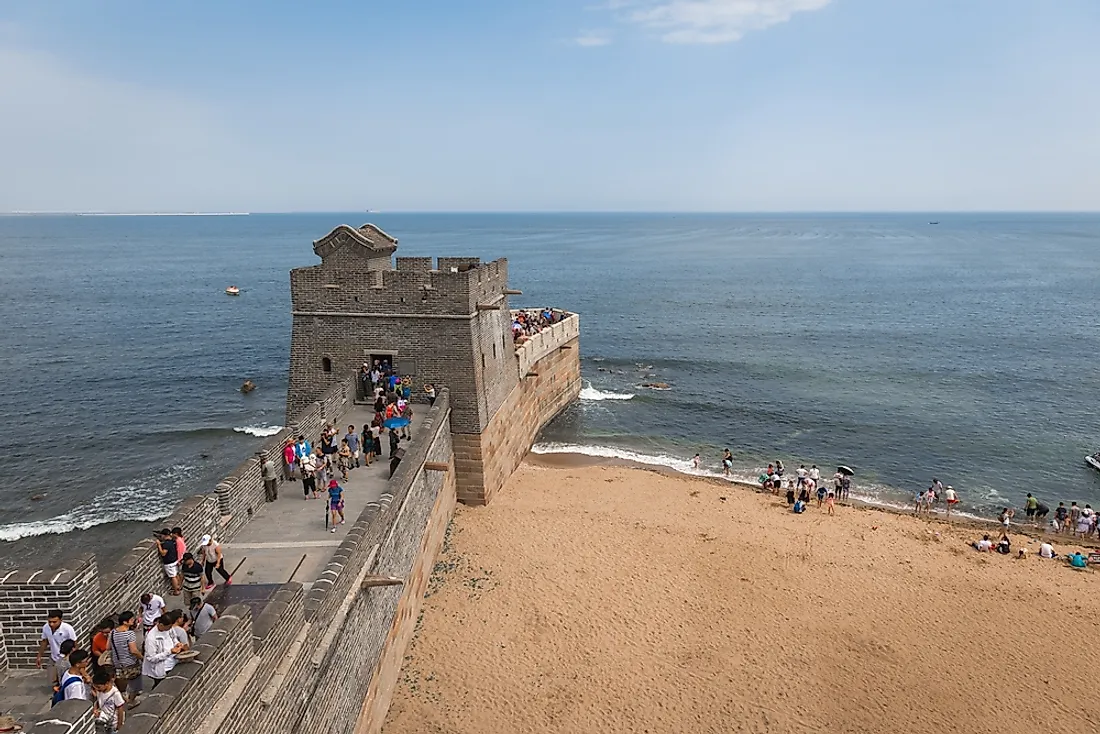
The China National Tourism Administration has rated several sites along the Great Wall of China as AAAAA tourist attractions. The AAAAA tourist attractions are also known as Scenic areas. They are China’s best-maintained and most important tourist sceneries. The China National Tourist Administration has given these areas high level-rating categories. In the beginning, 66 areas gained approval out of the 106 areas nominated. Since then, subsequent areas have made it to the list of China’s best attractions. As of today, China has 249 official AAAAA tourist attractions.
Some of the best tourist attractions along the Great Wall of China include Badaling Great Wall, Shanhai Pass, Baishi Mountain, and Yanmen Pass Scenic Area. Other AAAAA-rated tourist attractions in China include Mount Pan in Tianjin, Guwenhua Jie in Tianjin, Olympic Green in Beijing, and Baiyang Lake in Hebei among others.
4. Badaling Great Wall
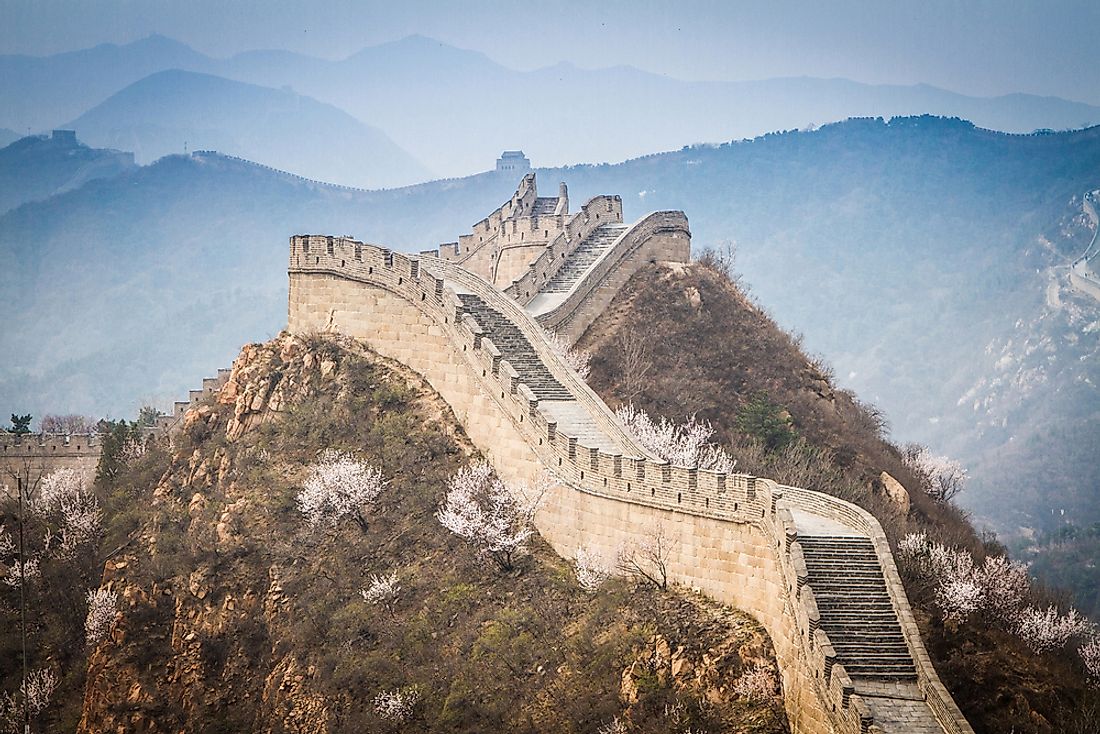
Badaling is the most visited site on the Great Wall of China. It lies 80 km northwest of the urban Beijing city in Yanqing District. Badaling wall was built in 1504 during the Ming Dynasty together with a military outpost showing how the area is strategically important. The wall came up to act as a commanding and strategic area for protecting the Juyongguan Pass on the south and Beijing city. Belbao is the highest point on the Badaling Great Wall rising to 1,015 meters above sea level.
The Badaling was the first area of the Great Wall of China to be opened for tourists in 1957. The area has undergone great development including construction of restaurants, cable cars, and hotels. The Badaling Expressway completed recently connects central Beijing and Badaling.
US President Richard Nixon and his wife visited Badaling wall during his historic journey to China on February 24, 1972. Other leaders who have made trips to Badaling include Ronald Reagan, Mikhail Gorbachev, and Margaret Thatcher. Additionally, the expressway and Badaling were the finishing circuit during the Urban Road Cycling Course in the 2008 Summer Olympics.
3. Yanmen Pass Scenic Area
The Yanmen Pass also goes by the name Yanmennguan or Xixingguan in the Chinese language. It is a mountain pass with three fortified gates. In ancient China, the area served as a checkpoint, controlling movements between the valleys of Eurasian Steppe and central Shanxi. It was here that many important battles that stretched into the Second World War took place. Today, the pass is an AAAAA-rated tourist attraction on the Great Wall of China.
Geographically, Yanmen pass is in the mountains of Yanmen or Gouzhu between Hutuo River and Sanggan River basins. The Yanmenguan village lies 20 km from Shangguan county seat and 180 km northeast of the provincial capital Taiyuan.
Yanmen Pass has fortifications that protect the inner line of the China Great Wall together with Pianguan and Ningwu passes. In the past Yanmen was regarded the first among the nine passes under heaven. It has three gates, Dili, Central ate, and Tianxian gate, which are open to the people.
The Zhenbian Hall is a temple to Zhao and Li Mu general. Since 1856, local Buddhists have used the temple when Monk Shan Quan started worshipping in it. Beside the Dili gate, there is a temple to Guan Yu, the Chinese god of war.
The Yanmen Pass also has the remains of Guangwu, the former area county leader. The Han-era tombs are among his remains measuring 2-10 meters high. The Japanese archaeologists excavated them in early 20 th century and the Chinese scientists studied them in the 1980s.
2. Shanhai Pass
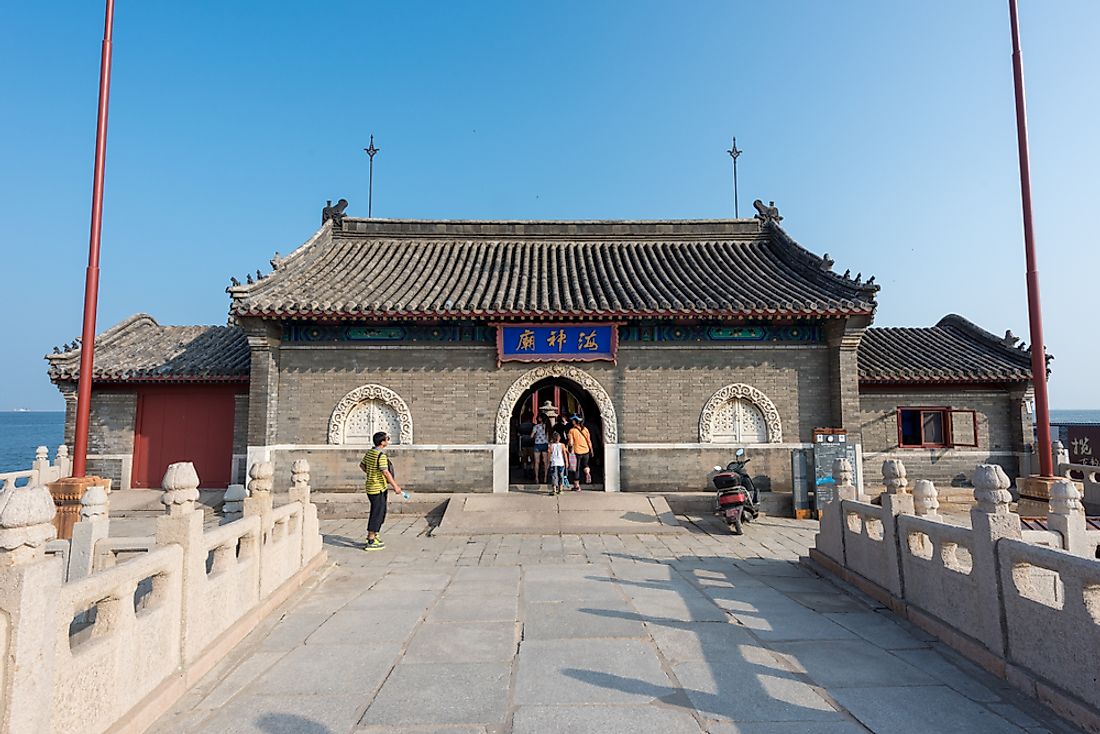
The Shanhai Pass also goes by the name Shanhaiguan in Chinese language. It lies in Shanhaiguan District, Qinhuangdao, in the province of Hebei. Ming general Xu Da built the pass in 1381. In 1961, the pass became a National Cultural Site of China. The pass is located 300 km east of Beijing. The Jingshen Expressway links the pass to Beijing.
Historically, the pass acted as a frontline defense against Manchuria ethnic groups like the Manchus, Jurchen, and Khitan. Ming general Qi Jinguang fortified and constructed a city for military around the pass plus other cities, thus making it a heavily fortified pass in China. It is the best passes in the Great Wall of China today.
The Shanhai Pass is square-shaped with a 4 km perimeter. Its walls are 14 meters high and 7 meters thick. The north, south, and east sides of the wall are enclosed by a deep and wide moat with drawbridges above it. In addition, there is a tall bell tower standing in the middle of the pass.
The four sides of the Shanhai Pass had a gate and gate men at one particular time. The Weiyuan Gate lies in the north, Wangyang Gate on the south, Zhendong Gate on the east, and Ying’en Gate on the west. The Zhendong Gate is the only one standing currently due to lack of repairs. Zhendong Gate due to its position served important activities as it faces Beijing.
1. Baishi Mountain
The Baishi Mountain is also known as Baishishan in Chinese. It lies in Laiyuan County, in the province of Hebei in China. It has the highest peak of 6877 feet elevation and its main ridge extends over 22,966 feet. Baishi Mountain also lies 200 km southwest of Beijing and it forms the northern end of Taihang Chain. Around the Mountain’s foothill, lie the remains of the Great Wall.
The white marble makes parts of the mountain and that is where it derives its name. Baishi Mountain’s top is made of dolomite covering 20 km 2 . The National Tourism Administration of China established the Baishi Scenic Area in 2004. In September 2006, the area was converted to Baishi National Geological Park after being named a world geological park by UNESCO. Additionally, in early 2017, the China National Tourism Administration rated it as an AAAAA-level tourist attraction.
The mountain is prominent for its appearance during overcast days. During these days, the mountain’s peaks appear to be jutting out from low-lying mist and clouds. The Baishi Mountain has had China’s widest, longest, and highest glass skywalk since September 2014. The skywalk stretches to 95 meters at an elevation of 1,900 meters. In August 2015, the second skywalk was opened with an elevation of 1,600 meters.
More in Travel

13 Most Underrated Towns In New York To Take A Trip To

Tales in Transit: The Twists & Turns of World Travel

13 Most Underrated Towns In Massachusetts To Take A Trip To

9 Most Underrated Towns In Washington To Take A Trip To

Riding The Rails Across Europe: A Haphazard Adventure

An American's Guide for the Camino de Santiago

13 Most Underrated Towns In Upstate New York To Take A Trip To

Explore The Most Charming Spots To Visit Around Lake Constance
Tiananmen Square
Forbidden City
Best Restaurants
Foods to Try
Nightlife in Beijing
Best Time to Visit
Weather & Climate
Beijing Airport Guide
Top Neighborhoods
Getting Around
Three-Day Itinerary
Things to Do
Shopping Streets
Great Wall of China
A Complete Guide to Visiting the Great Wall of China
bjdlzx / Getty Images
- How to Visit
Huanghuacheng
Jinshanling, tour or solo, how long to spend, where to stay.
The Great Wall of China stretches 13,000 miles over mountains, forests, reservoirs, and desert. It took a millennium to build, involved multiple dynasties, and pissed off a lot of Huns. Inextricably tied to the history of the country, to visit China without seeing it would cause you to be remiss not only with your friends and family at your homecoming, but somehow within yourself as well. To stand on its ramparts gives one simultaneously a sense of experiencing something collectively epic and individually infinitesimal.
Before you visit, decide if you want to go to an unrestored section, wild section or both. (“Wild” is a popular way to refer to the unrestored sections of the wall.) Consider physical ability and whom you’re traveling with (old people, kids, your sister who hates walking) when choosing a section.
This will be a workout. It’s not strolling on an elevated side walk. The Great Wall is stone waves steep and undulating. Grab your hiking boots and prepare for the walk of a lifetime.
How to Visit the Great Wall
Most visitors go to the Great Wall as part of a half or full day trip from Beijing. Visitors can choose from over 12 well-known sections and access them through a group tour, private driver, private tour, public transportation (sometimes combined with taxis), or by driving their own car. While the travel time from Beijing varies depending on section and traffic, it can take anywhere from one to three hours to get to there.
Worthwhile sections to visit in other provinces are the famous packed-earth Jiayuguan section in Jiayuguan, Gansu Province. It's a mere 4 miles (6 kilometers) from the city and easily accessible by public transport or a short taxi ride. Also, Ningxia Province’s Sanguankou section with its three passes is about 25 miles (40 kilometers) from the province's capital city of Yinchuan. It can be reached by hiring a private car.
If you want to hire a tour operator for a section near Beijing, Beijing Wonder Tour has affordable rates and English-speaking guides. Beijing Hiker’s offers hiking tours to the wild wall. If you want to hire a private car with an English-speaking driver but explore the wall on your own, you can choose from a number of options here . If you want to hire your own car, Hertz rents cars from the Beijing airport.
Best Parts of the Great Wall
The Great Wall spans nine provinces. The sections most commonly recommended are all close to Beijing. However, for less touristy and wilder parts of the wall, you can head to Gansu, Ningxia, or several other provinces less frequented by visitors. All of the ones listed below can be accessed from Beijing.
Popular among foreign tourists and easily accessible from Beijing, Mutianyu offers a well-restored wall with 23 watchtowers, replete with photo ops and views of the surrounding mountains and forests. You can hike, take a chair lift or cable car to the top, and toboggan down. It takes about two hours to walk the 1.4 miles of this section. If you go beyond tower 23, the wall is not restored, has no guardrails, and tourists are responsible for their own safety.
To get there hire a private driver or take the subway to Dongzhimen station. Walk upstairs to the North Bound Platform. Take the Express Bus 916 towards Huairou. After about an hour, get off at the Beidajie stop. Take bus H23 to Mutainyu or share a car with other tourists going there. Travel time is two to two and a half hours.
Simatai's main draw is night tours. Though Badaling is also open at night, Simatai has more ambient lighting and fewer crowds. You can take the cable car up and walk this 3-mile section for about one and half to two hours. Be aware that its grade increases rapidly (from 968 to 3,235 feet) and is super steep. The Simatai wall cuts through the Simatai Reservoir, and those who want to can zipline over it. For the day hikers, Heavenly Ladder and Sky Bridge are two extremely narrow and high parts of the wall with incredible views of mountain ridges.
To get there hire a private driver, or hop on the Airport Express subway line to Dongzhimen station. Take Bus 980 from Dongzhimen Long Distance Bus Station to Miyun Town and then take a taxi.
This section's surrounding countryside boasts a sea of yellow flowers in spring and summer. Other distinguishing features of Huanghuacheng include: boat rides on Haoming Lake, and fewer crowds than Mutianyu and Badaling. It can also be combined with Mutianyu for a day trip, as the two sections are only a 40-minute drive apart.
To get there hire a private car, or take the 916 bus or 916 express bus to Dongzhimen to Huairou Bus Station. Hop on the H21 bus to the Small West Lake (Lakeside Great Wall) Station, and walk north to the scenic area. By public transport, it will take at least two hours from central Beijing.
For those who can’t decide if they want to see a restored or wild section of wall, Jinshanling offers a beautiful mixture of both. Ideal for hikers, this section stretches 6.5 miles, runs along the Jinshanling Mountains, contains 67 watchtowers, five mountain passes, and very few tourists. If you hike in this section by itself, plan for two to five hours. You can also hike from this section to other sections, such as Simatai or Gubeikou.
To get there, hire a private driver or take the subway to Wangjing West Station. Hop on the bus to Luanping, and get off at Jinshanling Service Area. This bus will take about two hours to get to Jinshanling Service Area. Once you alight, you can take a free shuttle to the wall.
If you want to see the section of the wall closest to Beijing and can handle huge crowds, this will be your option. Though super touristy, Badaling has amazingly restored wide walkways and guardrails for its steeper parts. Like the Mutianyu section, it offers a cable car and toboggan rides for those who want to save their energy and feet. Plan for one and a half hours to visit this section of the Wall and walk the 2.3 miles of its restored path. Check out the 19 watchtowers along the way and be prepared for tons of hawkers.
To get there hire a private driver or take the subway to Jishuitan station. Go out exit B2 and hop on the 877 bus, a direct bus with a travel time of about one and a half hours to get there.
Tips for Visiting the Great Wall
Use these tips to make the most of your visit.
You do not need to book a tour to the Great Wall, though it can eliminate the stress of trip planning and language barriers. If you are traveling solo or with one or two other adults, hiring a driver or using public transport will most likely be your best options.
If you are traveling in a large group or with children or with elderly family members, a tour or private driver will be your best options. Some tours will take you to a government sponsored tea house or jade museum during the trip. Know what you’re buying if you go the tour route, and look for tours that state they do not do commissioned stops.
Weather-wise, spring and fall are the best times to see the Great Wall. Spring will provide beautiful verdant greens (and yellow blossoms around Huanghuacheng). In the fall, the rolling forested hills on either side of the wall will be dappled with red, orange, and yellow leaves. However, the best time to go to avoid crowds is winter.
Wear layers. It gets windy and most of the sections are exposed. Even the watchtowers have giant open window frames. If you go in the summer, take a hat and sunscreen.
Spend at least three to four hours on the wall, this is one of the Seven Wonders of the World and a UNESCO World Heritage site after all. Take some time to enjoy it. Sections can be steep (even if restored) and ascents slow. Stroll through the blockhouses and watch towers, sip water as you admire the surrounding hills, and zip down to the base in a toboggan (if you go to Badaling or Mutianyu).
If you want to experience the Great Wall early without leaving Beijing in the wee morning hours, consider staying at a hotel by the section you want to see. For Muitanyu, The Brickyard offers comfortable rooms, a restaurant, and a spa. Alternatively, if you want to go to the wall during the day, but also see it lit up at night, go to Simatai. Stay at Gubeishui Town Hotel and splurge on a luxury room with great views.
For intrepid explorers, it is possible to camp on the wall. However, you will need to do your own research and take all of your gear and provisions with you. There are no vendors in the wild sections. If you want to camp in a group tour, Great Wall Hiking offers what is sure to be a memorable experience of a night on the Great Wall.
The 12 Best Day Trips from Beijing
The Top 19 Things to Do in Beijing
Visitor's Guide to the Terracotta Warriors Museum in Xi'an
3 Days in Beijing: The Ultimate Itinerary
Beijing Guide: Planning Your Trip
How to Visit Los Angeles Without a Car
Getting To and From LaGuardia Airport in NYC
A Guide to Airports in Beijing
Great Activities for Kids Visiting China
How to Travel from Phoenix to Sedona by Bus, Shuttle, and Car
Your Trip to the Amalfi Coast: The Complete Guide
The Most Crowded Places in China
Interesting Facts About the Great Wall of China
The 10 Best Hikes in China
How to Travel From Cancun to Cozumel by Bus, Car, Ferry, and Plane
The Ultimate Guide to the Taj Mahal in India

Touropia Travel
Discover the World
10 Best Places to Visit the Great Wall of China
By Mike Kaplan · Last updated on April 15, 2024
Stretching for over 6,000 kilometers, the Great Wall of China is undoubtedly one of humankind’s most impressive architectural and engineering achievements. Over the centuries and millennia, various Chinese states and empires built sections of the wall to protect themselves from roving nomadic groups that threatened their territory from the north. As such, some parts date all the way back to the seventh century BC, while some of its most famous segments were only added in the 1500 and 1600s.
Snaking its way along mountain ridges through valleys and hills, the Great Wall stretches all the way from the Gobi Desert in the west to the Bohai Sea in the east and passes through 15 Chinese provinces along the way.
While many of its best-preserved and most impressive looking segments are to be found just outside Beijing, other more wild and remote, yet equally scenic parts are to be found further afield. As it is one of the most famous and iconic monuments in the world, no visit to China can ever be complete without taking a stroll along the Great Wall.
10. Shanhaiguan [SEE MAP]
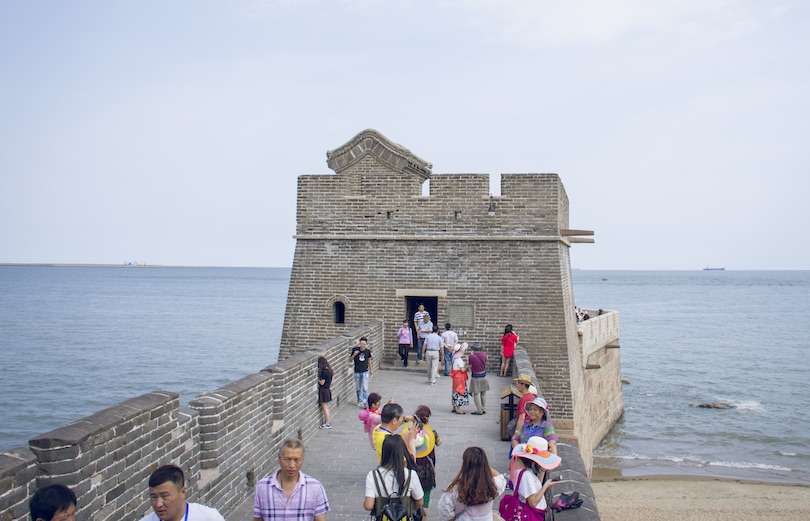
Known as the ‘Dragon’s Head,’ it is at Shanhaiguan that the Great Wall finally comes to an end and protrudes so dramatically into the Bohai Sea. Although the original part has long since crumbled into the waves, the wall has been fantastically rebuilt and restored, so you can snap photo after photo from atop of it of the sea smashing against it.
The old fortifications that surround the town of Qinhuangdao, where Shanhaiguan is located, are also considered to be part of the Great Wall and are well worth exploring if you have the time. Large segments are unrestored, and these offer up a possibly more authentic experience than the somewhat touristy Dragon’s Head. In addition to this, the town also boasts a brilliant museum that will teach you everything there is to know about the Great Wall and the people that once manned it.
9. Huangyaguan [SEE MAP]
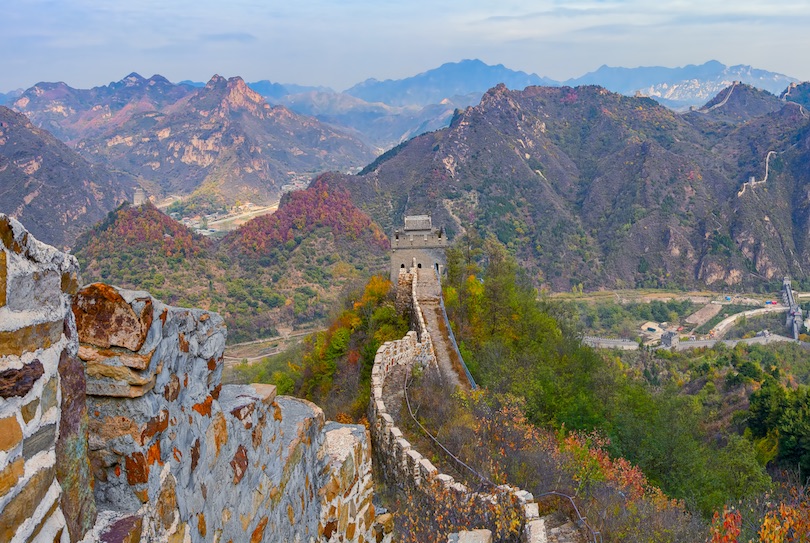
Set amid some absolutely stunning scenery with beautiful mountains and valleys all around it, the Huangyaguan section of the Great Wall stretches some 40 kilometers and boasts lots of impressive towers and water gates. The latter are particularly interesting to visit, as the arches – which date to the 1400s – could be opened and closed depending on whether an enemy was approaching or not.
Although it is quite steep in a lot of places, the wall makes for some fabulous hiking. Every May, thousands of keen runners descend upon Huangyaguan to attempt its famous marathon. Considered by many to be almost like a miniature version of the Great Wall of China, Huangyaguan has lots of fascinating sights for you to see and explore, just in a condensed and more manageable area. Visiting Huangya Pass, for instance, is simply a must, and the view from atop of the Huangya Sky Ladder section is awe-inspiring.
8. Juyongguan [SEE MAP]
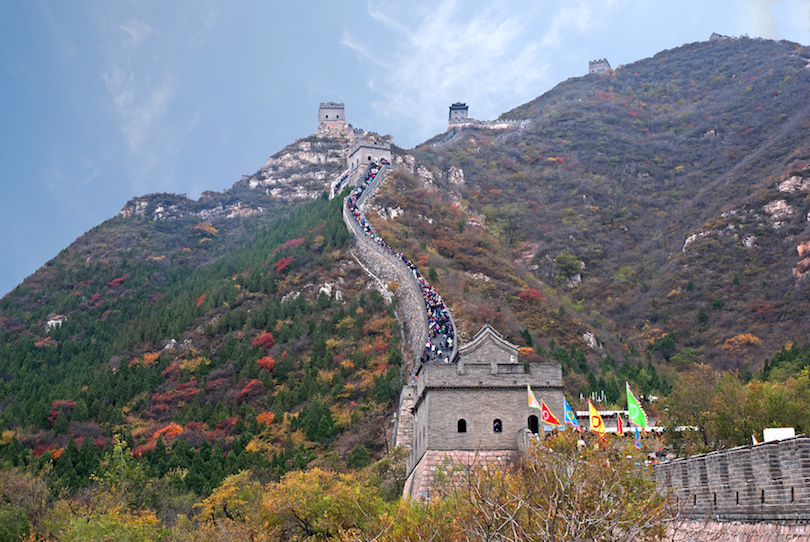
As it lies just an hour and a half to the northeast of Beijing, Juyongguan has long played an important role in the defense of the nation’s capital. In Juyong Pass Fort, it boasts one of the Great Wall’s most impressive forts. Exhibiting wonderful architecture with some features dating back to the Ming Dynasty, the fort occupies a prominent position in the Guangou Valley – one of the most critical access points to Beijing.
Despite its air of impenetrability, the Juyongguan section of the wall was actually breached by Genghis Khan in both 1211 and 1213. As it is the closest section of the wall to Beijing, Juyongguan is a very popular draw among tourists, who come to hike along the top of it, visit its fabulous fort, and take snaps of the marvelous scenery.
Lying just a short distance away are the Dingling Tombs – the only Ming Dynasty imperial mausoleum to be opened – and its museum and underground palace are well worth visiting if you’re in the area.
7. Gubeikou [SEE MAP]
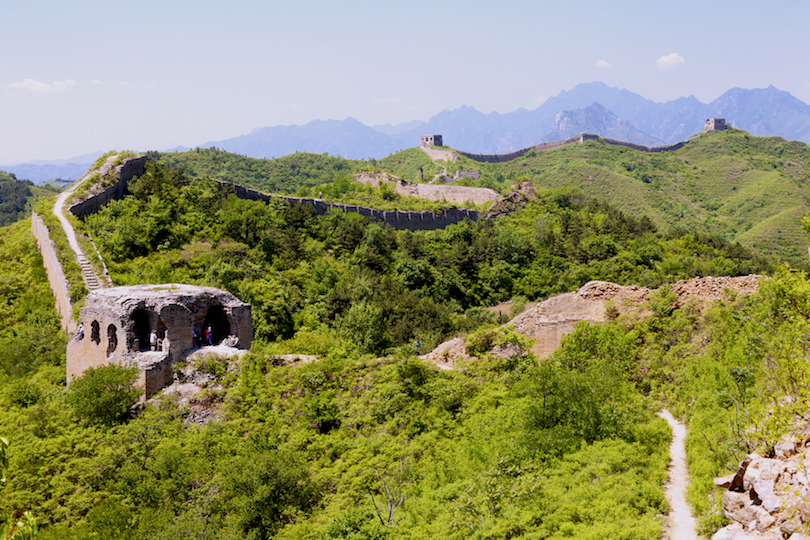
Located around two hour’s drive from Beijing, Gubeikou is one of the wildest and most rewarding parts of the Great Wall to explore. Most of it is quite unrestored, with decaying battlements and crumbling ruins wherever you look. Strategically located along the back of the Yan Mountains, Gubeikou guarded an important pass to Beijing and remarkably saw over 130 battles take place along its wall.
It has a number of interesting monuments for you to check out, such as General Tower and 24-Eye Tower. Impressively enough, no renovations or constructions have taken place here since 1567. While it is not as popular as other parts of the Great Wall, Gubeikou is ideal if you’re looking for a quiet getaway; it has lots of scenic hikes and interesting historical attractions on offer.
6. Simatai [SEE MAP]
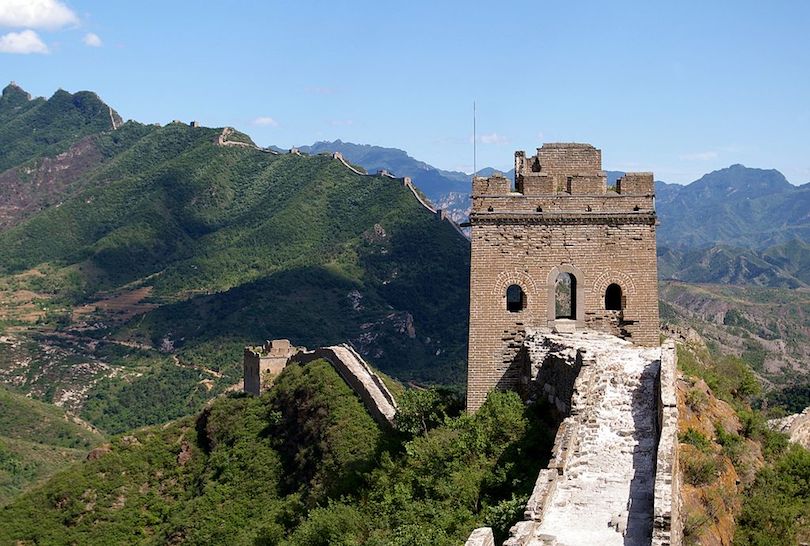
Weaving its way along the rolling ridgeline of the Yan Mountains, the Simatai section of the Great Wall is renowned for the steep drops that plunge away to either side of it. It’s one of the only parts that you can see lit up at night. Hiking along the top of it makes for an exhilarating experience as it feels like you’re walking in the air. One part, the Sky Bridge, is only 40 centimeters wide.
Strung out along the wall are a series of watchtowers, with some of them lying just 50 meters apart. From these, you can enjoy some simply stupendous views. Besides hiking along the wall, visitors can also go zip-lining and take a boat trip on the nearby reservoir up to the East Tower. One of the most memorable things to do at Simatai is to take a nighttime stroll and amble peacefully along the Great Wall of China, which is stunningly lit up against the night sky.
5. Huanghuacheng [SEE MAP]
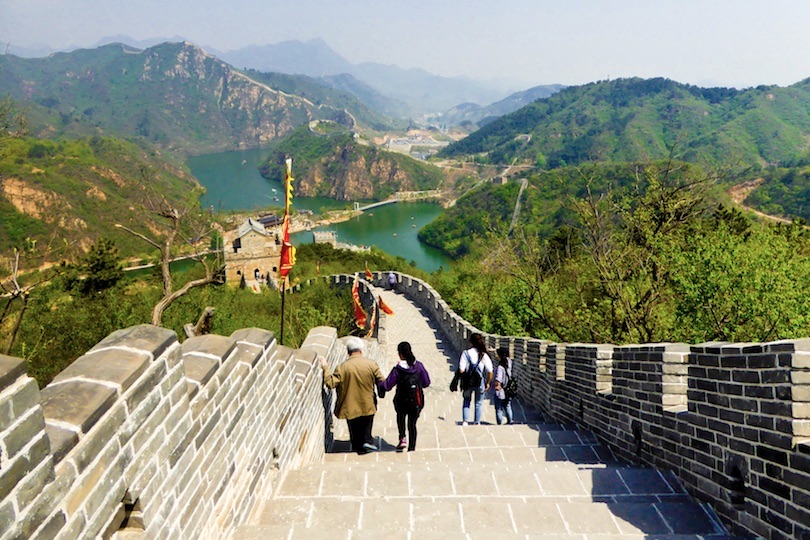
Officially known as the ‘Lakeside Great Wall,’ Huanghuacheng is the only section to be built alongside a body of water, and some of it is actually immersed in the lake that lies at its foot. The beautiful blue Haoming Lake stands out delightfully against the forest-coated mountains that lie all around it, and the Great Wall meandering across the landscape only completes the perfect scene.
Due to the challenging terrain, this section of the wall took 180 years to complete, and much of it has not been restored since 1592. Named after the lovely little yellow wildflowers that dot the mountains around it in summer, Huanghuacheng is a tranquil part of the wall, with few visitors. As such, hiking here amid the beautiful scenery with barely another soul in sight is an amazing experience, and taking a boat ride on the lake to see the wall from below is simply a must.
4. Jiankou [SEE MAP]
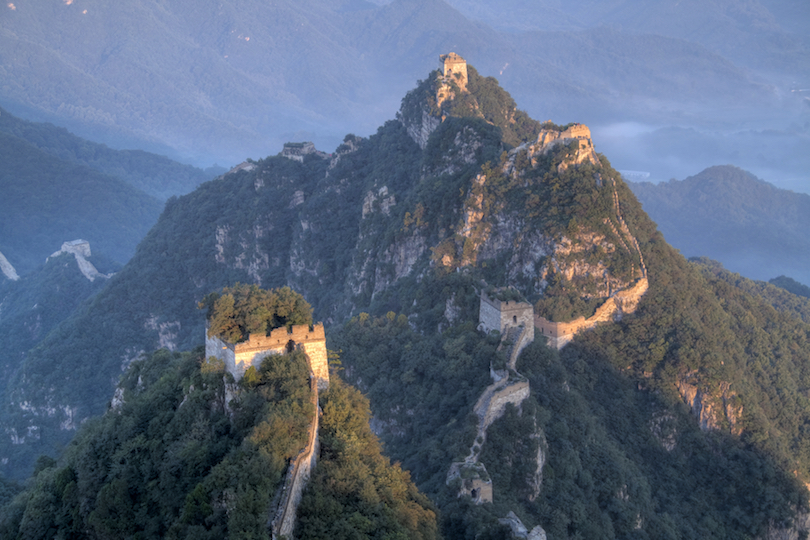
Located some 70 kilometers to the north of Beijing, Jiankou is the wildest, most dangerous, and therefore most exhilarating part of the Great Wall to explore. Completed all the way back in 1368, the wall hasn’t been restored since. Much of it lies in disrepair, with plants, flowers, and trees found growing up from its crumbling bricks.
Jiankou is home to some of the steepest parts of the wall, with ‘Upward Flying Eagle’ and ‘Heavenly Ladder’ being particularly hair-raising to navigate. The mountain scenery on show is really is out of this world. While hiking along this wild yet breathtakingly beautiful part of the wall, many people choose to camp on its battlements. Another star attraction is the ‘Beijing Knot,’ which is the point where three different sections of the Great Wall of China come together.
3. Badaling [SEE MAP]
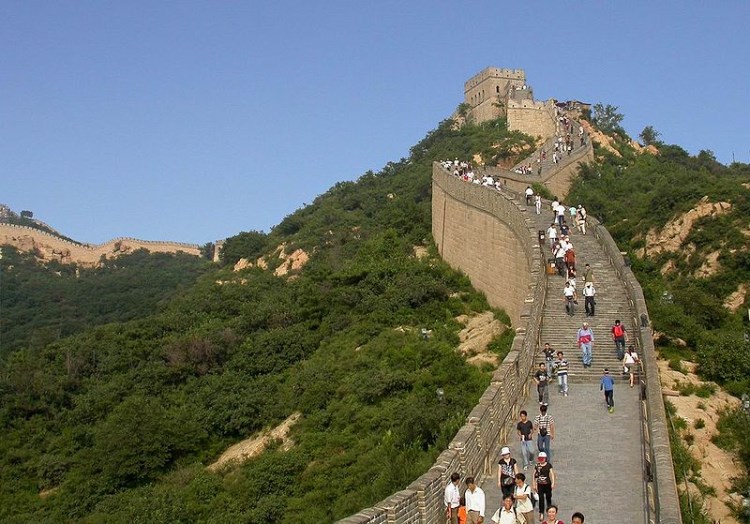
Built in 1504, Badaling is one of the most well-restored parts of the Great Wall, and its proximity to Beijing makes it the most popular section to visit amongst tourists. As such, it gets very crowded and is undoubtedly the most touristy part of the wall by far, with lots of shops, restaurants, and even cable cars on offer.
Badaling still has its charms, however, and over the years, it has been visited by everyone from President Nixon to Queen Elizabeth II. Very pleasant to stroll along, its towering walls look out over some gorgeous scenery, with steep mountain slopes tumbling away to either side of it. For its ease of access and wealth of facilities and photo opportunities, Badaling is well worth visiting if you don’t have time to venture further afield.
2. Jinshanling [SEE MAP]
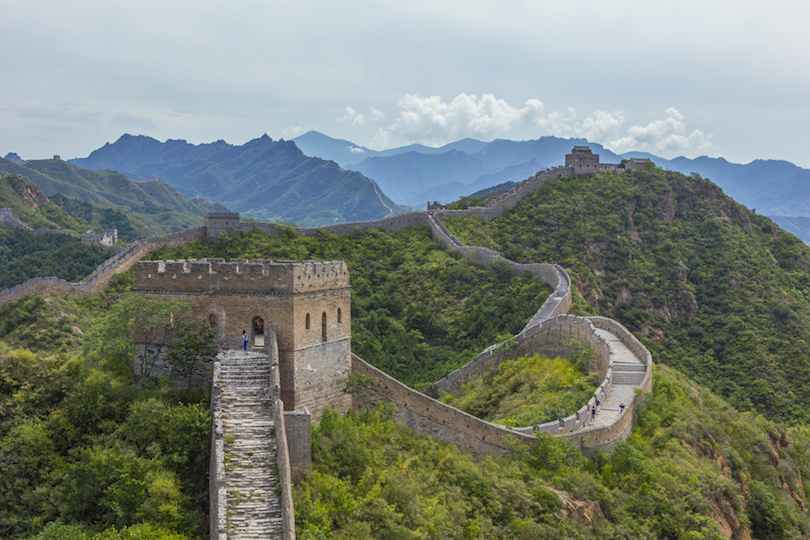
As it is renowned for being one of the most beautiful sections of the wall, Jinshanling has long been a popular draw among hikers, who come to enjoy its pristine nature and stunning views. Located some 130 kilometers away from Beijing in Hebei province, the Jinshanling section of the Great Wall is wild in places and restored in others; this variety is, in part, what makes it so brilliant to hike.
Interspersed along its 10.5 kilometers are 67 watchtowers for you to check out; these feature a wide variety of different architectural styles. It usually takes around seven hours to hike from Jinshanling to Gubeikou or vice versa. The views of the Great Wall snaking its way off into the distance across mountain ridges, passes, and valleys is simply mesmerizing.
1. Mutianyu [SEE MAP]
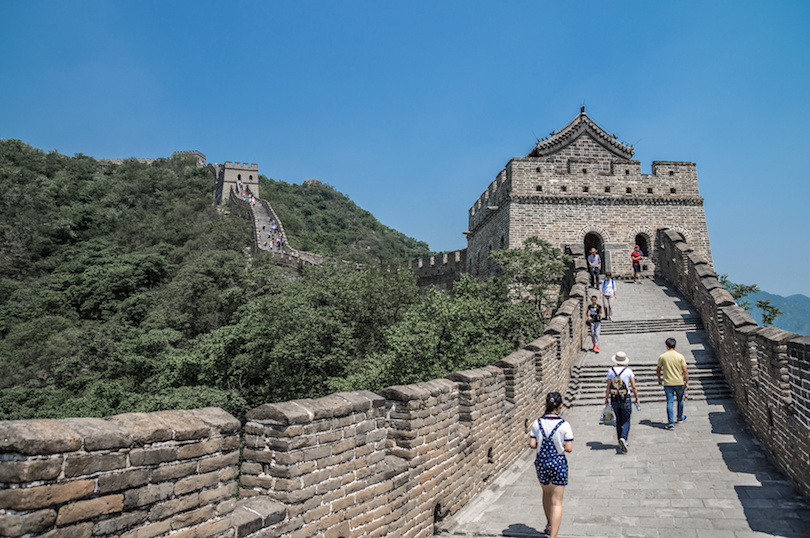
Despite its proximity to Beijing and its wealth of excellent views, Mutianyu is much less crowded than Badaling. As such, it is one of the most popular sections with foreign tourists. Surrounded on both sides by lush greenery, Mutianyu certainly makes for a fine sight as it cuts its way across the mountain ridges, with lots of watchtowers and fortresses dotted along the route.
To access the wall, visitors can either hike or take a cable car up to its battlements, and there is even a fun toboggan ride you can take to get down again. While it is still quite touristy in comparison with many other more remote sections of the wall, from time to time, you can still find yourself hiking along Mutianyu with barely another soul around. Boasting the longest, fully-restored section of the Great Wall of China, Mutianyu is a great place to start exploring all that this magnificent monument has to offer up.
Share this post:

9 Best Things to Do in Lhasa, Tibet
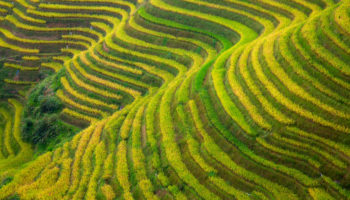
10 Most Amazing Destinations in South China
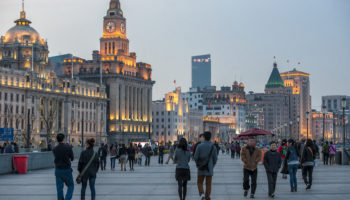
10 Top Tourist Attractions in Shanghai
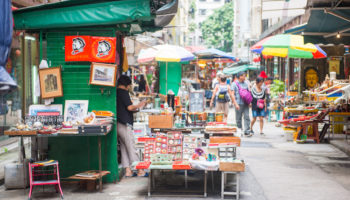
Where to Stay in Hong Kong: Best Neighborhoods & Hotels
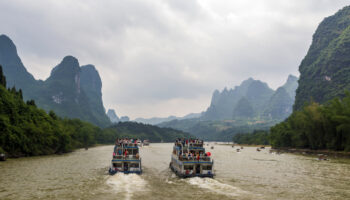
30 Top Attractions & Things to do in China
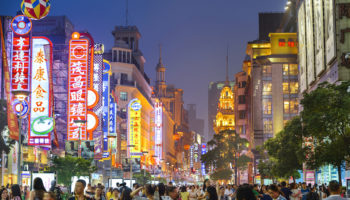
Where to Stay in Shanghai: Best Neighborhoods & Hotels
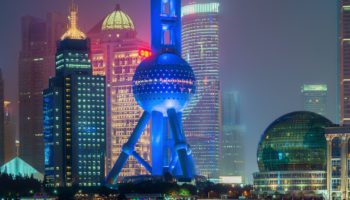
15 Best Cities to Visit in China
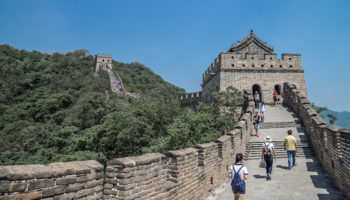
9 Best Day Trips from Beijing
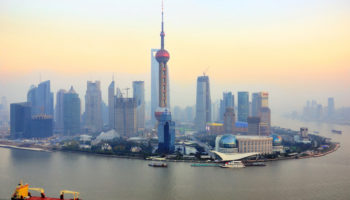
17 Best Places to Visit in China
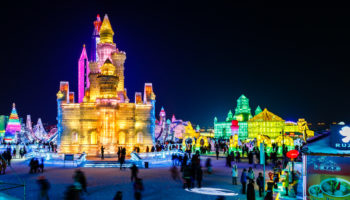
10 Most Amazing Destinations in North China
Reader interactions, leave a reply cancel reply.
Your email address will not be published. Required fields are marked *
This site uses Akismet to reduce spam. Learn how your comment data is processed .
- Skip to content

China travel guide, travel tips, attractions, & funny stuff!
The Great Wall of China | The Complete Guide of Everything To Know
May 5, 2020 By China Mike
S ure you’ve seen photos…but the only way to really appreciate the Great Wall of China is to stand on its walls and stare in awe as it snakes across the Gobi Desert and China’s placid mountains like a majestic ridge-backed dragon.
Through this Great Wall of China Guide, you will get a detailed intro to the Great Wall of China: some interesting facts including who built it, and why, and how, locations, maps, length, height, & more.
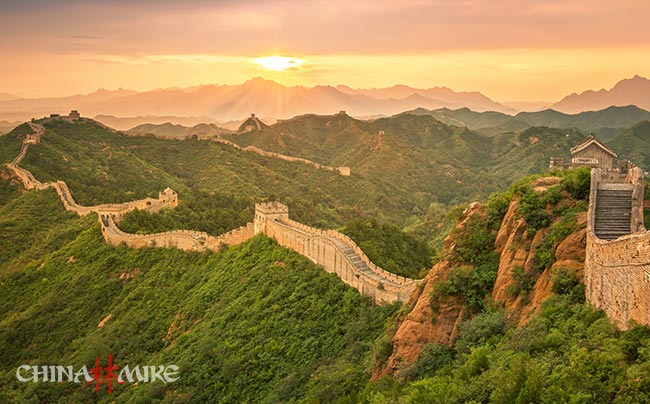
Built by a succession of imperial dynasties over the last two millennia, the network of fortifications and towers has evolved over the centuries—defining and defending the outer reaches of Chinese civilization.
During his famous visit to the Great Wall in 1972, Richard Nixon (in a Bush Jr–esque moment of eloquence) stated: “ I think that you would have to conclude that this is a great wall .” And he was right—the Great Wall of China is undoubtedly one of the ancient world’s most amazing feats of engineering.

To the Chinese, the Great Wall is known as “Wan Li Chang Cheng” (万里长), or literally, “Long Wall of Ten Thousand Li” (“li” is a measure of distance about 500m or about a third of a mile). But of course, that’s not the actual length of the wall, but just an ancient way of saying “this is a long friggin’ wall.”
And although the Great Wall is undisputedly the longest man-made structure ever built, its exact total length continues to be debated since the Great Wall of China is not a single, continuous wall as described by early Western historical accounts. Instead, it’s more accurately described as a patchwork of walls that evolved over the centuries—an overlapping maze of walls and towers that were built (or fell into disuse) by successive dynasties throughout Chinese history.
But one thing is clear: t he Great Wall is one of – if not THE – iconic symbol of China, symbolizing the perseverance and diligence of the Chinese civilization. There simply aren’t many cultural landmarks on the earth that symbolize the sweep of a nation’s history more powerfully than the Wall.
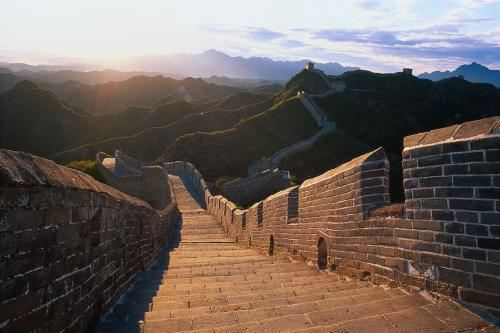
On the other hand, a number of Chinese intellectuals have pointed to the Wall as a symbol of what’s wrong with China – that it’s too conservative, focused on past glory days, and tends to look inward rather than outward.
Similarly, others see it as symbolic of the long-time Chinese practice of trying to keep out foreign cultures and influence, rather than absorbing and learning from them.
In this complete guide to the Great Wall of China, I want to explore some of the most common questions about this iconic structure, walk through a brief history of how it was built (I’ve written a more extensive history of the Great Wall of China here if you’re interested) and explain the best way for you to visit the Great Wall for yourself.
Brief History of China’s Great Wall
Building large-scale defensive walls has a long history in China. Walls often surrounded an entire city to protect against marauding nomads and enemies.
One of the earliest walls dates way back to the Shang Dynasty (1600 – 1050 BC), which built a tall, earthen-wall that enclosed an area of three square kilometers around their capital.
To see some great examples of China’s more “modern” (but still ancient) surviving city walls, head to Nanjing or Xi’an .
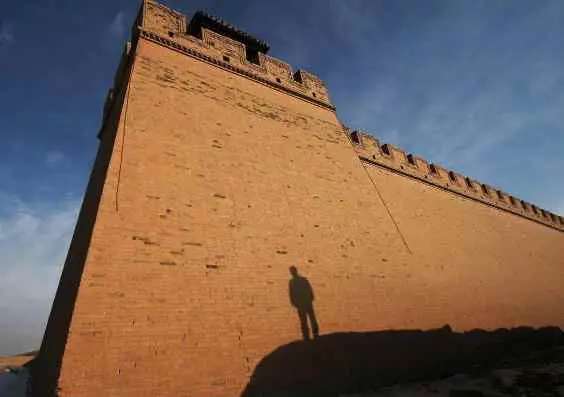
Great Wall 1.0 | The Beginnings
The earliest pieces of the Great Wall were built as early as the 5 th century BC, during the so-called Warring States Period , when rival states constructed fortifications to defend their borders and irrigated lands against their neighbors (as well as non-Chinese nomads from the north).
During this early evolution, the “Wall” was just a growing patchwork of walls used to separate rival territories. The Great Wall as a concept didn’t come into existence until the 3 rd century BC, after the legendary Qin Shi Huang unified China in 221 BC—becoming the founder of the Empire and First Emperor of China.

In 215 BC, he started the gargantuan task of creating the Great Wall 1.0 to protect China from the horse-riding nomadic “barbarians” to the north.
Of course, he personally didn’t lift a finger. But he had between 300,000-500,000 workers— mostly soldiers, prisoners, and unwilling peasants-turned-slaves—doing the dirty work. Though his dynasty was one of China’s shortest, his mark of Chinese history is indelible.
The infamously ruthless and iron-fisted First Emperor also left China with its second most famous tourist attraction: the Terracotta Army —his massive subterranean tomb filled with over 7,000 soldiers (and horses and chariots) to protect him in the afterlife.
In fact, his Great Wall project–along with other major development projects requiring massive labor–caused so much widespread suffering throughout the country that there were several (unsuccessful) assassination attempts on his life.

Great Wall 2.0 | Ming Dynasty Updates
Fast forward to the 15 th and 16 th centuries. The most impressive “modern” sections of the Great Wall were all constructed during the Ming Dynasty (1388-1644 CE).
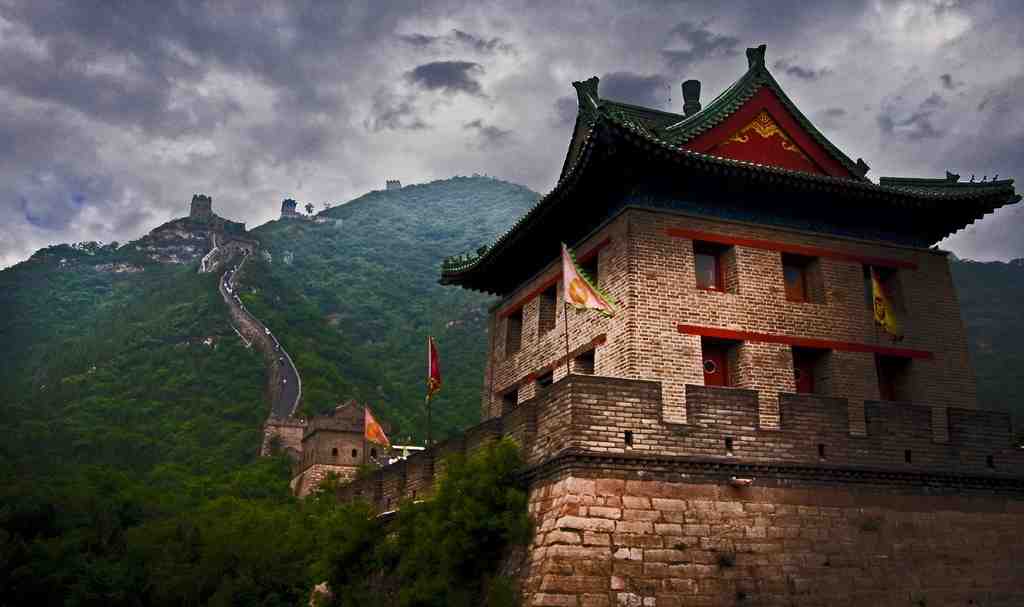
The insular Ming emperors didn’t just fortify parts of the wall…we’re talking about over a 100-year effort to completely rebuild and reinforce the wall using modern brick and mortar construction (and you thought your kitchen renovation project was a never-ending money pit!).
These Ming Walls are the impressive, sturdy brick structures that have made the Great Wall of China a popular tourist destination . They stand at almost 25 feet (7m) high and almost as wide –they were designed so that 10 soldiers or 5 horses could ride side-by-side.
Strategically spaced about 300-500m apart, watchtowers sent signals down the line using smoke, gunpowder, and flags to quickly update leaders in Beijing on enemy movements (you’d think a Twitter feed would be quicker).

Was the Great Wall of China a Failure?
Despite decades of construction and countless lives lost (it’s also referred to as the world’s largest tombstone), the Great Wall never really effectively served its function as a supposedly impregnable line of defense.
Historians all over the world consider the Great Wall of China to have been “failure” as a defensive system, although not because of any inherent design flaws. Instead, it was the human factor— political infighting, corruption, cowardice —that proved to be the weak link throughout the history of the Wall.
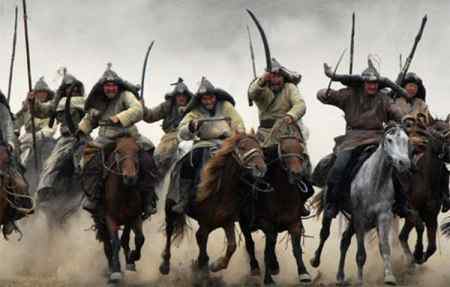
During a six-decade campaign to invade China, the Mongols penetrated the Great Wall and besieged the capital of Yanjing (now Beijing ) in 1215. Mongols were able to regularly find ways of going around sections or through the walls—often by bribing officials and guards.
Genghis Khan was alleged to have said, ‘The strength of a wall depends on the courage of those who defend it.” In 1279, the Mongols completed their takeover, becoming the first (but not last) non-Chinese group to rule the whole of China.
Even the impressive Ming Walls weren’t enough to protect China from being conquered by invaders again in the 17 th century.
In 1644, the (non-Chinese) Manchurian army from the north marched to the Wall at the strategic pass called Shanhaiguan (the First Pass Under Heaven). Since the Ming dynasty was about to be overthrown by an internal rebellion, the Ming general in charge of the pass decided to ally with the Manchus and allowed them to pass through the Wall.
The Manchus did help defeat the rebels…but then took control, declared the Qing Dynasty , and ruled China for next two and a half centuries.

The Legacy of the Great Wall of China
For all the centuries of investment—and blood, sweat, and tears—the Great Wall at least provided some other benefits.
During the Han Dynasty (206BC-220AD), the wall extended farther than any other time in history—largely due to the development of the Silk Road which extended as far west as Rome and Persia.
With traders traveling alongside the Wall in huge camel caravans, the Great Wall enabled the development of the Silk Road, which in turn increased the exposure of different cultures and new ideas, such as Buddhism.
The larger Ming-era Walls served well as a sort of elevated highway, enabling them to more easily move goods, equipment, and people across the mountainous terrain.
And while the wall didn’t effectively serve its original purpose of defending from invaders from the north, it did leave the Middle Kingdom with one of its most iconic and impressive legacies.
Of course, Chinese emperors had no way of knowing that, centuries later, China’s new invaders—the hairy barbarian Western powers—wouldn’t be coming from the north. Instead, they came by sea from the West—bringing superior military technology, opium, and later, brands like McDonalds and CocaCola.

In an ironic twist of history, some historians have commented that the original purpose of the Great Wall was to keep foreigners out…but today it’s responsible for drawing in millions of foreign tourists to China each year.
Now that I think about it, maybe China’s emperors—legendary for forward-thinking strategy—planned it that way all along (“ Some day, those big-nosed laowai will pay big money to come to China to buy cheesy ‘I climbed the Great Wall’ t-shirts. Haha! ”).
Great Wall of China – Common Questions
There are a few common questions that always get asked about the Great Wall of China. I’d like to answer a couple of them here.
1. How Long is the Great Wall of China?
The answer…depends on whom you ask. Again, since the Great Wall isn’t a single wall–but a patchwork of smaller walls built over several centuries— there’s no easy, definitive answer.
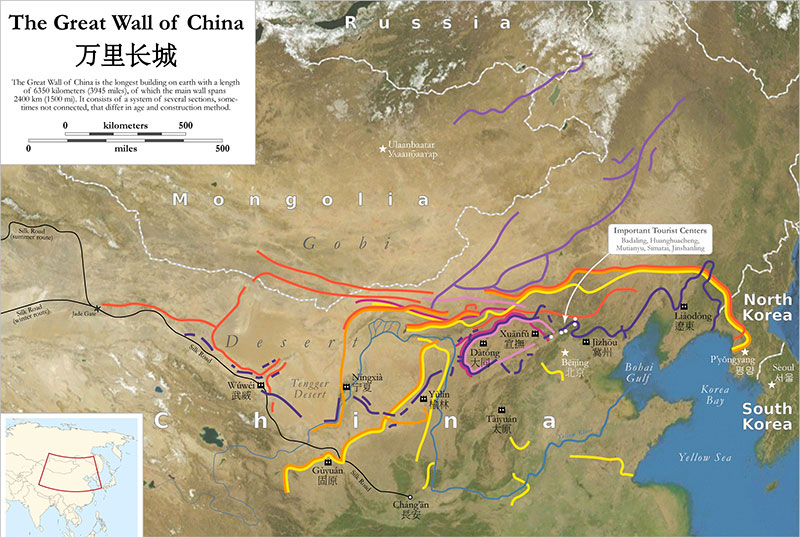
Unfortunately, there are no surviving historical records of the exact length of the “original” Qin Dynasty walls, which were first constructed over 2,000 years ago.
Naturally, most of the ancient walls have eroded away over the centuries (bricks weren’t used until much later during the Ming dynasty). Very few sections of the ancient walls remain standing today. After centuries of erosion, the vast majority of the earth and stone-constructed walls have been lost throughout China’s remote mountains and vast deserts.

Adding to the difficulty in determining an authoritative answer to the exact length of the Great Wall of China, historians are still uncovering sections of the wall.
For instance, in October 2002, a new 50-mile (80km) section of the Great Wall was discovered in northwestern China. Just a few months earlier, in August 2002, Chinese archaeologists discovered some 2,000-year old sections of the wall, dating back to the Han dynasty (206 B.C. to A.D. 220).
So the answer to “How long is the Great Wall of China” depends on how you decide to measure the wall (and what sections constitute the Great Wall).
If you just measure the distance between the Great Wall’s two farthest points, you’d come up with about nearly 6,700 km (or 4,160 miles) . But estimating the actual length of the walls, most estimates have its length between 3,900 to 4,500 miles.

Some estimates—which add together the total length of all of the various walls built during all of the Chinese dynasties—claim that the “total length” is up to 31,000 miles/50,000 kilometers (which personally seems like quite a stretch to me).
The Guinness Book of Records puts the main line length of the wall at 2,150 miles (not including 2,195 additional miles consisting of branches).
China’s Official Answer to Great Wall Length
Though the length of the Great Wall continues to be debated by people who apparently have nothing better to do, the China’s State Administration of Cultural Heritage and the State Bureau of Surveying and Mapping recently conducted the most comprehensive archeological survey of the Great Wall.
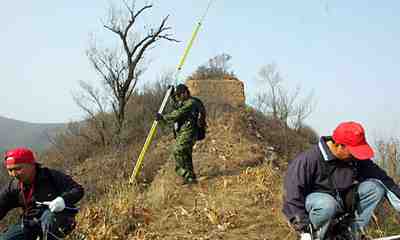
Using advanced infrared range finding and GPS technology, they even discovered new Ming-era sections of the wall in the process. In April 2009, the researchers announced the conclusion of their two-year study.
They put the Great Wall’s total length at 8,851.1 km (about 5,500 miles). So there you have it, a final answer (until someone discovers another section I suppose).
2. Can You See the Great Wall of China from Space?
You’ve probably read somewhere that the Great Wall is also the only man-made structure able to be seen by the naked eye from space (or from the moon).
Is it true? This answer is a bit more straight-forward: NO.
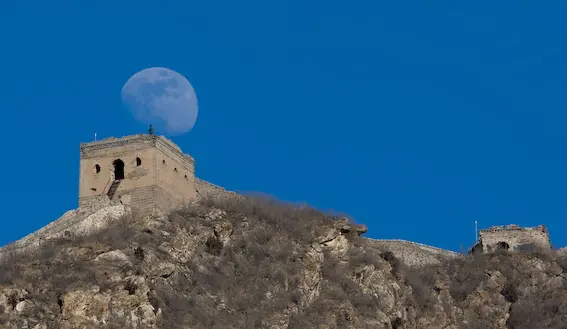
No one knows the origins of this myth, but since it was taught in Chinese textbooks for decades, my money is on an over-enthusiastic but talented official in the government propaganda department (he probably has a very successful career in PR today).
Actually, most sources trace the origins of this myth back to a 1932 Ripley’s Believe It or Not! cartoon that claimed that the Great Wall of China is “ the mightiest work of man, the only one that would be visible to the human eye from the moon .”
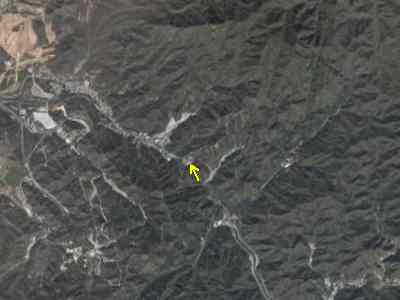
The myth continues today although it’s been debunked many times.
For instance, astronaut Jay Apt—who orbited the Earth 562 times on four Space Shuttle missions from 1991 to 1996—wrote in the November 1996 issue of National Geographic:
“ We look for the Great Wall of China. Although we can see things as small as airport runways, the Great Wall seems to be made largely of materials that have the same color as the surrounding soil. Despite persistent stories that it can be seen from the moon, the Great Wall is almost invisible from only 180 miles up .” Jay Apt
Former NASA astronaut Jeffrey Hoffman—who went on five space shuttle missions from 1985 to 1996—agreed.
“ I have spent a lot of time looking at the Earth from space, including numerous flights over China, and I never saw the wall…the problem is that the human eye is most sensitive to contrast, and the color of the wall is not that different from the ground on either side of it. ” Jeffrey Hoffman
In addition to the problem of lack of contrast, the Great Wall—though undoubtedly long—is only about 25 feet (7m) wide. China’s pollution certainly doesn’t help things either.
Even if the wall were visible from low orbit, the claim that it’s the ONLY man-made object visible is not true. In addition to being able to see cities at night, NASA astronauts have been able to see large structures, including airports, bridges, dams, and reservoirs during the day.

So clearly if the Great Wall isn’t visible by the naked eye from 180 miles away, it would not be visible from the moon, which is 238,855 miles (384,400 km) above Earth.
As if we needed additional evidence, Apollo 11 astronaut Neil Armstrong has repeatedly stated that the wall is “ definitely not visible from the Moon “. Similarly, when asked if it was possible to see the Great Wall from the moon, Apollo 15 astronaut Jim Irwin answered that it “ is out of the question “.
NASA even debunks the myth on their own website: “It has become a space-based myth. The Great Wall of China, frequently billed as the only man-made object visible from space, generally isn’t, at least to the unaided eye in low Earth orbit. It certainly isn’t visible from the Moon.” (May 2005)
Not ready to give up hope on their national point of pride, the Chinese were hoping that their own astronaut, Yang Liwei (first Chinese person in space) would give their eager reporters some good news after a 2003 mission.
He admitted that he couldn’t see it, eventually resulting in the Ministry of Education to finally remove that erroneous tidbit from their textbooks (I’m sure there were a lot more inaccuracies that they could’ve remedied too!).
But some urban (space) myths die hard. The issue came up again in 2004 after Leroy Chiao—NASA science officer of the International Space Station— took some photos that showed some sections of the Great Wall about 200 miles north of Beijing (aided by contrast from recent snowfall).
Despite the facts that the photos were taken with a telephoto lens and Chiao said that he personally couldn’t see the wall (or was even sure if the photos showed it), the photos were enthusiastically greeted by the Chinese with rejoicing and prominently featured in newspapers (“ Hey Wong, get the textbook printer back on the phone! ”)
Further Great Wall of China Info
If you think this is everything there is to know about the Great Wall of China…you would be mistaken! I’ve written quite a bit about China’s Great Wall that you might find helpful as you continue your research.
- Great Wall of China | History & Facts : Get a deeper understanding of the history of China’s Great Wall and what makes it so unique. I barely scratched the surface above, so if you have an interest in history, you’ll want to read this.
- How Did They Build the Great Wall of China? Another great question that I wanted to dedicate an entire article to. When you think about well this Great Wall has endured the test of time, you’ll understand why it’s important to understand how it was built.
- Defending the Wall : I briefly mentioned above how most people consider the Great Wall of China to be a failure (except China, of course). In this writeup, I discuss exactly how it was defended and where those failures came from.
- Great Wall of China Tourist Guide : Are you planning to visit the Great Wall yourself? Read through this helpful tourist guide before you go.
- Maps of China’s Great Wall : A collection of maps about the Great Wall of China, including tourist maps, 3D maps and others.

Photos of The Great Wall of China
Below you’ll find some great examples of photos of the Great Wall of China, broken out by section. It’s possible to visit each section of the Great Wall, but some are easier for tourists than others.
Badaling Section of the Great Wall of China
The Badaling section of the Great Wall of China is probably the most popular that a tourist can visit.
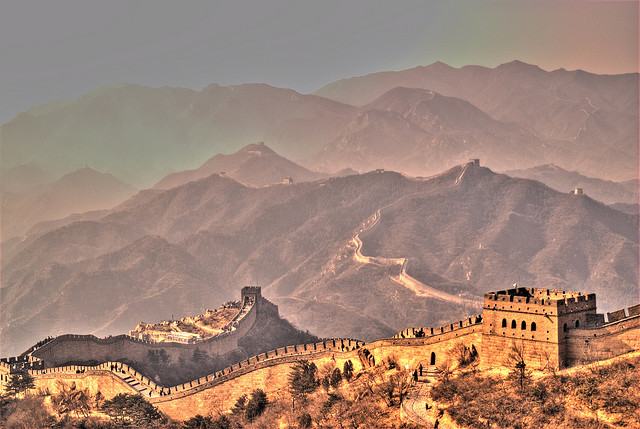
Mutianyu Section of the Great Wall of China
Mutianyu is a section of the Great Wall of China located in Huairou District within the city limits of Beijing 70 kilometres northeast of the center of the city. The Mutianyu section of the Great Wall is connected with Jiankou in the west and Lianhuachi in the east.
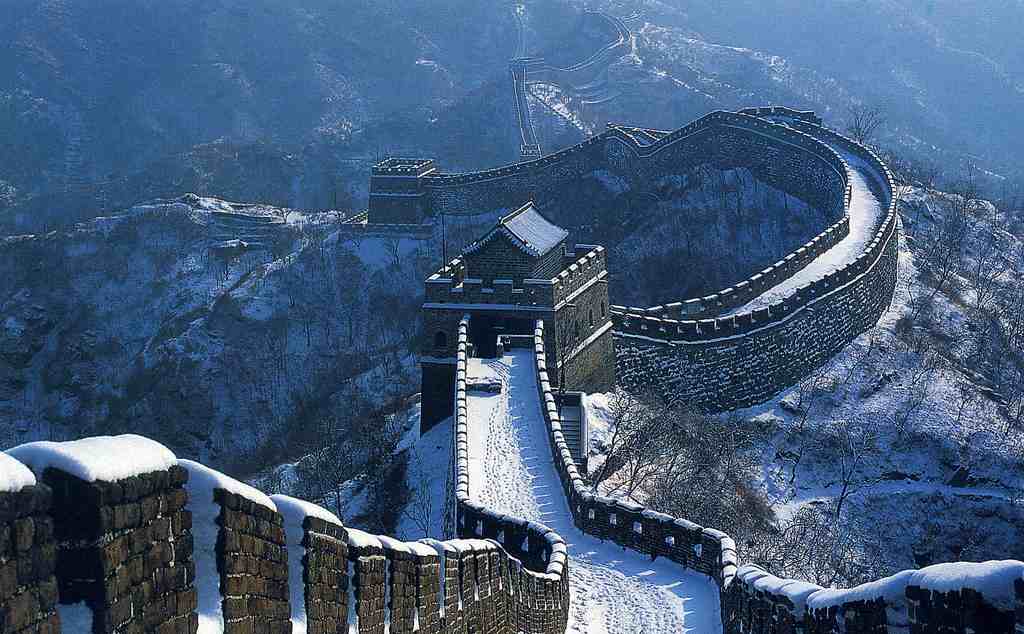
Juyongguan Section of the Great Wall of China
Juyongguan (Juyong Pass) Great Wall is one of the three most famous passes along the Great Wall of China, together with Jiayuguan and Shanhaiguan.
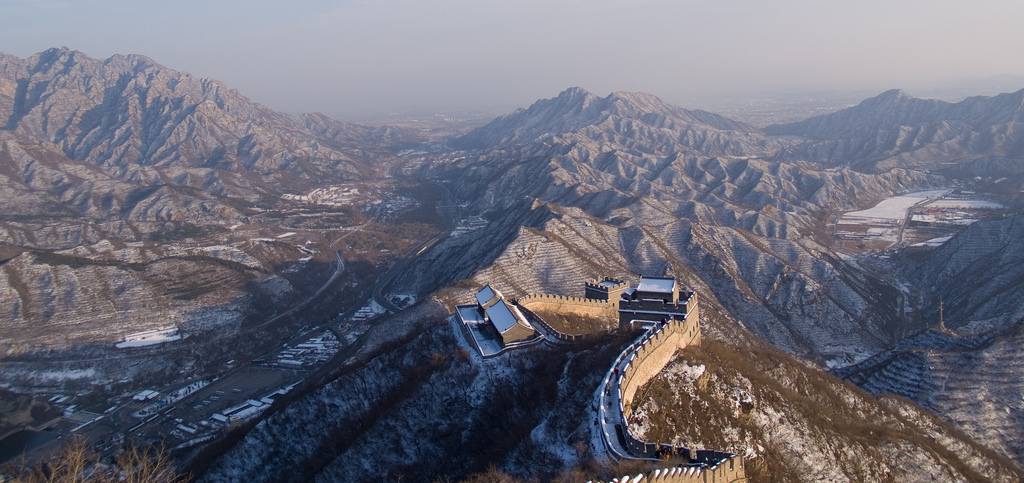
Simatai Section of the Great Wall of China
Simatai is located in the north of Miyun County, 120 km northeast of Beijing, holds the access to Gubeikou, a strategic pass in the eastern part of the Great Wall. It was closed in June 2010 but has been reopened to tourists in 2014.
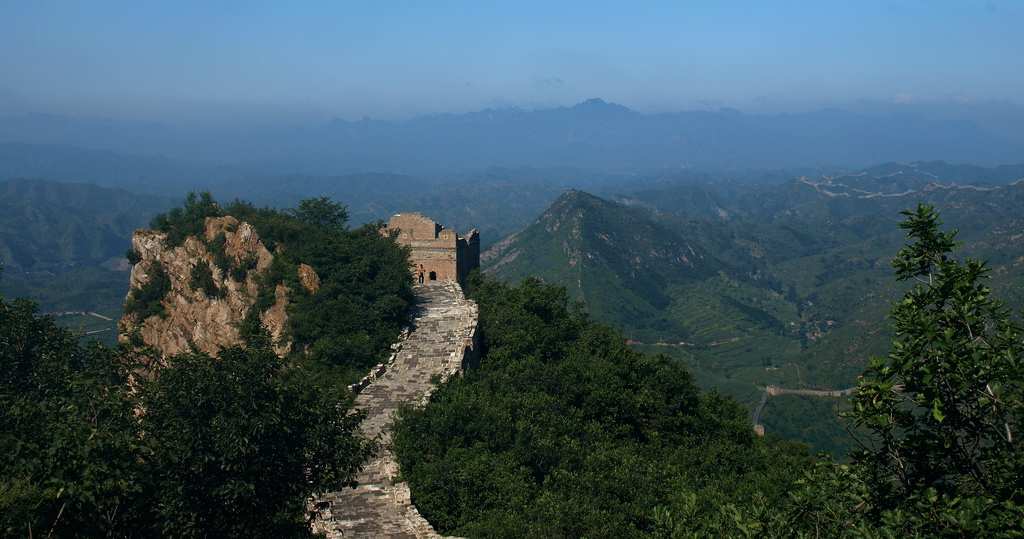
Jinshanling Section of the Great Wall of China
Jinshanling is a section of the Great Wall of China located in the mountainous area in Luanping County, Hebei Province, 125 km northeast of Beijing. This section of the wall is connected with the Simatai section to the east. Some distance to the west lies the Mutianyu section.
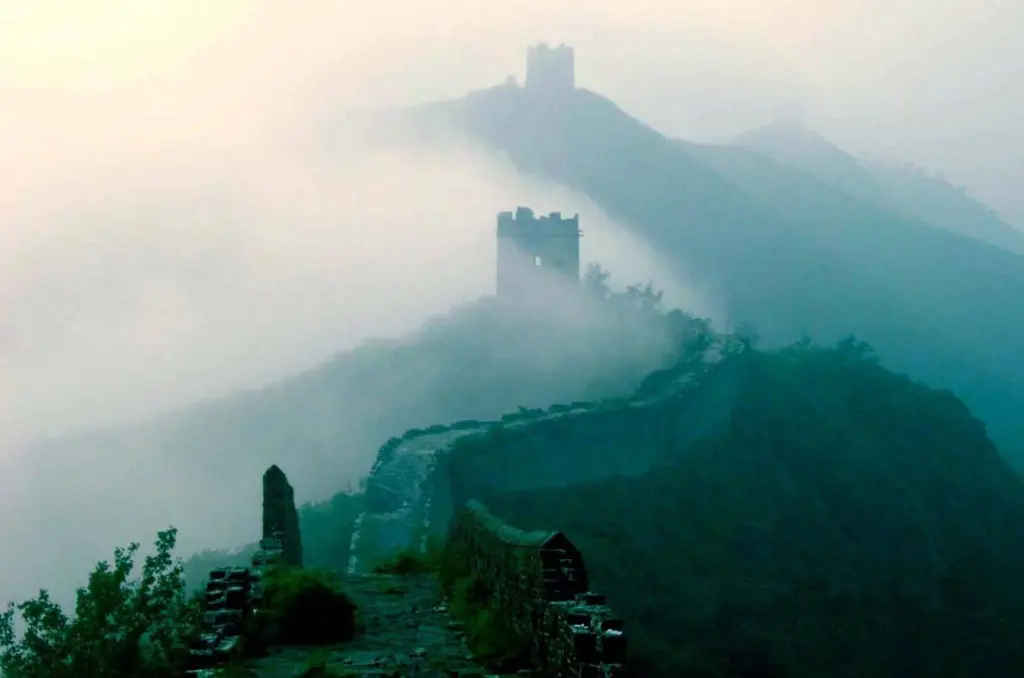
Jiankou section of the Great Wall of China
Jiankou Great Wall is one of the most dangerous and wild Great Wall sections. It is also the most photographed section due to its precipitous mountains, unique construction style, and attractive scenery.
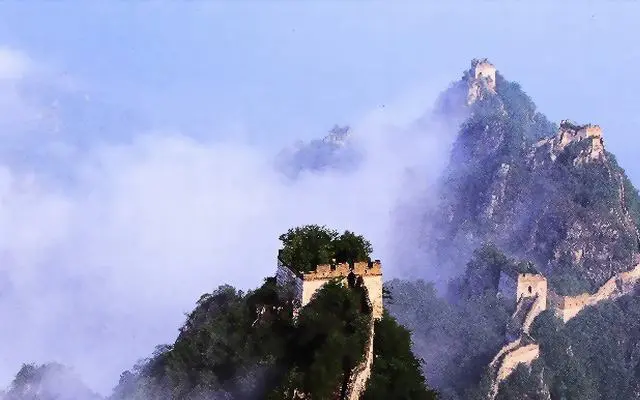
Conclusion | The Great Wall of China
It may not be visible from space, but as Nixon said, you would have to conclude that this is a great wall!
To truly appreciate the beauty and majesty of such a huge engineering marvel, you really need to visit the Great Wall for yourself. It’s only when you’ve exhausted yourself climbing an unbelievably steep set of stairs or seen the wall stretch as far as the eye can see that you find yourself scratching your head.
The fact that The Great Wall even exists is amazing.
But I guess that’s why it’s such an iconic part of China’s history and modern culture. It truly is a “Great Wall”.

Related Posts
- Facts about China: INFRASTRUCTURE
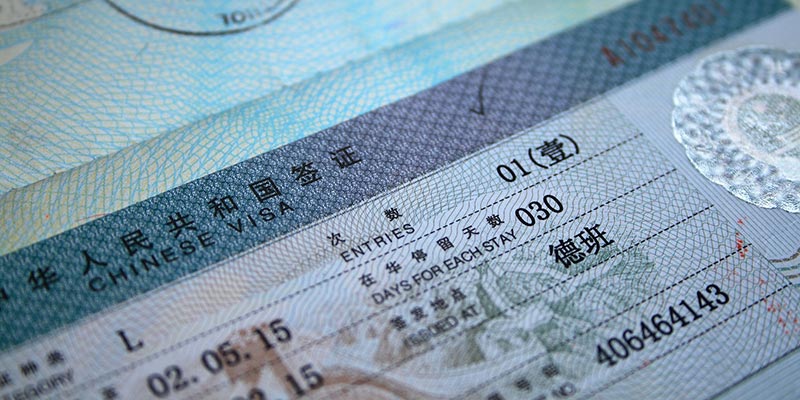
About China Mike
China Mike offers trusted resources about China and its history based on more than a decade of study and personal travel experience. His knowledge and writing on China has been used and referenced by universities, news publications and numerous online blogs.
China Travel Resources
Are you looking for quality China travel resources? Check out this breakdown of my favorite travel tips and resources.

The Ultimate Great Wall Travel Guide + The Best Sections To Visit
The Great Wall of China is one of the world’s most iconic landmarks and a must-visit destination for any traveler. With its rich history, breathtaking views, and cultural significance, the Great Wall offers an unforgettable experience for visitors from all over the world.
In this travel guide, I cover everything from the best sections to explore, the best times to visit, and a complete tour of the hiking route. Whether you’re planning your first visit or looking for insider tips for your next trip, my guide has everything you need to know to make the most of your Great Wall adventure.
Table of Contents
🌟the great wall of china | history, length, & significance, jinshanling great wall — the great wall section for photography, simatai great wall — the most precipitous great wall section, gubeikou great wall — a great wall section with rich culture, mutianyu great wall —the longest and best fully-restored great wall section, jiankou great wall — the most dangerous and challenging great wall section, huanghuacheng great wall – the only lakeside great wall, juyong pass great wall — one of the greatest mountain passes of the great wall, badaling great wall — most visited section of the great wall.
- 🗺️Map of the Great Wall
Jinshanling Great Wall
Mutianyu great wall, badaling great wall, 🎒what to pack for great wall trip.
- 🎉Tips for Exploring the Great Wall
China Travel Planning Guide&FAQ

China boasts numerous world-renowned attractions, among which is the Great Wall – an awe-inspiring sight that draws in tourists from both domestic and international locations throughout the year. A popular Chinese proverb states that a person who has not visited the Great Wall cannot be considered a true hero as they have not faced and conquered a significant challenge.
This grand ancient defense system spans over a vast area of northern China, covering 15 provinces, and passing through 404 counties. Known as Wan-Li Changcheng, its total length is 21,196.18 km (13,170.7 mi) and is divided into several noteworthy scenic spots, stretching from Shanhaiguan in the east to Jiayuguan in the west.
With a history of over 2,300 years , the Great Wall of China can be traced back to the Spring and Autumn Period (770-476 BC) and underwent its latest reconstruction during the Ming Dynasty (1368–1644). Throughout Chinese history, it went by various names such as “frontiers” (塞, Sài), “ramparts” (垣, Yuán), and “the Purple Frontier” (紫塞, Zǐsài), instead of the commonly known name “the Great Wall”.
Beyond being a mere wall, the Great Wall was a comprehensive and secure defensive system comprising an array of fortifications such as passes, watchtowers, fortresses, and blockhouses. Its strategic positioning in close proximity to cliffs enabled it to leverage the rugged landscape as a natural blockade against potential invaders.
It may be difficult to fathom, but during the era when it was constructed purely through manual labor, the Great Wall represented an astounding feat of engineering that required workers to contribute their intellectual acuity, physical exertion, and even their lives over several years to build. It is due to this immense effort that the Great Wall has become an iconic global attraction, acknowledged as “ one of the Seven Wonders of the World “, and a representation of China’s rich heritage and cultural identity.
Disclosure: This article contains affiliate links. If you make a purchase after clicking one of these links, I earn a small commission at no extra cost to you. You can learn more about this in my disclosure policy.
🌿 The 8 Sections of the Great Wall You Must Know
In terms of visiting the Great Wall from east to west, the top 8 recommended sections are Simatai, Jinshanling, Gubeikou, Mutianyu, Jiankou, Huanghuacheng, Juyongguan, and Badaling . These fortified walls serve as a stronghold in protecting the capital of China, Beijing. Each section of the Great Wall possesses distinct and unique features.

Jinshanling Great Wall is one of the most impressive and well-preserved sections of the Great Wall of China. The section spans approximately 10.5 kilometers, and more than 40 watchtowers are opened along this section, evenly distributed along the wall. The wall is built on steep mountain ridges and has a unique and beautiful appearance. It is known for its beautiful and picturesque scenery, and it has been called “the most beautiful section of the Great Wall,” so it is praised by many photography enthusiasts and known as the “ paradise of photographers “.
The transportation to Jinshanling Great Wall seems inconvenient, with a round-trip drive of more than 300 kilometers and a one-way trip of 3 hours. It takes 4-5 hours to get there in traffic jams during holidays.

The Simatai Great Wall is a stunning section of the Great Wall located 120 km northeast of Beijing. It stretches for 5.4 km and boasts 35 watchtowers along the way. What sets it apart is the Wangjinglou, the highest tower in Beijing, situated atop a steep mountain. Visitors can take in breathtaking views of the surrounding mountains and valleys.
However, it’s important to note that only a few watchtowers are currently open for visitors. If you take the cable car up the wall, you can only visit 3 or 4 watchtowers, making for a relatively short trip of less than an hour.

The Gubeikou Great Wall, which spans over 20 kilometers and includes 143 watchtowers, is a well-known tourist and hiking destination that connects with the Jinshanling Great Wall and Simatai Great Wall. There were over 130 battles took place here in ancient times. The Wall is divided into two steep and rugged sections, Panlong Mountain Great Wall and Wohu Great Wall, making it a challenging climb. The most remarkable aspect of the Gubeikou Great Wall is Gubeikou Town , which boasts a rich cultural heritage with historical landmarks such as ancient temples, pagodas, and traditional courtyard homes that have remained intact to this day.

The Mutianyu Great Wall is a segment of the Great Wall of China situated in the Huairou District, located about 70 kilometers to the northeast of Beijing. This section of the Great Wall is one of the most well-preserved parts and is quite popular among foreign visitors . With public transportation available, it is easy to reach downtown Beijing. Unlike other segments of the Great Wall, Mutianyu has not undergone a complete restoration, providing visitors with a more authentic experience of what the wall would have been like in ancient times. It spans 2.5 kilometers and boasts 22 watchtowers that functioned as lookout posts and signal stations in times gone by.
In recent years, there has been a rise in the number of domestic tourists visiting this wall which was once highly favored by foreigners. Heavy passenger traffic and large crowds are common during the holidays and summer vacation. It is advisable to depart early or visit in the afternoon to avoid crowds.

The Jiankou Great Wall section is situated in the northern part of Huairou District and is approximately 70 km from Beijing. Admission to this section is free of cost. It is known as the most dangerous and wild segment of the Great Wall, being unrestored. The southern part of this section consists of steep ridges and cliffs, and some parts of the wall have collapsed. Though favored by adventurous hikers, Jiankou Great Wall is not officially open to the public and may be dangerous for novice climbers. Tourists are suggested to be cautious and wear appropriate safety gear while approaching this part of the Great Wall. This segment of the wall is also a popular spot for photography and is one of the most frequently photographed sections of the Great Wall in recent years.

The Huanghuacheng Great Wall boasts stunning lakes, mountains, and cultural landscape, and can be easily accessed by private car from Beijing in just around 1.5 hours. It is the most popular section among the locals and a perfect choice for families with kids . What sets it apart from other Great Wall sections is that visitors can hike along the wall and enjoy breathtaking panoramic views of the surrounding countryside, which include the reservoir and the distant mountains. Additionally, the reservoir offers boat rides that provide a different perspective of the Great Wall and its surroundings. It is only suitable for visiting from April to October .

Juyong Pass is a significant fort on the Great Wall, situated in the Changping District of Beijing. It is the closest section of the Great Wall to Beijing and spans more than 20 kilometers. The region surrounding the pass is adorned with stunning natural beauty.
Although Juyong Pass has undergone restoration to its former grandeur, it has also been subject to commercialization, which may detract from the experience for those looking for a more authentic sense of the history of the Great Wall. Vendors and souvenir shops can be seen lining the main pathways. This commercialization may be viewed by some visitors as taking away from the true cultural significance of the site.

Badaling Great Wall was the first part of the Great Wall to officially open to tourists. The section stretches an approximate length of 3.7 kilometers and has a total of 43 watchtowers built along its length. It is one of the most well-preserved and most visited sections of the Great Wall, offering stunning views of the lush mountains and reflecting the Wall’s magnificence and glory. It is easily accessible through public transportation.
Except for the cold winter months, the Badaling Great Wall is a highly popular tourist destination, attracting a large influx of visitors, especially during holidays. With such large crowds come long queues, and the sheer volume of people can detract from the otherwise enjoyable experience of hiking the Great Wall. Additionally, the wall’s commercialization has resulted in the loss of much of its unique beauty, as many parts of the wall have been repaired.
🗺️ Map of the Great Wall
Below is a map that showcases the eight sections of the Great Wall discussed in this guide.
🌟 Recommended Sections of the Great Wall to Visit
I have previously visited Badaling, Mutianyu, Jinshanling, Huanghuacheng, and Juyong Pass. Out of these, my personal preference lies with Badaling, Mutianyu, and Jinshanling . These three sections offer a longer routing length with numerous scenic spots. This allows travelers to immerse themselves fully in their journey. Additionally, these sections have excellent protection measures in place and offer a wealth of amenities and services to visitors.
🚗 How to Get to Jinshanling Great Wall from Downtown Beijing
- By Bus : From mid-March to mid-November, a direct tourist bus departs from Dongzhimen Wai Bus Station in Beijing at 7:40 am. This bus is scheduled to return passengers from Jinshanling, leaving at 16:00 pm. The round-trip ticket price is approximately 120 RMB.
- Private/Group Tour : Another option is to book a private tour or a group tour from downtown Beijing, which includes transportation and a guide. For a first-time climber of the Great Wall, it’s recommended to have a guide. The guide can provide insight into the Great Wall’s history and culture and offer plenty of tips on where to eat, drink, stay, and travel in Beijing with great enthusiasm.
🎫Admission ticket: Apr to Oct: CNY 65 | Nov to Mar: CN Y55 🎫Cable Car Ticket: CNY 40 for a single trip, CNY 60 for a round trip (optional) 📍Starting location: The Front Gate 📍Reach location: Small Jinshan Tower
☀️ Best Time to Visit Jinshanlin Great Wall
The best time to visit Jinshanling Great Wall is in the spring ( April to May ) or autumn ( September to November ) when the weather is mild and the scenery is at its most beautiful. During these months, the temperatures are comfortable, and there is less rainfall, making it easier to hike the Great Wall without being too hot or too cold. You should avoid visiting Jinshanling Great Wall during the peak tourist season, which is in the summer months (June to August) and during national holidays.
🚶🏻♂️ Jinshanling Great Wall Hiking Route
When visiting the Jinshanling Great Wall, tourists can take either the eastern or western route. However, the eastern route is more popular among tourists as it offers a more magnificent view than the western route. Additionally, there are several hiking routes to choose from in the eastern area. For those with good energy, it is recommended to take the more challenging 7km route , which includes passing through Zhuanduokou Pass, General Tower, Shalingkou Pass, Small Jinshan Tower, Big Jinshan Towers, Houchuankou Pass, Eastern Five-window Tower, and finally East Gate, which can be completed in about 4 hours.
I commenced my hike from the Zhuanduokou Pass , a two-story brick and wood structure with a wooden staircase connecting the floors. After walking for some time, we arrived at Shalingkou Pass , one of the first four passes built on the Jinshanling Great Wall. The architectural design includes doors both inside and outside. These doors correspond to each other and are of the same size, serving as the only entrance to the pass. Heigu Tower is a brick arch structure, consisting of two floors, with three wood and brick rooms on the second floor. Upon descending from Heigu Tower and proceeding east, one comes across Open Tower No.1 and Open Tower No.2. After surmounting a steep barrier wall, I arrived at the Small Jinshan Tower . It is a two-story brick arch structure connected by stone stairs, providing hikers with a breathtaking view of the sunrise, sunset, and sea of clouds in Jinshan, making it an ideal spot for photography. The Big Jinshan Tower is similar in construction to the Small Jinshan Tower, located side by side. These towers are the most exquisite and complete enemy towers on the Jinshanling Great Wall.

Continuing on, I passed through an unrestored wall and a barrier wall and arrived at Houchuankou, one of the four earliest-built passes and the most important choke point of the Jinshanling Great Wall. Upon ascending a steep slope, I arrived at the Flower Tower, a brick arch structure with various Chinese auspicious patterns like flowers and beasts carved on the door and windows. Unfortunately, it had fallen into disrepair and only remnants are left. At the Flower Tower, I could see the Eastern Five-window Tower in the distance, which is the highest tower on the Jinshanling Great Wall at an elevation of 618 meters. It’s a perfect spot to take panoramic photos of the Jinshanling Great Wall and fall colors.
Next, I reached the Kylin Tower , Jinshan No.2 Tower, which is not particularly eye-catching in appearance but is one of the best towers on the Great Wall of China. It’s unique in that there is a carved Qilin shadow wall on the southern side of its roof and a unique Kylin Screen Wall positioned on its peak. The Kylin Screen Wall is made from 15 square bricks that come together to form a 3D image of a running Kylin surrounded by auspicious clouds, with its mouth slightly open and tongue sticking out and its tail raised high, giving it a lifelike appearance. But I could not get to see the Kylin Screen Wall because there are no stone stairs leading up to the top of the tower.
Finally, I walked down the Kylin Tower and ascend to the Bricks with Characters , a 520-meter-long wall with thousands of bricks with characters. As the sun began to set, I started walking back down the wall towards the Eastern Five-window Tower before exiting through the east gate, marking the end of my visit to the Jinshanling Great Wall.
🥘 What to Eat in Jinshanlin Great Wall
In the scenic area, there are numerous local specialties and farm foods that are both excellent and affordable. These farm foods are created using original ecological native vegetables, and the dishes primarily consist of pollution-free vegetables, fungi, bamboo shoots, and other green foods that you should give a try.
🏡 Where to Stay in Jinshanlin Great Wall
Jinshanling Great Wall Hotel is located at the entrance of the Jinshanling Great Wall and offers 200 comfortable rooms with modern amenities having elegant, modern decor that is inspired by the mountains and classical culture. The hotel’s Chinese courtyard is one of my favorite parts, and that night out with my friends was a blast. The breakfast buffet and authentic home-cooked northern farm dishes are served at the hotel’s second-floor restaurant.
Changhai Farmhouse is located at the foot of the Jinshanling Great Wall, only 50 meters away from the ticket entrance of the scenic spot, this hidden gem is surrounded by verdant mountain forests with refreshing air. The rooms are spick-and-span, each decked out with amenities including air conditioning, TV, WIFI, and 24-hour hot water supply. Plus, enjoy mouth-watering meals made from locally sourced ingredients like free-range eggs, fresh green seasonal vegetables, and farm-featured grilled whole sheep!
It’s important to note that the accommodations near Jinshanling Great Wall are relatively basic compared to other areas in China. However, they offer an of staying in a rural area and being close to the Great Wall.
🚗 How to Get to Mutianyu Great Wall from Downtown Beijing
- By Bus: You can take Bus 916 Express from Dongzhimen Bus Station to Huairou North Street, and then transfer to Bus H23 to Mutianyu Roundabout. The entire journey takes about 2-2.5 hours, depending on traffic. The cost is around CNY 20-30.
- By Tourist Bus Line Dongzhimen: Take the bus from Dongzhimen Wai Bus Station and alight at the Parking Lot P1 of Mutianyu to reach your destination. The bus runs from 8:30 am, and the travel time for a single journey is approximately 1.5 to 2 hours. The cost is around CNY 30.
- By Tour Bus: Many tour companies offer organized tours to Mutianyu, including transportation and a guide. I strongly suggest considering Mubus Tour , a renowned tour organization in Beijing that has gained the trust of both locals and foreign visitors. Opting for such a tour is also convenient if you prefer not to navigate public transportation independently.
🔥Tips: I don’t recommend taking a taxi because the price from downtown Beijing to the Great Wall is very expensive, ranging from CNY 200 to CNY 600. And the return trip is inconvenient because you may have to take an irregular car back downtown.
🎫Round-trip ferry ticket: CNY 15 🎫Admission ticket: CNY 40 🎫Cable Car Ticket: CNY100 for a single trip, CNY 140 for a round trip (optional) 📍Starting location: North Entrance 📍Reach location: Mutianyu Great Wall Watchtower No.14 🎫Toboggan Ride Ticket: CNY100 for a single trip, CNY 140 for a round trip(optional) 📍Starting location: South Entrance 📍Reach location: Mutianyu Great Wall Watchtower No.6
🔥Tips: Upon reaching the Mutianyu Great Wall location, visitors will need to board a ferry bus that travels up and down the wall. These buses depart every five minutes. To gain entry into the scenic area, tourists must first buy a ferry ticket and then queue up to board the bus. After getting off the ferry bus, the tourists can walk to the north ticket gate.
🔥Take note: The cable car is designed with a full enclosure and high safety features. Opting for a cable car ride can offer an enhanced view of the Mutianyu Great Wall from a higher altitude, providing a clear view of the entire wall. The majority of tourists favor taking the cable car option.
🔥Take note: The toboggan is constructed against the Wall and provides an excellent opportunity for taking in the breathtaking scenery. While thrilling, it should be noted that the toboggan is open and thus there is a moderate risk when maneuvering it up and down. As such, it may not be appropriate for elderly individuals or children.
☀️ Best Time to Visit the Mutianyu Great Wall
- Nov.1 – Nov.30 : Late autumn presents the finest opportunity to explore the Mutianyu Great Wall as you can witness the gorgeous autumn foliage in full swing with a splendid array of fiery reds and vibrant oranges covering the mountain ranges with a soothing temperature and fewer visitors to contend with.
- Sep.1 – Oct.30 : The scorching summer has come to an end, and Beijing is showing off its picturesque beauty. The lush greenery can be spotted all around the scenic areas. As it’s the start of the season, the number of tourists is still quite low.
- April.1 – May.31 : The area’s scenery is abundant with lush and verdant foliage, emitting an air of vitality. With the start of the spring outing season, tourism typically surges, leading to some waiting times on weekends; however, queues are typically short. It is recommended to plan the visit during the week and avoid weekends.
🚶🏻♂️ Mutianyu Great Wall Hiking Tour
The recommended route for visiting the Great Wall at Mutianyu is the western route, which provides several essential features for tourists. Specifically, the western section of the wall concentrates on most of the stunning scenery in the Mutianyu region and has an elevation difference greater than 600 meters. Furthermore, the western route concludes at “Hero Slope”(好汉坡), which is the highest point of Mutianyu and gives visitors a must-see view.
There are two options for hiking the western route of the Mutianyu Great Wall. The first option is to start at the entrance and hike to Watchtower No.20. However, this route is quite challenging and takes at least three to four hours to complete. You’ll need to hike 600 steps just to reach Watchtower No.6. This option is not recommended if you’re not up for a strenuous hike.
I highly suggest the second option , as it has worked for me in the past. You could ride the cable car to Watchtower No.14 and continue your journey on foot from there. This would offer you an opportunity to relish the picturesque sight at your own pace, without exerting too much effort. From Watchtower No.14, simply head towards the west, in the direction of Watchtower No.23. This stretch of the wall presents mesmerizing views that should not be missed.

I first took the cable car to Watchtower No.14 entrance and then made my way up to the Mutianyu Great Wall viewing platform. I also noticed a special area where tourists are allowed to leave their graffiti scrawls. Moving to the west toward Watchtower No.15, I encountered a gently sloping area surrounded by striking scenery. From Watchtower No.16 to No.18, the section remains relatively easy, providing a comfortable journey. However, the hike from Watchtower No.19 to No.20 was the most challenging part of the journey, with an increasingly steep slope and hundreds of steps to climb.
When climbing to the peak of Watchtower No.20 , which is the highest point of the Mutianyu Section, I was treated to breathtaking views of the Jiankou section. Here have the option to turn back or continue exploring. Although most tourists opt to backtrack from this point, there is still plenty to explore beyond the Wall.
I chose to continue, walk through Watchtower No.20 and enter the unrestored ancient Great Wall. It’s a challenging hike, but worth it for the incredible views. It took about 15 minutes to reach Watchtower No.21, which was still a difficult section due to the steep slope.
From Watchtower No.22 to No.24, the path becomes much smoother and the wild wall and old bricks just took my back in time. Finally, when I arrived at Watchtower No.26, I was rewarded with a breathtaking view of the Jinshanlin Great Wall in the distance. It was a thrilling experience and I had a great sense of accomplishment for making it to the summit.
🥘 What to Eat in the Mutianyu Great Wall
When exploring the Mutianyu Great Wall, certain travelers opt to bring their own food, consisting of essentials like water and bread. However, if one desires to indulge in a tasty meal following the hike at the Mutianyu Great Wall, a plethora of options are still available. Choices include well-known fast food establishments such as Burger King and Subway, the dumpling house , the Thai restaurant , and the lovely tea house . As the Mutianyu Great Wall is a highly sought-after tourist attraction, dining here may tend to be on the expensive side.
🏡 Where to Stay in the Mutianyu Great Wall
Wangshanyuan Farm Stay is perfectly situated within the Mutianyu scenic area, offering an exceptional location. During my stay, I was accommodated in a clear and cozy tatami room equipped with floor heating. Additionally, the rooftop features a delightful terrace adorned with trampolines, swing chairs, and more. The proprietor of the hotel is exceptionally kind and attentive in their service. For instance, they graciously upgraded my room at no extra cost when there were fewer guests. Furthermore, he can drive the guests to the entrance of the Great Wall, assisting with ticket purchases at a lower cost than buying individually. The meals served were homestyle and mouthwatering, particularly the delicious pancakes and chicken stew.
Mutianyu Great Wall Hotel is adjacent to the scenic cable car station and toboggan ride. The retro architectural style of the building blends in nicely with the surroundings, while the interior is beautifully decorated with nice furnishings and strong floor heating. However, the double room size is small, and the door is very close to the bed, which can be a bit cramped, and the sound insulation is not ideal. Despite this, the hotel’s restaurant is noteworthy, serving up delicious food, including freshly baked bean buns. If you book the Parent-child Family Room, you can enjoy the added bonus of three entrance tickets and two cable car round-trip tickets.
The Great Wall’s Badaling section is segregated into two parts; the North and South sections , both with unique features. The Southern section of the wall is comparatively shorter than the northern section, about 1,300 meters long. A cable car can take you directly to the South Fourth Tower, which is the highest spot in the entire Southern section of Badaling. The southern section poses less difficulty and has a lower influx of tourists, unlike the comparatively steeper northern side. The northern section is longer with more complete facilities and scenic spots like the ‘Good Man Slope.’
The essence of the Great Wall of Badaling lies in its northern section which spans a distance of about three kilometers from Guancheng up to the North Twelfth Tower. The North Eighth Tower is not only the tallest tower of Badaling but is also the most frequently visited spot where visitors can appreciate the grandeur of the Great Wall from its viewing platform. The North Twelfth Tower marks the end of the scenic area, and it is relatively unvisited by tourists.
In reality, a large portion of sightseers typically gravitates towards the northern section due to its greater renown.
🚗 How to Get to Badaling Great Wall from Downtown Beijing
- By Bus : Take Bus 877 from Deshengmen Bus Station, which is near Jishuitan Subway Station on Line 2. The bus runs from early morning until late evening, and the journey takes around 2 hours. The cost is approximately 12 yuan.
- Tourist Bus Line 1 : Take the Tourist Bus Line 1 located the Southwest of Qianmen Arrow Tower, and alight at the Badaling Guntiangou Parking Lot. A payment fee of CNY 20 in cash is required per person. A single journey is estimated to be approximately 100 minutes.
- Group Tour : This comprehensive day trip from Beijing offers a guided exploration of both the Great Wall of China and the Ming Tombs. The knowledgeable and friendly guide will accompany you throughout the tour. Additionally, the itinerary includes visits to a Jade store and tea shop, providing an enjoyable experience for those interested in such activities.
🎫Admission ticket: Apr to Oct: CNY40 | Nov to Mar: CNY35 🎫Cable Car Ticket: CNY100 for a single trip, CNY 140 for a round trip (optional) 📍Starting location: Guntiangou Parking Lot 📍Reach location: North Eighth Tower 🎫Toboggan Ride Ticket: CNY80 for a single trip, CNY 100 for a round trip(optional) 📍Starting location: Bear Garden at the front mountain 📍Reach location: North Fourth Tower
☀️ Best Time to Visit the Badaling Great Wall
It is recommended to plan a visit in either the spring season ( April to May ) or autumn ( September to November ). Due to the difference in altitude, the arrival of spring in Badaling is frequently delayed until April or May. During this season, the sun illuminates the ridge, while the valley is decorated with green peach blossoms, apricot blossoms, camellias, and numerous unknown species of wildflowers. Autumn is the most picturesque scenery of the four seasons in Badaling, with the maple leaves gradually changing into a stunning red color during late September. The beautiful red hues are quite striking and breathtaking.
🚶🏻♂️Badaling Great Wall Hiking Tour
It took me around 3 hours to walk the entire north section of Badaling on a cool autumn date last yeast. From North First Tower to the North Fourth Tower should be regarded as a relatively gentle journey in the whole Badaling Great Wall, and visitors are relatively few, you can stop and take a snapshot.

North Eighth Tower is the highest tower in Badaling, providing a beautiful view of the Great Wall. But it is also the most crowded area. I arrived here around 9:30 am, but I was not able to hike up. A lot of tourists returned by the same route.
From North Eighth Tower to North Twelfth Tower is quite steep and less crowded that it is not recommended for visitors with children or the elderly. When you arrive at North Twelfth Tower (the end) and you should return to North Tenth Tower to get down.
If you want to avoid the large groups of travelers, you can take a toboggan ride from the entrance to North Fourth Tower, and hike from North Fourth Tower to North Twelfth Tower. And also you can take a cable car from North Eighth Tower to get down to end your journey.
🥘 What to Eat in the Badaling Great Wall
There are many restaurants near the Badaling Great Wall that offer Chinese cuisine , including local specialties such as Peking Duck, Kung Pao chicken, and steamed dumplings. Some popular restaurants include the Beijing Baifengtang Restaurant and the Commune by the Great Wall. If you are looking for a quick bite, there are also several snack vendors near the Great Wall selling items like grilled meat skewers, roasted corn, and steamed buns. There are also some Western-style restaurants near the Great Wall that serve burgers, pizzas, and sandwiches. Additionally, some visitors choose to bring their own food and have a picnic on the Great Wall itself. However, please be mindful of the rules and regulations regarding food and waste disposal.
🏡Where to Stay in the Badaling Great Wall
The Great Wall Old Courtyard Ancient Inn is a charming hotel that reflects the traditional courtyard style of Beijing. The accommodations are exceptionally clean, comfortable, and well-appointed. The owner is hospitable and attentive, offering luggage assistance and valuable travel advice. In addition, the inn offers free coffee and drinks, and the breakfast selection includes congee, steamed buns, and eggs, all of which have a light and satisfying taste. However, one drawback is that the rooms are quite small, and the sound insulation is not optimal. As there are multiple rooms within the courtyard, there may be occasional disturbances from other guests staying in the same area.
Comfortable and sturdy walking shoes or hiking boots with good traction . The Great Wall can be steep and uneven, so you’ll want to have footwear that can handle the terrain.
Sunscreen, hat, and sunglasses. The sun can be intense, especially during the summer months, so it’s important to protect yourself from the sun.
Water and snacks. The Great Wall is long and there may not be many opportunities to buy food or drinks along the way. Be sure to bring plenty of water and some snacks to keep you energized.
Sportswear. If you plan to visit the Great Wall at Badaling or Mutianyu, you can wear short sportswear, but if you plan to visit the undeveloped section of the Great Wall that is covered with wild jujube and weeds, it is advisable to wear long-sleeved sportswear to avoid scratches.
Camera or smartphone with a good camera. The Great Wall is a stunning site and you’ll want to capture some great photos to remember your trip.
A small backpack or bag to carry your belongings. You’ll want to keep your hands free while walking on the Great Wall, so it’s helpful to have a small bag to hold your essentials.
Trekking Pole. A trekking pole could be a helpful tool to help you navigate the sometimes steep and uneven terrain. Ensure it’s lightweight and collapsible so you can easily carry it when not in use.
Tissue. It is advisable to bring along tissues or toilet paper when visiting the Great Wall, as it is not uncommon for the restrooms at the site to lack sufficient toilet paper or for the lines to be lengthy. Therefore, it can be helpful to have your supply on hand just in case.
Pouch to collect the garbage. If you happen to visit some remote and less developed sections and have a scarcity of dustbins, it would be helpful to bring along a small bag or pouch to collect your garbage until you come across a suitable place for its disposal.
Cash. Many vendors and attractions on the Great Wall only accept cash, so be sure to bring enough money with you.
🎉Tips for Exploring the Great Wall
Choose the right section: There are many sections of the Great Wall to explore, each with its own unique characteristics. Some sections are more touristy and easier to access, while others are more rugged and require hiking. Do your research and choose the section that best fits your interests and abilities.
Consider hiring a guide: If you want to learn more about the history and significance of the Great Wall, consider hiring a guide who can provide you with a more in-depth experience.
Watch your step: Some sections of the Great Wall are in disrepair and can be dangerous to walk on. Be sure to watch your step and stay within safe areas.
Be respectful: The Great Wall is a symbol of China’s rich history and culture. Be respectful of the environment and avoid damaging or defacing any parts of the wall.
Plan your trip ahead of time: The Great Wall is a popular tourist destination, so it’s important to plan your trip ahead of time to avoid crowds and ensure that you have the best experience possible.
Be conscious of certain vehicles that are not authorized: Avoid taking unlicensed or unauthorized vehicles to prevent being overcharged or taken on unnecessarily longer routes.
Be aware of scams: Unfortunately, there are some scams targeted at tourists visiting the Great Wall. Be cautious of anyone offering you tickets or tours that seem too good to be true, and always confirm prices and details before agreeing to anything.
🎫Do I need a visa for China?
Yes. Most visitors to China will need a visa to enter the country. The type of visa you need will depend on the purpose and duration of your trip, as well as your nationality. If you are a resident of the US, you must apply for a Chinese visa at the Consular Office in the country. On the other hand, inhabitants of countries like Japan, Canada, and the UK can request a visa through the Chinese Visa Application Service Center .
🤔 Why is it necessary to install a VPN in China?
In China, the government has strict regulations on internet access, leading to the blocking of popular websites and social media platforms such as Facebook, Twitter, Google, and YouTube. To access these sites, a VPN is suggested as a means of bypassing the restrictions. It is important to choose a reputable VPN provider and use caution while doing so. ExpressVPN has been historically deemed the most reliable VPN for this purpose, despite being heavily targeted by China’s censors. Nevertheless, it is still a widely preferred option owing to its ease of installation and user-friendliness.
📲 Is it necessary to have a Chinese SIM card while in China?
Yes. It is crucial to acknowledge that accessing the internet in China may pose limitations due to certain websites being prohibited or filtered. To ensure uninterrupted connectivity while staying in China, purchasing a local SIM card is advisable. For optimum results, acquiring SIM cards from either China Unicom or China Mobile is recommended. While China Mobile has the most comprehensive coverage in China and is a market leader, China Unicom is more compatible with foreign phones, enabling 3G and 4G services. Or you can purchase a SIM card online .
🔮 Should I buy China travel insurance?
Yes. Although China is generally a safe country for travel, it is still possible to encounter accidents or other unexpected occurrences. Therefore, obtaining travel insurance can provide a sense of security and financial protection. In my research, I have found that World Nomads is a reputable travel insurance provider that covers a wide range of activities and is recommended for the average traveler. Nevertheless, I advise you to compare insurance quotes from various providers before making a decision.
🚙 Can you rent a car in China?
Unfeasible . Obtaining a Chinese driver’s license to rent a car and self-drive may seem like an option, but it is not a practical choice for most foreigners. Therefore, many prefer to opt for a driver or public transportation when navigating China, as it proves to be more convenient.
✈️ What’s the best site to purchase flight tickets for China?
I suggest using Trip for affordable flights to China. As a China-based company, they often offer lower prices compared to foreign companies. Additionally, they offer English-speaking phone support in case of any issues.
🏡 What is the best way to book hotels in China?
Not only does Trip offer a wider range of flight options, but it also provides a greater selection of hotels to choose from. Moreover, Agoda is a reliable resource for hotels throughout Asia.
🎒What do I pack for China?
Travel adapter and converter: China uses a different electrical system than many other countries, so it’s important to bring a travel adapter and converter if you plan to use electronic devices such as phones, cameras, and laptops. Sunscreen: The UV index in China can be high, particularly during the summer months, and prolonged exposure to the sun without protection can cause skin damage and increase the risk of skin cancer. Deodorant: It should be noted that finding deodorant in China may not be a simple task.
📚 Can a guidebook for traveling to China be useful?
Yes . If you’re planning to travel to China for the first time, a travel guidebook can be a valuable resource, and Lonely Planet is one of the most reputable guides available globally. Its comprehensive itineraries and recommendations take into account your personal preferences and can save you both time and money. The insider tips are also extremely helpful in navigating China’s unique cultural landscape like a local.
Enjoy these related articles

Leave a Reply Cancel Reply
Your email address will not be published. Required fields are marked *
Name *
Email *
Add Comment *
Save my name, email, and website in this browser for the next time I comment.
Post Comment
Must-see attractions in The Great Wall

Jiankou Great Wall
The Great Wall
For stupefying hikes along perhaps Beijing’s most incomparable section of Wall, head to Jiankou, where white-knuckle sections like ‘Upward Flying Eagle’…
Jinshanling
Jinshanling Great Wall, near the town of Gubeikou, has been thoroughly restored, but it's distant enough from Beijing that it sees far fewer tourists than…
Famed for its Ming-era guard towers and excellent views, the 3km-long section of wall at Mutianyu, northeast of Beijing in Huairou County, is largely a…
Simatai, built during the reign of Ming dynasty emperor Hongwu, is famed for the precarious steepness of its battlements as they soar up the 'heavenly…
Historically a strategic portal between the fertile lands of the capital and the more arid plains beyond, Badaling has been called the ‘Key to Northern…
China Great Wall Museum
This sizeable museum blusters through a history of the Wall, from its origins as an earthen embankment in the far-off Qin dynasty (221–207 BC) to the Ming…
Gubei Water Town
Cashing in on the magnificent Simatai Great Wall that overlooks it, this faux-historic village of waterways and old courtyards is a commercial venture…
More destinations you need to see


The Thrill of Pursuit
- Anywhere/Everywhere
- Light/Dark Mode

The Ultimate Guide to Visiting the Great Wall of China
Arguably the most recognizable symbol of China, the Great Wall has served as a major tourist attraction since the 1800s. As the longest man made structure in the world, it is easy to see why! Today, sections of the Great Wall are still the most visited tourist attractions in the country. The Great Wall of China earned a spot as one of the New 7 Wonders of the World in a global survey.

For generations, this great engineering feat has captured imaginations around the world. As the most fantastical place I’ve heard of as a kid, the Great Wall was definitely at the top of my list of things to see when I grew up.

Many Beijing itineraries often highlight the Great Wall of China as a MUST-visit destination. In this post, I list everything you need to know before planning your visit!

Disclosure: The links below are affiliate links. At no additional cost to you, I will earn a commission if you click through and make a purchase. The commission will go back to the maintenance of this website.
What is the Great Wall of China?
What foreigners know today as the Great Wall of China is a collection of fortification systems. Contrary to popular belief, you cannot see the Great Wall of China from space nor is it one continuous wall. It is generally built across the historical northern borders of China.

The official length of the Great Wall is 21,196 km (13,170 mi). It is estimated that about 9% of the Wall has been lost forever to erosion and natural disasters. Additionally, in the 1950s, the government encouraged farmers to take portions of the Wall, using the pillaged materials to construct new homes. Approximately only 8% of the Wall is considered to be in good condition.
In recent history, the Chinese government has put conservation efforts in place to preserve this World Wonder.
Who built the Great Wall of China?
The Wall as we know it today was first commissioned by the First Emperor of China in 221 BC. Subsequent dynasties commissioned additions to the Great Wall, most notably – the Hans between 202 BC and 220 AD, the Northern Qi between 550 and 574, the Jurchen Jin between 1115 and 1234 and the Ming from 1369 to 1644.

Construction techniques used during the Ming dynasty were by far the most sophisticated and the strongest. They used bricks and stones instead of the rammed earth employed by the dynasties before them. The most prevalent pictures of the Great Wall as we know it today are all Ming era additions.

Forced labor was instrumental in constructing the Great Wall of China. It is estimated that millions of soldiers, peasants, and convicts were conscripted in order to build the Wall. Throughout Chinese history, many dynasties sentenced convicts to work on the Great Wall as punishment. According to accounts, if a convict died while serving their sentence, a member of their family had to take their place. It is estimated that hundreds of thousands of people died while constructing the Great Wall. This earned it the nickname of “longest graveyard in the world”. It’s worth noting, however, that researchers have not found any human remains within the Great Wall of China itself.
Why was the Great Wall of China built?
The main purpose of building the Great Wall was to defend against hostile armies and to unite the new empire under the First Emperor. Subsequently, the Wall served purposes such as border control, imposition of taxes on goods transported along the Silk Road, regulation of trade, and immigration control.

The Great Wall was a fantastic defence mechanism. However, it couldn’t prevent discontentment within the Chinese empire. In 1644, the last Ming emperor died by suicide when their capital of Beijing fell to a peasant rebellion. The commanding Ming general formed an alliance with the Manchus from north of the Wall to help get rid of the rebels in Beijing. The general left the gates of the Great Wall open to let the Manchus in.

The Manchus did expel the rebels out of Beijing… but they also defeated what remained of the Ming resistance. They then established Qing dynasty. Under the Qing dynasty, the Chinese empire expanded north beyond the Wall, towards Mongolia. This made the Great Wall of China obsolete, leading to the discontinuation of construction.
I toured China with G Adventures and absolutely loved my visit. While the exact itinerary I chose is currently not available, t his comparable tour will take you to the country’s highlights .
Where is the Great Wall of China?
Generally speaking, the Great Wall lies on the northern borders of historic China. It is so long that it crosses 23 degrees of longitude and 15 provinces/principalities/autonomous regions. The Wall stretches from China’s border with the Democratic People’s Republic of Korea at its easternmost point to Lop Lake near present day Mongolia at its westernmost point.

More like this: check out 5 Tips for Visiting Chichén Itza
4 Tips for Visiting The Great Wall of China
If you are ready to start planning your visit to the Great Wall of China, here are my 4 essential tips to help:
1) Decide on which section is right for your visit.
To preserve this World Wonder, authorities manage the Great Wall through various sections. Some sections have been fully restored while others have retained most of its original construction. Deciding on which sections are worth visiting depends on personal preference as each section is unique.
In this section, I expand on the pros and cons of the 5 sections that are commonly accessed via Beijing.

This section for the Great Wall has been heavily restored and has been open to the public since 1958. It is the closest section to Beijing and is the easiest to access via public transportation. Badaling is the most popular with local visitors and is the most visited section of the Great Wall. Authorities had to impose a daily cap of 65,000 visitors.

They have outfitted the Badaling section with fast-food restaurants, souvenir shops, handrails, and heavily restored brickwork. It has been made more accessible for those with limited mobility. There is also a cable car and a “pulley car” that you can ride to and from the Wall.

Operating Hours and Fees
This section of the Great Wall is technically not open to tourists. It is not ticketed or maintained. Nature has reclaimed portions of this stretch. Nevertheless, adventurous trekkers and photographers have hiked this stretch of the Wall over to the Mutianyu section.
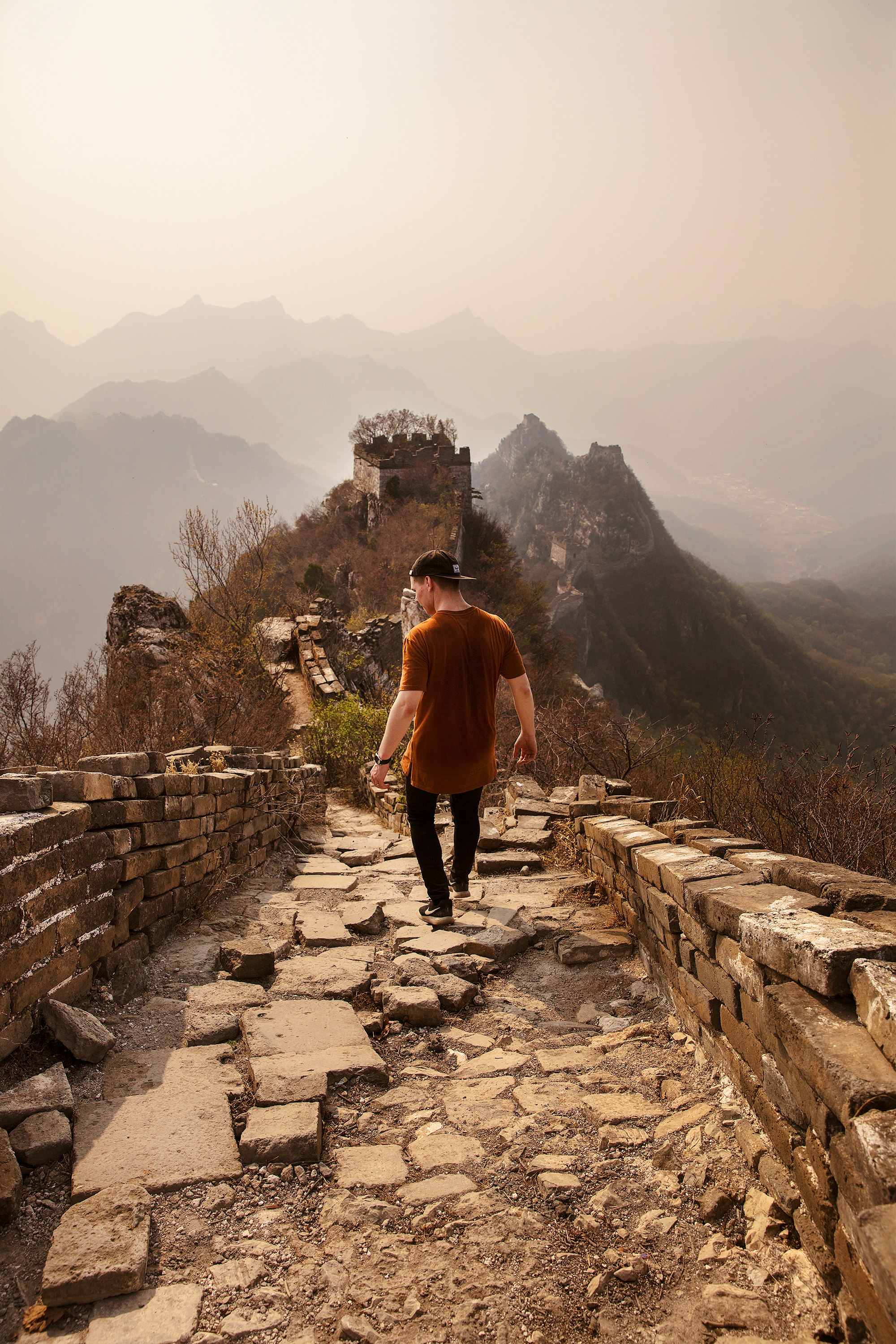
If you do choose to take on the epic hike, do so with a guide and with companions . Battlements are unstable and should anything happen to you, help is a long way away. This hike is also not for those with a fear of heights.
This section of the Wall was fully restored and opened in the 1980s. You can get a glimpse of the unrestored Ming walls beyond Tower 23 (enter at your own risk!). Mutianyu is the most popular section with foreign visitors and is the ideal section for first time visitors. This stretch of the Wall is about 3 kms (almost 2 miles) long and is less busy than Badaling.

Mutianyu is known for its amazing panoramic views (especially after the steep climbs to Towers 1 and 23) and for its high concentration of guard towers. The hike from the Jiankou section to Mutianyu is quite famous and is HIGH on my China bucket list.

For those traveling with their little ones, many consider this section to be the most kid-friendly. The area between Towers 4 to 19 is relatively flat and is suitable for those with limited mobility. On site, there are a couple fast food options. You can also opt to take a cable car, a chairlift or climb 800 steps to get to and from the Wall. In addition, there are toboggans you can ride down from Tower 6.

For those that are short on time, allocating a half day of your Beijing itinerary is sufficient for this stretch of the Wall.
Jinshanling
Sections of this 10.5 km (6.5 mi) stretch of the Wall have been restored, though there are portions that were left untouched. Relative to Badaling and Mutianyu, this section is further away from Beijing and therefore a little tougher to reach. Though this also means that it is far less busy than Badaling and Mutianyu.

Many locals claim that Jinshanling is the most scenic among all the sections mentioned on this list. A hike from Gubeikou to Jinshanling is also quite famous and less strenuous than the Jiankou-Mutianyu hike. Note: the entrance fees at Gubeikou does not cover access to Jinshanling and vice versa.
To save time and energy, there is a cable car available to take people to and from the Wall. Regardless, you will need to allocate a full day to your Jinshanling visit to make the trek from Beijing worth it.
O perating Hours and Fees
This section of the Wall has retained much of its original appearance and is famous for its steep climbs and extraordinary views. Visitors can observe various patterns of construction here. It is also the only section of the Wall that offers a nighttime tour (although it is limited to Towers 5 and 6).
Due to its steep terrain, it is not advisable for those traveling with small children, the elderly, or individuals with limited mobility to visit this section. Additionally, it is not recommended during windy and rainy conditions as it becomes very slippery. For these reasons and because Simatai is a two hour drive from downtown Beijing, it is one of the less busy sections of the Wall.

If you are planning a visit to Simatai, make sure to buy your ticket 24 hours in advance as there is a daily limit to the number of visitors for this section.
2) How to get there…
This section varies greatly on which parts of the Great Wall you wish to see. Below, I explain how to reach each section from downtown Beijing.
By private car/organized tour group – this is the easiest option as you can arrange to get to the Wall as soon as it is opened to beat the crowds.
If the mention of “tour group” conjures visions of getting herded from place to place, it’s actually not that bad. Your guide will likely provide information about the place, be available for questions, but you usually have the freedom to explore on your own. Just make sure to meet at the designated meeting times so you do not miss your ride back to Beijing!
To help find organized tour groups to Badaling, check out this site .
By public transportation – you can take the 877 bus from Deshengmen bus station. This is a non-stop bus that would take 1-1.5 hours to get to Badaling.
There is also a tourist bus that you can catch southwest of Qianmen Arrow Tower, south of Tiananmen Square. This is slightly pricier than the 877 bus but each bus has tour guide on board.

By organized tour – as previously mentioned, if you plan on visiting Jiankou, I HIGHLY recommend going via an organized tour. To help find small, organized group hikes from Jiankou to Mutianyu, check out this link .
By private car/organized tour – this is the option I chose for my visit to the Great Wall. It was absolutely hassle free that at the time of writing I struggled to remember how I organized my personal adventure!
To help find organized tours to Mutianyu, check out this site .

By public transportation – there are 2 options available for those wanting to take public transportation to Mutianyu:
- The Mutianyu Great Wall Shuttle from Dongzhimen Wai Bus Station. This bus departs daily at 8:30 am and returns to Beijing at 4:00 pm. It goes directly to Mutianyu from Beijing. The downside to taking this route is that 7.5 hours is WAAAY too long at Mutianyu. In my opinion, you only need to allocate 4 hours MAXIMUM at Mutianyu to get the most out of your day.
- The 916/916 Express from Dongzhimen Transportation Hub to the Huairou North Avenue Bus Station. Departures starts at 8:30 am daily for this route. You will need to transfer to the H23 bus line when you reach Huairou Bei Da Jie stop (it is the 15th stop on the 916 Express). The H23 bus does not come as often as the 916, so some patience is needed. You will need to get off at the Mutianyu roundabout.
Important tips on taking public transport to Mutianyu:
Dongzhimen Wai Bus Station is harder to find than the Dongzhimen Transportation Hub though they are only 800 m apart. If you’re taking the 916/916 Express to Mutianyu, there will most likely be people who seemingly speak good English and will try to convince you to get off the bus before the proper stop at Huairou. Once off the bus, their taxi driver friends will offer to drive you to Mutianyu for slightly elevated prices. Not the end of the world if you get lured off the bus… You can wait for the next bus at the stop where you got off or take the taxi drivers up on their offer (though you would most likely be out 50 CNY on top of the 12 CNY bus ticket you paid for). When you get off at the Huairou Bei Da Jie stop, there will be PLENTY of taxis offering to drive you to Mutianyu if you don’t want to wait for the H23 bus. I have read a fellow traveller’s account of waiting 80 minutes (!!!) for the H23, BTW. If you choose to wait for the H23 bus, the bus stop is directly across the China Mobile Building. This will be the same stop you need to get back to Beijing. When you’re headed back to Beijing, make sure to take the 916 Express as it will go back to Dongzhimen Transportation Hub. The regular 916 will drop you off elsewhere.
By private car/organized tour – as the Jinshanling section is further away from downtown Beijing, an organized tour is probably the easiest option.
To help find small group tours to Jinshanling, check out this link .
By public transportation – there is a tourist bus that departs daily from Dongzhimen Wai Bus Station at 7:40 am. It will take you directly to Jinshanling and the ride takes about 2.5 hours. The bus departs for Beijing at 4:00pm.
By private car/organized tour – of all the sections mentioned in this post, Simatai is the furthest away. I recommend going by private car as it is QUITE the drive.
To connect via a small group tour, check out this site .
By public transportation – there are 2 options for those wanting to take public transportation to Simatai:
- The tourist bus to Gubei Water Town. This bus departs from Dongzhimen Wai Bus Station 4 to 6 times daily depending on what season it is. As I understand it, there are no clear signs for where to wait for this bus, so you will need to ask for assistance. The bus ride takes about 3 hours.
- The 980 bus from Dongzhimen to Miyun, 51 bus from Miyun to Simatai. This route is only recommended if you missed all the tourist busses to Gubei Water Town for the day. The ride is approximately 4 hours long and requires a transfer.
Important tip: Be wary of OVERTLY helpful locals as they might try to lure you off the bus. Once off the bus, they might try to convince you that you are now stranded and be forced to pay for the overpriced taxi ride that you wanted to avoid in the first place…
3) Best times to visit…
The best times of the year to visit the Great Wall are April, May, September, and October as the weather is most favourable during these times of the year.
Apricot flowers are in full bloom in early April and cover the mountain slopes around Jinshanling. The leaves turn red around late October if you wanted to see the Great Wall snaking through autumn colours.

If you want to avoid crowds, avoid coming on weekends, August, and on public holidays. Also, if you want to avoid crowds at Badaling and Mutianyu, arrive early!
4) What to bring…
Bring the following to make for a comfortable day trip to the Great Wall:
- Cash – bring enough for entrance fees, tickets for shuttle busses/cable cars/chairlifts/toboggans, souvenirs, refreshments, and exact change for the bus.
- Passport – upon entry, they may ask for this. This is especially true if you bought your ticket online and need to print them on site.
- Comfortable shoes – the Great Wall was built on mountainous, uneven terrain. Having shoes with good traction could help you explore more. In addition, a visit to the Great Wall = guaranteed hours spent on foot. I highly recommend wearing a comfy pair of shoes.
- Comfortable clothing – depending on the time of year for your visit, it could get very hot and humid or brisk and chilly on the Wall. Dress accordingly. Also, there are MANY steep parts of the Wall that may require climbing. I would forgo that short dress if the goal is to do some exploring without flashing everyone.
- Snacks and water – you will most likely be spending at least two hours on site. Pack snacks and water accordingly. With the exemption of Simatai and Jiankou, there are vendors on site that sell water and snacks at higher market prices.
- Sun protection – bring your sunscreen , hat, sunglasses and lip balm .
- Insect repellent – during the warmer, humid months there are critters that bite. I went mid-September and my legs and forehead (!!!) were feasted on by tiny black bugs that fly.

Love it? Pin it!

Are you currently planning your adventure to the GREAT WALL OF CHINA? I would be happy to answer any questions you may have. Do you have any tips for fellow travellers headed to the Great Wall? Please share them in the comments below!
Follow Me on Instagram
- Corrections
What to See During a Visit to the Great Wall of China?
The Great Wall of China is a true world wonder, spanning great swathes of the Chinese landscape. We look at some of its star attractions.
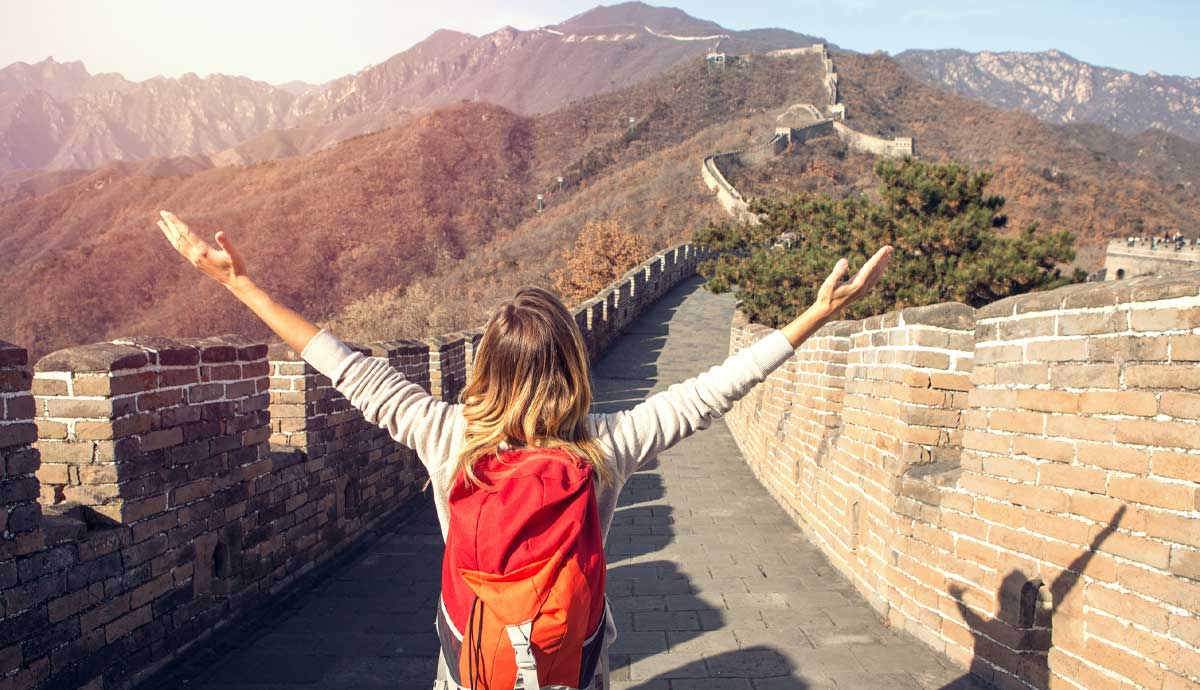
The Great Wall of China is one of the modern seven wonders of the world , and a protected UNESCO World Heritage site , making it one of the top must-see destinations for intrepid explorers. The wall is unfathomably long, running 21,196 km all along the northern border of China, travelling through mountains, deserts, beaches and grasslands. It would be impossible to take it all in on one visit – in fact, experts estimate it could take up to 17 months to walk the entire length.
All this means travelers tend to choose a particular area of the wall to visit, some offering half or full day treks, others for five days or more with pit stops or camping trips along the way. We take a brief look at some of the experiences you might encounter during a trip to the Great Wall of China , which will require careful planning and preparation before you set off.
The Great Wall of China Has Many Parts

The Great Wall of China is not one long continuous stretch, but it is divided into sections which are separated by areas of mountain and wilderness, each of which was built during different stages in Chinese history . This means it is still possible to walk entire lengths of certain sections of the wall, each of which has its own attractions and distinctive features. Certain parts of the Great Wall of China are better equipped for tourists and tour groups than others, with planned guides, and accessible walkways. Below are just a handful of the most visited and accessible sites.

The Mutianyu section of the Great Wall in the Huairou District of China is 2 km long and has undergone extensive restoration work, making it one of the more accessible areas to walk across. As well as featuring a series of 23 watchtowers, this expansive stretch of wall also showcases stunning views across the Chinese wilderness.
Get the latest articles delivered to your inbox
Please check your inbox to activate your subscription.

Badaling is one of the most popular regions of the wall, partly because it is easily reached by car from the nearby city of Beijing, meaning it can get crowded during peak holiday seasons. It is also heavily restored, with 16 watchtowers and a whole series of breathtaking views across Chinese mountains and other stretches of the wall as you walk its length.

Simatai is more historic and ruined than some of the more populist areas of the wall, but this meant it is full of charm. Situated two hours from Beijing by car, this crumbling section of the wall is set near the ancient Gubei Water Town, which itself offers a fascinating glimpse into the architecture of China’s past .
Jinshanling

The 10 km stretch of wall known as Jinshanling runs from Jinshanling to Simatai west. It boasts 67 watchtowers of varying appearance, which demonstrate the wall’s original purpose as a system of defense against China’s incoming rivals . Many bricks along the walls between the towers are engraved with a time, date and name of the troop who made them.
The Great Wall of China Has Many Steps

Whichever passage of the Great Wall of China that you choose to visit, you can expect to be climbing a lot of steps, because the wall covers rocky and uneven areas of terrain. Those areas that have undergone restoration are more easily accessible on foot, while some of the lesser-known, ruined parts can make for tricky navigation as the ground surface is uneven. All this means a pair of sturdy walking boots are an essential.
Camping, Paragliding and Cable Cars
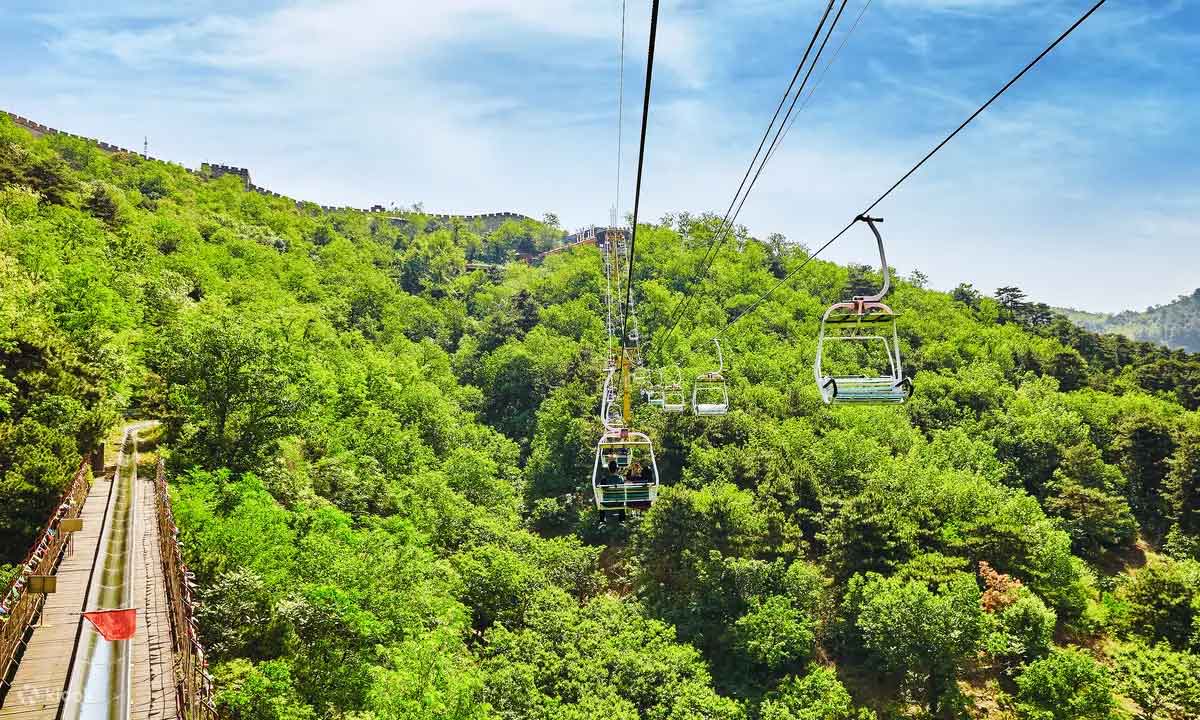
Visitors to the Great Wall of China are allowed to camp between stretches which allows them to make a trek across several different stretches during a single visit. Other popular activities available in the more heavily developed and restored section include paragliding, and cable cars, which can take visitors up steep climbs saving them the hassle of climbing all those steps and offer stunning views across the Chinese landscape .


What Are the Seven Wonders of the World? (HD Images)

By Rosie Lesso MA Contemporary Art Theory, BA Fine Art Rosie is a contributing writer and artist based in Scotland. She has produced writing for a wide range of arts organizations including Tate Modern, The National Galleries of Scotland, Art Monthly, and Scottish Art News, with a focus on modern and contemporary art. She holds an MA in Contemporary Art Theory from the University of Edinburgh and a BA in Fine Art from Edinburgh College of Art. Previously she has worked in both curatorial and educational roles, discovering how stories and history can really enrich our experience of art.

Frequently Read Together

UNESCO World Heritage Sites: 10 for Archaeology Enthusiasts

Who Built the Great Wall of China and Why?

The Mighty Ming Dynasty in 5 Key Developments

Great Wall of China
- Location: north China, East Asia
- Total Length: 21,196.18 kilometers (13,170.70 miles), half of the length of the equator
- Length of Ming Great Wall: 8,851.8 kilometers (5,500.3 miles)
- West End: the First Fire Tower of the Great Wall, in Jiayuguan of Gansu
- East End: Hushan Great Wall, in Dandong of Liaoning
- Course & Coverage: 15 provinces and regions, roughly from east to west – Heilongjiang, Jilin, Liaoning, Hebei, Beijing, Tianjin, Shandong, Henan, Shanxi, Shaanxi, Inner Mongolia, Ningxia, Gansu, Qinghai, Xinjiang.
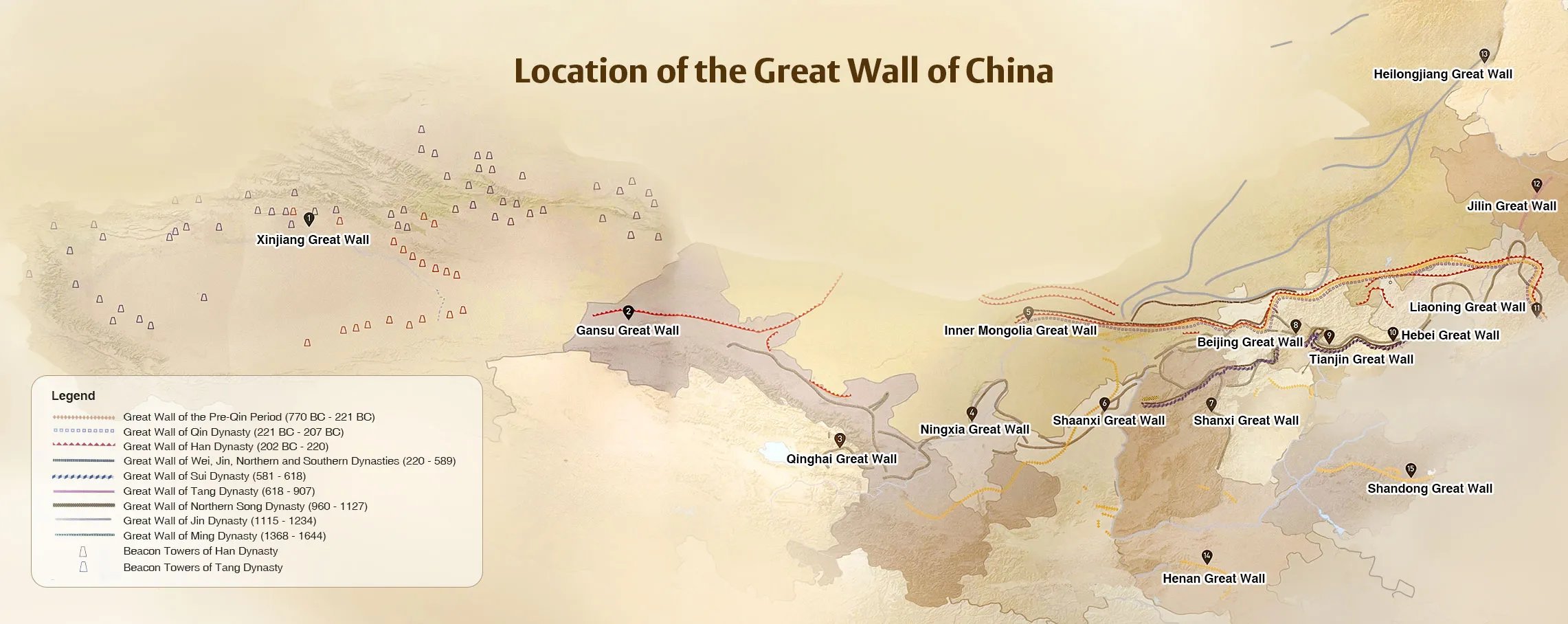
- First-time visitors to Beijing: Badaling, or Mutianyu
- Return visitors: Juyongguan, or Simatai (with Gubei Water Town)
- Experienced hikers: Jiankou (wild and dangerous)
- Best sections out of Beijing: Shanhaiguan in Hebei, Jiayuguan in Gansu, Zhenbeitai in Shaanxi

- Huanghuacheng
- Huangyaguan
- When
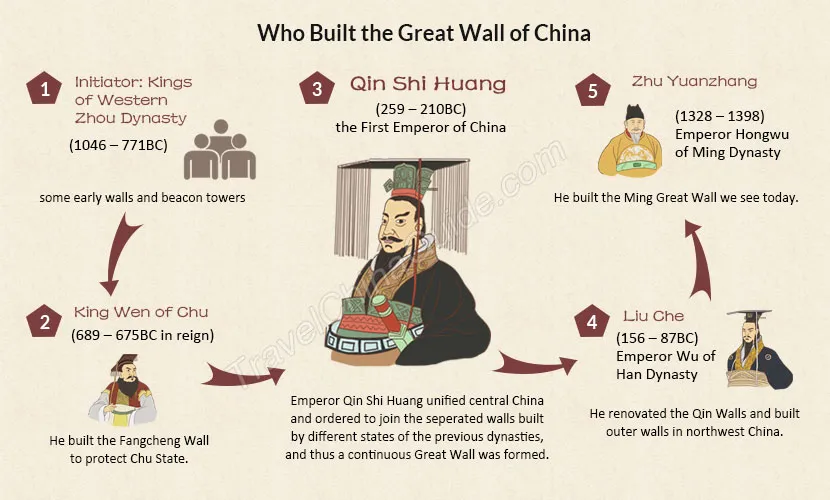
• Best Time to Visit
• best sections – badaling & mutianyu in beijing, • clothing & backpack, • how to plan a day tour to the great wall, book with us:.
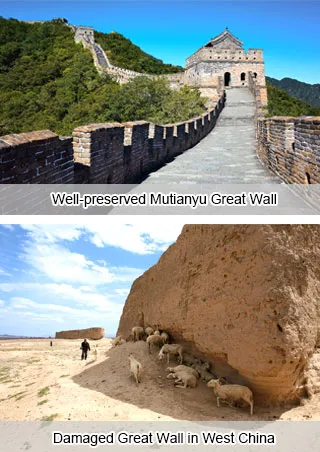
You May Like
Great wall tours.
10 Top-Rated Things To Do At The Great Wall Of China
The Great Wall of China is home to more activities than just walking: while you're there, consider paragliding or even a scenic train ride!
The Great Wall of China is China's most popular tourist destination with 10 million people visiting every year . A trip to China would be incomplete without seeing this 21,000 kilometers long historical treasure. Walking across the various parts of the structure will take travelers to ancient times while also showcasing its distinct architecture. To know more, here are the top things to do on the Great Wall of China.
Each section of the Great Wall offers a wide range of topography, allowing visitors to traverse kilometers of breathtaking scenery. Walking on and around the Great Wall is without a doubt one of the most popular activities among tourists and locals alike. Many firms provide guided hiking outings ranging from several hours midday, until midnight. Also, the multitude of pathways surrounding the wall is attributable to the terraced rice paddy fields that have been used in Chinese agriculture for generations.
RELATED: Floyd Mayweather, Katy Perry, And 8 Other Celebs Posing On The Great Wall Of China
9 Paragliding
Paragliding in Simatai is for thrill enthusiasts visiting the Great Wall . At a height of 300 meters from take-off to the landing zone, paragliding not only provides a bird’s eye view of the wall but also a view of the Chinese countryside. It is authorized on all public-access areas of the wall. It is also one of the numerous things that visitors are looking forward to. Travelers can choose from different paragliding offers from easy to the most challenging like the Simatai.
A real adventurer should try camping near the wall! Great Wall offers camping for guests where they can appreciate the peacefulness of the night, and also stargaze. There is designated camping at the foot of the Jinshanling Great Wall. Camping on the Great Wall is risky, however, it is a romantic and daring once-in-a-lifetime event. Early fall is the greatest time to go wild camping before it becomes too chilly at night. And if the tourists are lucky, they might be able to see the Milky Way in the evening.
Picnic is a must activity when visiting the Great Wall. Jiankou, part of the Great Wall, is ideal for a picnic, providing a once-in-a-lifetime opportunity to gaze at the Wall's rough, untouched beauty away from the people. It would also be a fantastic experience while admiring the great architecture of the Great Wall. Moreover, it's also worth noting that it's illegal to light a fire on the Great Wall, therefore tourists must only bring prepared meals or ready-to-eat food packs.
RELATED: 15 Myths Surrounding The Great Wall Of China Tourists Need To Know
6 Cable Car Ride
The cable car ride is one of three noteworthy, less physically intensive activities available when traveling into Mutianyu, one of the portions of the Great Wall. Mutianyu is famous throughout the Great Wall of China for its beautiful landscape and comprehensive services. It features cable cars to take travelers up the Great Wall hills and mountains, which is quite helpful for individuals traveling with children or the elderly. Through cable cars tourists can save time and energy, allowing them to spend more time seeing the Great Wall.
5 Scribble On The Graffiti Wall
Scribbling something on the wall is something that would really last for a lifetime in a Great Wall and will serve as the greatest memory for every tourist. The unique wall may be seen on the west coast of the No.14 Watchtower. Tower 14 has a plastic-screened painting space for people eager to add their signatures. Outside, everything appears normal, but as tourists reach the tower, beautiful graffiti art awaits. The inner walls are painted by a giant white fabric with various words and designs written in many languages.
4 Overlook The Whole Great Wall At No. 20 Watchtower
Among the 25,000 watchtowers in the Great Wall, No. 20 Watchtower is the tallest peak that is available to the public, as well as the ultimate destination for the majority of tourists. It takes more than three hours to arrive at the watchtower, and most visitors are unable to complete the difficult trek. Tourists will be astonished when they stand on the pinnacle and stare out across the Mutianyu Great Wall of China.
RELATED: 20 Little-Known Things About The Great Wall Of China
3 Huangyaguan Great Wall Marathon
For tourists who love challenging activities, the Huangyaguan marathon is much known for its exciting route, amazing Great Wall landscape, and its solemn Chinese community. It's among the top ten most interesting marathon courses. It draws runners from throughout the world. Participants should not only sprint but also crawl with their hands and feet up the rugged Great Wall. Tourists may also enjoy the stunning view of a Chinese village, where there are nice volunteers that distribute water and food.
2 The Roller Coaster Ride
Aside from riding in a cable car, tourists can also experience riding on the roller coaster. The Great Wall was constructed along with mountain ranges. So, to go to the wall, tourists normally have to trek up mountain routes for approximately an hour and then back. Fortunately, roller coaster cars are another exciting method to go down from the wall. It will also serve as one of the best memories tourists can experience upon visiting the Great Wall.
1 Ride On A Train And Watch The Peach Blossom Sea
Watching the Peach Blossom Sea should be on the top list of every tourist that will visit the Great Wall and it was located at Juyonnguan. An attraction that is true of the abundance of peach trees located throughout the neighboring mountains, which explode in a sea of blooms in the springtime. It is a magnificent location where tourists may enjoy the scenic panorama of a train running over the peach blossom sea.
NEXT: Great Wall Of China: 20 Surprising Things About This World Wonder
- Search Please fill out this field.
- Manage Your Subscription
- Give a Gift Subscription
- Sweepstakes
- Travel Tips
17 Facts About the Great Wall of China You Should Know
The Great Wall of China inspires wonder among its millions of visitors each year. Read on to learn about its unique history and how to visit.
Melanie Lieberman is the senior travel editor at The Points Guy and was an editor at Travel + Leisure.
:max_bytes(150000):strip_icc():format(webp)/Melanie-Lieberman-49e4798f0cbc434e8bb59f20e01adab4.jpeg)
Like a writhing dragon’s tail, the Great Wall of China snakes its way across China’s northern border. As its name suggests, the Great Wall is an imposing architectural marvel, and it’s often hailed as one of the greatest manmade wonders of the world. The Great Wall of China’s history stretches back more than 2,000 years. Despite its cultural and historic importance, it wasn’t until 1987 that the Great Wall of China was listed as a World Heritage site by UNESCO.
But the Great Wall isn’t even a single wall.
“The first thing to note,” travel expert Stan Godwyn told Travel + Leisure , “is that it’s actually a series of walls and fortifications.”
Godwyn typically arranges for clients to visit one of four main sections — Badaling (the most accessible for travelers of varying mobility), Mutianyu (extremely popular and well-restored), Simatai (a crumbling, rugged stretch of wall), and Jinshanling (for serious hikers).
Want to discover more Great Wall of China facts and bits of history? Read on for our definitive guide to this world wonder and ancient marvel.
Where Is the Great Wall of China?
The Great Wall of China is easily accessible from Beijing, though the massive structure stretches from Shanhaiguan in the east all the way to the city of Jiayuguan, in the country’s northwest. Generally speaking, the Great Wall of China defends the country’s northernmost border. A 2012 archeological survey estimated that the wall (taking into account all the dynasties that had worked on the structure) crosses 15 provinces and extends from Xinjiang, in the northwest, to the border of Korea in the east.
How Long Is the Great Wall of China?
If you were to measure all the sections ever built, some reports suggest the Great Wall of China could be a staggering 13,170 miles long. The most popular (and arguably the most beautiful) section was erected during the Ming dynasty, and runs for 5,500 miles between Hushan to the Jiayuguan Pass. Even if you only take into consideration the main-line length (about 2,150 miles) of the wall — not including branches and spurs — it’s still the record-holding longest wall in the world .
For those wondering how tall the Great Wall of China is, the general answer is that the structure’s height varies considerably, from 15 feet all the way to 39 feet. At its widest point, the wall is 32 feet thick.
When Was the Great Wall of China Built?
It’s hard to say precisely when the Great Wall of China was built, as so many dynasties and rulers contributed to its construction. Some 20 states and dynasties contributed to the construction of the Great Wall of China over the course of millennia. It’s thought that the first lengths of the wall were built as early as 771 B.C.E., though official work didn’t begin until 220 B.C.E., during the reign of Emperor Qin Shi Huang. Most of what remains today — that 5,500-mile stretch — was built during the Ming dynasty (between 1368 and 1644).
Why Was the Great Wall of China Built?
Originally built as a wartime defense, the Great Wall of China features many towers and passes. When Emperor Qin Shi Huang first proposed the so-called Long Wall, it was meant to defend the Chinese states against nomadic tribes from the north.
During the Han dynasty, (between 202 B.C.E. and 220 C.E.) the Great Wall was extended to protect the Silk Road trade. The Ming dynasty is known for not only extending the Great Wall, but also repairing and reinforcing existing structures.
How Was the Great Wall of China Built?
Despite its name, the Great Wall is actually a collection of fortifications, some of which run parallel to one another, while others are circular or side walls. There are even portions of the Great Wall that are natural barriers, like rivers or high mountains.
Hundreds of years before any official construction on the Great Wall began, individual Chinese states built fortifications against one another, using mostly earth, wood, and stones. Construction during the Ming dynasty made use of bricks rather than cut stone, which appears largely in the foundation and gateways.
More than a million soldiers, commoners, prisoners, and animals were recruited to help build the wall. Hundreds of thousands of men died while working on the wall, which required them to carry heavy materials on their backs up to the top of the ridgelines. There are rumors that many of the dead were buried in the wall, though to date there's no hard evidence of this.
Much of the work on the oldest sections of the Great Wall were built by hand, though primitive technology — wheel barrows, ropes, basket-and-pulley systems, and horse- or oxen-drawn carts — was also used.
When Is the Best Time to Visit the Great Wall of China?
The most popular times to visit the Great Wall of China are early May or October — but travelers should expect massive crowds during these periods.
“These are major holidays and everyone travels,” explained Godwyn.
Autumn is arguably one of the most popular and beautiful times to visit the Great Wall of China. Weather is comfortable and dry, and the mountains’ foliage is a kaleidoscopic array of hues.
During the winter, the Great Wall of China is blanketed in snow — and the number of tourists will drop dramatically. Winter is Beijing's shoulder season, so you will enjoy serious deals and discounts on hotel rooms and tours. If you do make a winter trip, be prepared for a slippery, windy walk, and pack accordingly.
Can You See the Great Wall of China From Space?
Contrary to popular rumor, you can’t see the Great Wall of China from space with the naked eye. As NASA reported , however, photographs taken from the International Space Station under ideal conditions have depicted sections of the wall.
How Many People Visit the Great Wall of China?
Every year, more than 10 million people flock to the Great Wall of China, making it one of the world’s most popular tourist attractions. The Badaling section sees the most visitors each year. It once received 100,000 visitors in one day.
How to Plan Your Visit
The Great Wall of China is a perfect day trip for travelers based in Beijing.
“Most clients do one day at the Great Wall as part of a visit to Beijing,” explained Godwyn. “Typically, we have a day of sightseeing in Beijing — then the second day is an excursion to the wall.”
Pick the part of the wall that best suits your needs and interests. Active, confident hikers should venture to Jinshanling, while families may want to stick with the more accessible Mutianyu section (there’s an unforgettable, five-minute toboggan ride from the top of the eastern end to the bottom).
Check specific fees in advance, but expect to pay around 25 to 65 yuan (under $10) for general admission to the Great Wall.
And don’t rush it. Whether you’re visiting the Great Wall of China on a layover or during a longer trip, we recommend spending at least two or three hours exploring the ancient structure.
Getting to the Great Wall From Beijing
The beautiful Ming dynasty portion of the Great Wall is around 50 miles from Beijing. But getting there can be a bit tricky for travelers making the trek solo.
Visitors sticking with public transportation will first need to get to Dongzhimen Station, where you can take an hour-long express bus ride to Huairou Station. Here, you’ll need to transfer to a bus stopping at the Mutianyu Roundabout.
The Airport Express connects directly from the Beijing Capital International Airport to Dongzhimen Station. Subway lines also transfer to Dongzhimen Station from the Beijing West Railway Station and Beijing South Railway Station.
However, one of the most convenient (and exciting) ways to get there is by taking the train to Badaling Great Wall Railway Station, also known as the world's deepest and largest underground high-speed railway station, which was completed in 2019. There are more than 10 pairs of high speed trains that travel between Beijing and Badaling Great Wall Railway Station, running from Beijing North Railway Station or Qinghe Railway Station.
Many travel experts recommend skipping the train and opting for a hired car and a guide. They’ll be able to take you to less popular sections of the wall and can help navigate unexpected hiccups, such as road closures. A car is also the best way to maximize your time.
Great Wall of China Tour Groups
For a private, luxury tour of the Great Wall, book an itinerary with Imperial Tours . A Beijing day trip with stops at the Forbidden City and less-touristy sections of the Great Wall also includes fine dining experiences.
If you’d like to hike, but would prefer not to go it alone, consider the four-day Great Wall Hiking Tour with China Odyssey Tours . After a day exploring the highlights of Beijing (Tiananmen Square, the Temple of Heaven, etc.) you’ll begin a moderate hike from the Jiankou section to Mutianyu.
Try TravelStore for a personalized trip to the Great Wall of China, which might include a customized Silk Road itinerary with stops in Jiayuguan, a northern Chinese city with restored wall sections and the last fortress of the Great Wall.
Even if you’re only in China for a layover, there’s still plenty of time to see the Great Wall. Every single day, Beijing Layover Tour offers private and small-group tours of the Mutianyu section of the Great Wall, ranging from four to five hours in length. You’ll be picked up at arrivals by a tour guide, and transferred back to the airport after the trip. These tours start at $50 for a private visit to the wall.
Hiking the Great Wall
One of the most popular hikes along the Great Wall snakes from the Jiankou section to the Ox Horn at Mutianyu. Here, unrestored sections of wall switch back and forth along steep mountain passes. Hikers should expect to spend up to four hours each way.
Another good hike covers the section from Jinshanling to Simatai West — a challenging route that covers four miles each way, and passes a series of watchtowers.
Or, start at the Gubeikou section of the Great Wall in Gubeikou Town — approximately 90 miles northeast of Beijing. From these quiet, never-repaired stretches of wall, visitors will find unobstructed views of the Yan Mountains before they descend to the Jinshanling section.
The Great Wall of China Dos and Don’ts
Don’t visit the Great Wall during a holiday. The attraction is popular with tourists, but locals love the site as well. Tomb-Sweeping Day in April, for example, sends claustrophobia-inducing crowds to the country’s most famous sites.
Do consider waiting until the late afternoon to visit the Great Wall, when insiders say many of the early morning and afternoon crowds begin to clear out.
Do pack comfortable walking shoes , and plenty of water.
The Great Wall Has Faced Erosion Concerns Over the Years
After centuries defending dynasties, China’s Great Wall has begun to crumble. Entire sections of the wall have been swallowed by weather and time — and that’s to say nothing of the many wars and manmade afflictions. Chinese state-run media has reported that nearly one-third of the walls have already disappeared. It’s not just slow-moving erosion wreaking havoc on the wall — the site has also succumbed to earthquakes and torrential storms.
The Best Restaurant Near the Great Wall of China
One of the most popular places to eat near the Great Wall is Commune by the Great Wall — a five-star hotel with a restaurant, Commune Kitchen, that serves Peking duck and other regional Chinese cuisine with a dining room that overlooks the Great Wall.
Generally speaking, however, food near the Great Wall is quite expensive and not particularly notable. Travelers should consider venturing into the nearby towns for affordable, authentic meals — or waiting until they’ve returned to Beijing for a seat at a top table.
Laws Protecting the Great Wall
It’s not just the immutable forces of weather and time that have destroyed the Great Wall of China. Alarmingly, 30% of the original structure has disappeared, largely because of mankind’s endless meddling.
In 2006, China passed the Great Wall Protection Ordinance, though the country has struggled to enforce any rules or regulations.
Travelers should note that there are fines for taking bricks or other sections of the wall, and that it’s inadvisable to pay locals for access to less-traveled sections, as this puts even more, unregulated parts of the wall at risk of destruction.
Notable Visitors to the Great Wall
In November of 2009, President Barack Obama visited the Great Wall. He famously said the imposing structure puts life in perspective: “Our time here on Earth is not that long, and we better make the best of it.”
President Obama isn’t the only notable world leader or celebrity to visit the Great Wall. Queen Elizabeth II spent time there in the '80s, while famous athletes like Kobe Bryant, Michael Jordan, and Shaquille O’Neal have also made visits. Celebrities like Beyoncé Knowles-Carter and Jennifer Lawrence have been seen sightseeing at the Great Wall.

- Meet the Team
- Work With Us
- Itineraries
- Italy Travel Guide
- Hawaii Travel Guide
- Travel Tips
Travel Information
How to visit the great wall of china.
Most people dream of walking the Great Wall of China at some point in their life. The wonderment of such a vast and incredible human construction tends to leave a lasting impression on a young mind. It’s a great bucket list item to pursue, and I highly recommend making a trip to the see and walk on the Great Wall of China.
It’s not too difficult to get there, and there are actually numerous different parts of the wall you can go to, making it so easy to see. I was worried it might not stand up to my expectations once I saw it in person, but that was not at all the case.
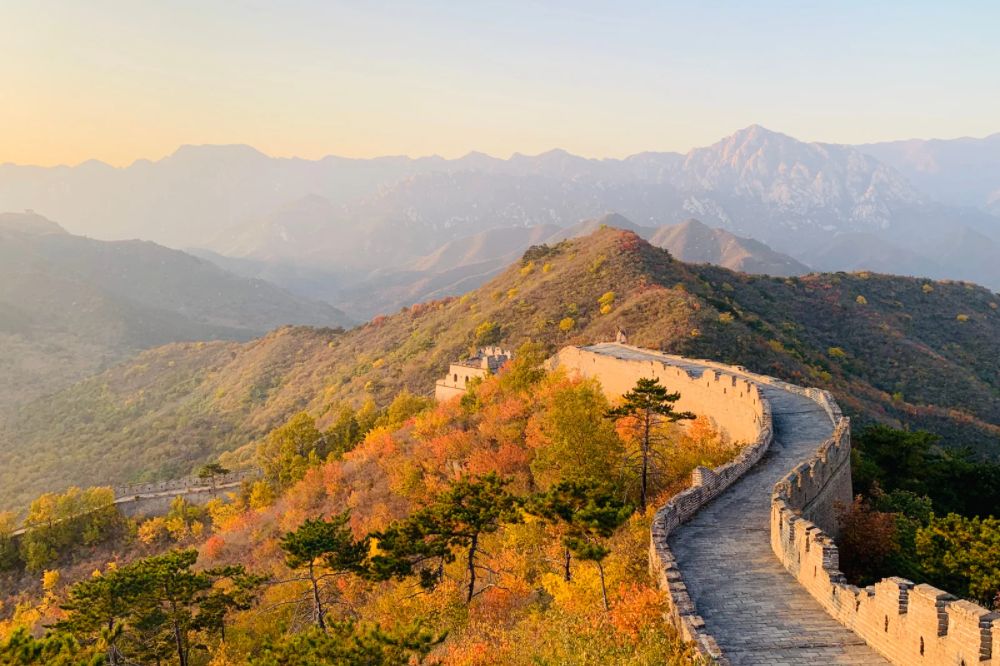
In fact, the Great Wall of China was so much more than I could foresee. It was magnificent. In fact, I truly loved my entire visit to China and highly recommend spending some time there. See the reasons I loved China so much. How much do you know about China?
Learn a few interesting facts about it before you visit! The Great Wall of China is one of the top tourist attractions in the world, drawing more than 10 million visitors from all corners of the globe every year. It’s one of those really cool experiences that everyone should have in their lifetime.
They don’t call it one of the 7 Great Wonders of the World for nothing. Just standing on it, peering out over the vast countryside below, you can almost sense the pride and determination that it took to build it.
You can almost feel the years of toil and anguish the soldiers, convicts and laborers who constructed it must have felt, you can almost see the world in which building something so massive was necessary. It’s a living piece of history that I feel privileged to have walked on.

Table of Contents
How to Walk the Great Wall of China
If you’re wondering can you walk the Great Wall of China, the answer is yes. Of course you can! There are a few sections of the wall that are open to tourists. Where you go depends greatly on what you want to do there and how far you’re willing to go.
Badaling Section
We entered the Great Wall at the Badaling Section, which is both the easiest entrance to get to and the most frequented by tourists. It’s only about 45 miles from Beijing and can be reached by train and bus, if you’re on your own, or with any number of tour companies.
The section of the wall at Badaling is the most well-preserved and stretches some 7.5 miles, though only about 4,000 yards of it are open to the public.
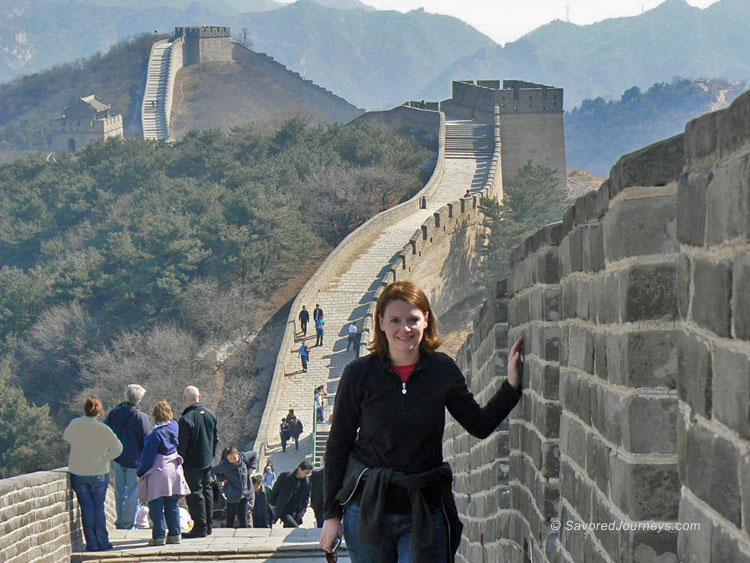
If you’re just wanting to see the wall in as close to original condition as possible, Badaling is the place to go. Other sections of the Great Wall of China are not as well preserved, or have even crumbled out of existence.
There is a group tour you can take from Beijing to the Badaling section of the wall. It’s an 8-hour trip that also includes a visit to the tomb of one of the most important Ming Dynasty emperors. This is a great way to see the wall without needing to do the planning and figuring out of transport on your own.
If you’d rather plan your own trip, but ensure you have a ticket to get in once you arrive, you can buy your Badaling entry ticket here .
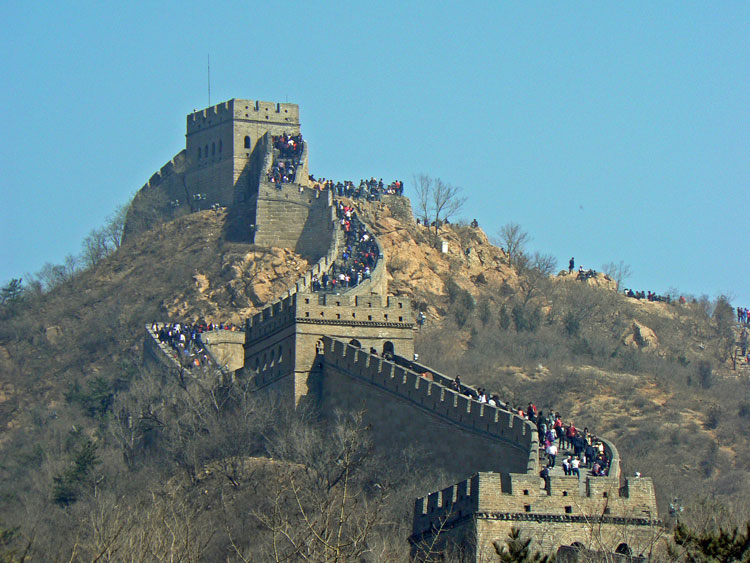
What to Expect
The entrance at Badaling offers very little fanfare. There is a restaurant or two, a couple of souvenir shops, a museum and an exhibit on the Terracotta Warriors (in case you can’t make it all the way to Xian to see them in person).
At the gate, you grab your ticket and decide which side of the wall you wish to walk. We chose the south side, which had less people on it, and I’m really glad we did. We were able to take our time walking up the exceptionally steep inclines, peer over the edges for as long as we wanted and snap some really nice pictures along the way.
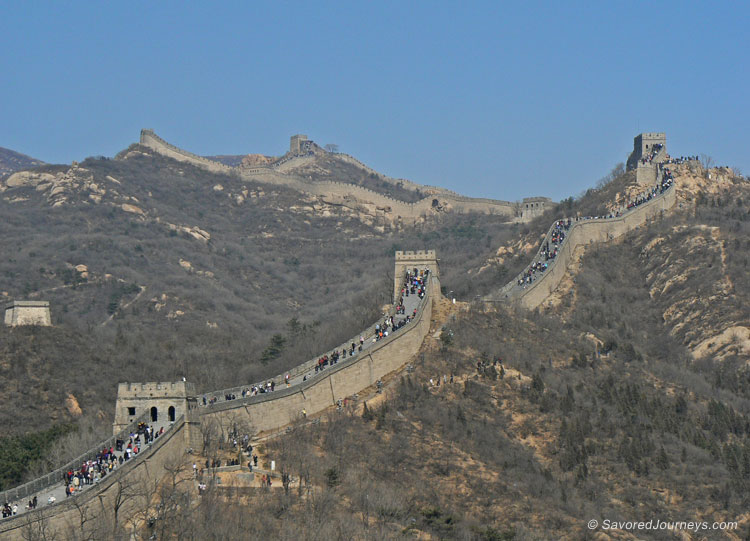
The North route may be more famous or more scenic, but I thought it was nice to take pictures looking to the north rather than walk (or should I say hike) it with the ever-present fear of passing out from lack of oxygen, although they do provide a cable car that will take you to the top, so you don’t have to worry.
The climb at times can be quite arduous and I can only imagine how difficult of a feat it was to build in an era without the help of modern building techniques. I wouldn’t recommend walking it on a rainy or particularly cold day, as you might find yourself landing on your butt more times than you care to.
It’s not only steep, it’s slippery in places where the brick has been warn by the ever-present traipsing of tourists.

On the south side of the wall, there are five towers, from which the rest of the path appears to be draped like streamers for miles in the distance. From afar, it’s quite an incredible view. I imagine that another time of the year would have afforded us the addition of green vegetation or autumn foliage.
But we were there to see the wall, after all, not the trees. There is a cable car at the south side that you can ride to the top, so you don’t need to climb those steep steps. The cost of the cable car is 40 CYN one way or 60 round trip. That is in addition to the 40-45 CYN you must pay to get in.
Mutianyu Section
Mutianyu is a section of the Great Wall of China located in the Huairou District, also about 45 miles to the northeast of the center of the city.
Like Badaling, Mutianyu is also a well preserved section of the wall. It often has less tourists, as well, so you might not see the long lines and crowds you find at Badaling. To reach this section of the wall, you can take the Mubus from the city center that goes directly there or you can book a private tour that includes the wall and Summer Palace. I think this is definitely the way to go!
There’s also a guided tour option to the Jinshaling section that includes transportation and a guided hike from Beijing.

This part of the wall is 3.4 miles in length and it has been renovated, so it’s safe to climb. You can enter at two points – the north and the south. Both require quite a bit of hiking. The cable car is located near the North entrance and should be used by anyone who can’t or doesn’t want to hike.
The cost to get into Mutianyu is around 40 CYN ($5 USD). The cable car costs 100 CYN for adults, 50 CYN for kids. Then you can take a chair lift or a toboggan ride down for the same cost.
When to See the Great Wall of China
I went to the wall in March and the “traffic” wasn’t at all bad. I’ve seen other traveler’s pictures where some parts of the walkway were so packed that it more resembled a crowded nightclub than the great wonder that it should be.
Sharing the wall with all of those people can cheapen the experience and mar any pictures you might take. For that reason I would really suggest visiting the Great Wall of China at a more pleasing (less crowded) time.
Those times are typically in the spring and fall (March-May and Sept-Nov). You can go all year round, though, if your schedule doesn’t allow you to go during the shoulder season.
Final Thoughts on Walking the Great Wall of China
This is definitely one of those experiences you must try in your lifetime. To see the Great Wall of China is a splendid thing that you can only imagine until you see it in person.
There are other ways you can experience the Great Wall of China, like hiking the Great Wall of China and camping out overnight or even running a marathon. If you’re into something alternative, you should look into those options too.
Be Prepared For Travel Planning is the most important part of any successful trip. Do it the easy way:
🧳 Travel Packing List | ✔️ Why You Need Travel Insurance | ✈️ What to Do Before You Leave Home
- Find and book the best hotel (our favorite booking site is Expedia)
- Research flight options (our favorite tool is Skyscanner )
- Book a tour (we always use Viator to find the best tours)
- Rent a car through Discover Cars (they search the best deals for you!)
YOU MIGHT ALSO LIKE

50 Things to Know Before You Go Abroad

12 Exciting Travel Destinations in Asia

21 Top Foodie Destinations Around the World

Top 10 Tibetan Foods You Must Try in Lhasa
Like this post? Why not save it to Pinterest? FOLLOW US on Pinterest , Instagram , Facebook for more great travel inspiration and tips.

Laura Lynch, creator and writer of Savored Journeys, is an avid world traveler, certified wine expert, and international food specialist. She has written about travel and food for over 20 years and has visited over 75 countries. Her work has been published in numerous guidebooks, websites, and magazines.
One thought on “ How to Visit the Great Wall of China ”
Pingback: Why I Travel: The Joys & Benefits of Traveling the World | Savored Journeys
Leave a Reply Cancel reply
Your email address will not be published. Required fields are marked *
Save my name, email, and website in this browser for the next time I comment.
- Travel Resources
- 86-19138970032 (GMT+8 18:00~09:00)

- Beijing Xian Tours
- Shanghai Beijing Tours
- Hong Kong Guilin Tours
- Hangzhou Suzhou Tours
- Kunming Lijiang Tours
- Shanghai Yangtze Cruise Tours
- Chengdu Tibet Tours
- More Short Stay Tours
- China Tours in January
- China Tours in February
- China Tours in March
- China Tours in April
- China Tours in May
- China Tours in June
- China Tours in July
- China Tours in August
- China Tours in September
- China Tours in October
- China Tours in November
- China Tours in December

- High Speed Trains
- China Yangtze Cruise Tour
- Photography
- Desert Adventure
- Ethnic Villages
- Biking Tours
- Kung Fu Tours
- Heritage Sites Exploration
- China Spring Tours
- China Summer Tours
- China Autumn Tours
- China Winter Tours
Notice! 2024 available cruise routes include 4~5 days Chongqing-Yichang(most classic) and 11~12 days Chongqing-Yichang-Shanghai(limited).

- Best-value Yangtze Cruises
- Top Family-friendly Cruise Ships
- Top 3 Luxury Yangtze River Cruises
- Yangtze River Highlights
- Yangtze River Cruise Routes
- Upstream or Downstream?
- Dining & Drinking
- Accommodations
- On-board Activities
- Yangtze Cruise Booking Steps

- Inner Mongolia

- Fanjingshan
- How to Plan Your First China Tour
- How to Plan Beijing Tour
- How to Plan Xian Tour
- How to Plan Shanghai Tour
- How to Plan Guilin Tour
- How to Plan Sichuan Tour
- How to Plan Family Tour
- 2024 China Travel Ideas
- Best Time to Visit China
- What to Pack for Your China Journey
- Make Payment in China
- Updated China Travel News
- Ultimate Chinese Visa Guide
- Chinese Visa Types
- Chinese Visa Requirements
- Do I Need a Visa for China
- Chinese Visa Application
- Chinese Visa Exemptions
- 144-hour Visa Free
- Shenzhen Visa on Arrival
- Hainan 30-day Visa Free
- Embassies & Consulates
- Invitation Letter
- Useful Visa FAQs & Tips
- Entry Regulations
- Baggage Allowance
- Customs Declaration
- Exit Regulation
- How to Book Train Tickets
- How to Collect Train Tickets
- How to Cancel & Alter Train Tickets
- How to Read Train Tickets
- China High Speed Train Types
- Seats Class & How to Choose
- Friendly Facilities on the Train
- The Train Station Departure Process
- Available Food and Drinks on the Train
- Western Toilets on the Train
- Luggage Racks & Baggage Allowance
- Beijing Train Stations
- Shanghai Train Stations
- Guilin Train Stations
- Xian Train Stations
- Chengdu Train Stations
- Hong Kong West Kowloon Railway Station
- Beijing - Xian
- Beijing - Shanghai
- Guangzhou - Shanghai
- Shenzhen - Shanghai
- Chengdu - Xian
- Shanghai - Hangzhou
- Shanghai - Xian
- Chengdu - Chongqing
- Kunming - Lijiang
- Beijing Capital International
- Beijing Daxing International
- Shanghai Pudong International
- Shanghai Hongqiao International
- Guangzhou Baiyun International
- Hangzhou Xiaoshan International
- Chengdu Tianfu International
- Chengdu Shuangliu International
- Xian Xianyang International
- Shanghai - Beijing
- Hong Kong - Shanghai
- Guangzhou - Beijing
- Chengdu - Lhasa
- Shanghai - Guilin
- Shanghai - Sanya
- Travel in Spring Season
- Travel in Summer Season
- Travel in Autumn Season
- Travel in Winter Season
- Weather in January
- Weather in February
- Weather in March
- Weather in April
- Weather in May
- Weather in June
- Weather in July
- Weather in August
- Weather in September
- Weather in October
- Weather in November
- Weather in December
- Top 10 China Destinations
- Top 15 Things to Do
- China World Heritage Sites
- Top 10 Best Natural Beauties
- Top 10 Museums in China
- Top 10 Old Towns & Villages
- Five Great Mountains in China
- Top 10 Monasteries & Temples
- Top 10 Ski Resorts
- Top 10 Beautiful Lakes in China
- 7 Best Beaches in Sanya
- Top 6 Beautiful Waterfalls
- Panda Volunteering
- Having fun on Ice and Snow Festival
- About Us Who We Are Our Team Why Travel with Us Feedback & Reviews Travel Stories Travelers' Gallery Payment Guide Customer Support Contact Us
- Tour Experiences
Destinations
- Travel Guide
Huanghuacheng Lakeside Great Wall – The Only Water Great Wall in Beijing
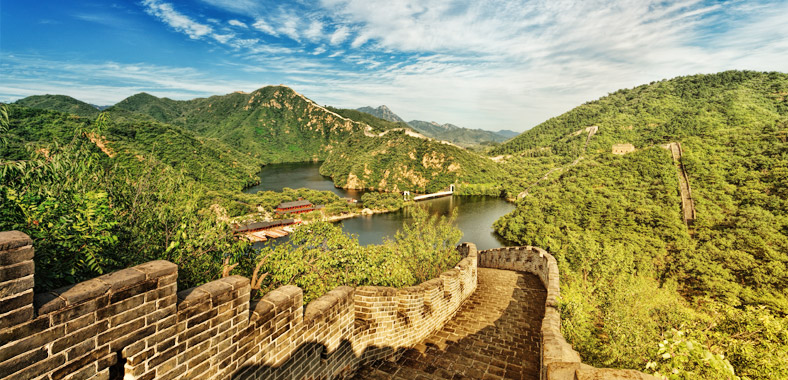
Huanghuacheng Lakeside Great Wall Facts
Huanghuacheng Lakeside Great Wall, about 80km from central Beijing, is the only section of Great Wall in Beijing that is connected with a lake. It is very hiking-friendly with its pleasant environment. Here you can appreciate the bold northern-frontier and gentle Jiangnan-like (southern China) scene at the same time.
Type: Ancient Ruins, Outdoor Activities, National AAAA Tourist Spot
Best Seasons: April-May, October-November
Recommended Visiting Time: half day
Opening Hours: 08:30-17:00 (April - October); 08:30 - 16:30 (November to March)
Tickets: CNY 60
Address: Xishuiyu, JiuDuhe County, Huairou District, Beijing ( 北京市怀柔区九渡河镇西水峪村 )
What Is Special About Huanghuacheng Great Wall
As the name implies, Huanghuacheng Lakeside Great Wall is the only section of Great Wall in Beijing that is connected with a lake . It is a famous tourist resort where you can appreciate the bold northern-frontier and gentle Jiangnan-like (southern China) scene at the same time. Huanghuacheng Great Wall is surrounded by mountains and lush forests, forming a beautiful natural landscape throughout the year. Immersed in its natural beauty and man-made wonder, you will feel rather relaxed to temporarily get away from the hustle and bustle of modern cities.
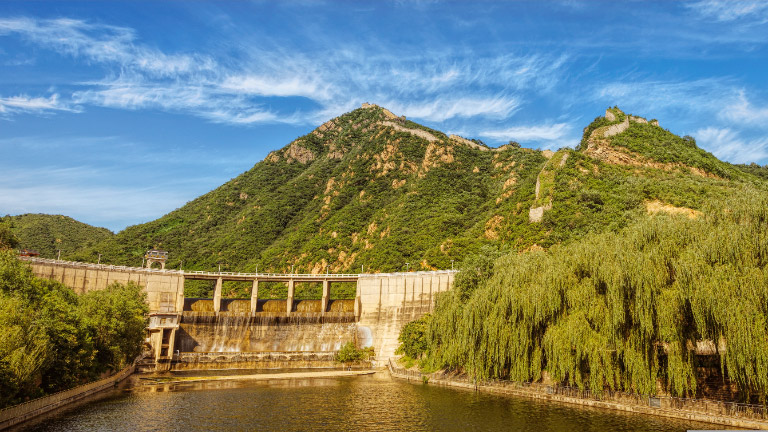
History of Huanghuacheng Great Wall
Huanghuacheng Great Wall was built in A.D. 1404 under the command of Emperor Yongle (Zhu Di) to increase the defensive force. It was built 2 years’ earlier than the Forbidden City and 3 years earlier than the Ming Tombs. The construction of Huanghuacheng Great Wall lasted as long as 188 years . During the latter stage of the construction, rumors had it that the Great Wall was in poor quality despite of so much money and time. Emperor Wanli was very angry. So he summoned General Cai Kai (the supervisor of Huanghuacheng Great Wall construction at that time) back to Beijing and had him beheaded. But after investigation, the emperor found that Huanghuacheng Great Wall built by General Cai was very solid and firm. He realized that he had slain the general wrong. So he inscribed two Chinese characters Jintang (金汤) , meaning impregnable fortress, at the foot of the Great Wall to commemorate the excellent work of General Cai. Nowadays, Huanghuacheng Great Wall is sometimes referred as Jintang Great Wall.
Three Wonderful Views of Huanghuacheng Great Wall
Magnificent great wall meandering along the mountain ridge.
Lying on the rolling mountain ridge and built around the Haoming lakeside, the Huanghuacheng Great Wall itself is a pleasure to eye. It is not only a gate guarding Beijing in the north, but also an important gateway in protecting the Ming Tombs. So a lot of effort was put into the construction of Huanghuacheng Great Wall, which can also be seen from the 188 years in building it. It fully deserves the honor of “the essence of the Great Wall” .
Parts of Huanghuacheng Great Wall are Underwater - Unique in China
Haoming Lake (灏明湖) naturally divides Huanghuacheng Great Wall into several sections, two of which are underwater now, forming a peculiar landscape of water submerging the ancient wall. So Huanghuacheng Great Wall is also known as water Great Wall. This scene was formed in 1974. In order to build Xishuiyu reservoir at that time, it needed to dam the lake, which resulted in a water river rise. So the part of Huanghuacheng Great Wall in the low valley was in the water ever since. Now seen from the top, Huanghuacheng Great Wall is like an agile giant dragon stretching its head into the water of great momentum.
Flourishing Chestnut Garden Passed Down from the Ming Dynasty
The chestnut garden covers an area of over 100 mu (about 7 hectares) with more than 100 ancient trees. All these trees were planted by the soldiers guarding Huanghuacheng in the Ming Dynasty (A.D. 1368 - 1644) . Because at that time, the soldiers needed to do some farming work to support their daily supplies. Having weathered 600 years’ ups and downs, such a large area of ancient chestnut garden is still thriving and fruitful, which is indeed an amazing scene in Beijing suburb. The chestnut garden is most beautiful in autumn (late September - November) when the leaves all turn yellow.
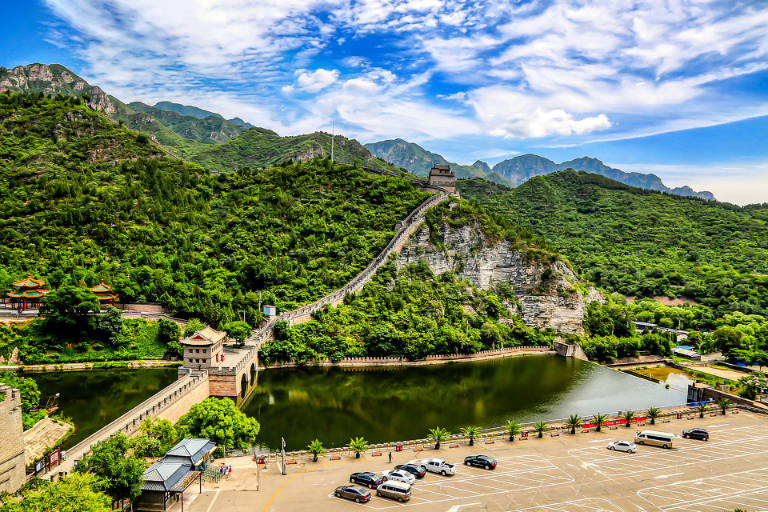
Things to do at Huanghuacheng Great Wall
Hiking the great wall.
Huanghuacheng section of the Great Wall is very hiking-friendly compared with the others. There are surely also many steps to climb, but in general, the steps are relatively flat. According to your own condition, you can choose to hike in an easy or a more challenging way. From the West Gate to the Pier, it is about 1.1km and needs 20 minutes. If you follow the trail in the north to get to the Pier, you will need to hike about 2km (40 minutes). From the Pier keep heading west for 2km, you will get to Heilong Pond after about 40 minutes. So finishing a round hiking trip will need 2.5 - 3 hours. ☛ 2 Days Jiankou - Mutianyu & Huanghuacheng Lakeside Great Walls Hiking Tour
Boating on Haoming Lake
It seems unbelievable to have a boating trip while hiking the Great Wall, but that’s totally doable at Huanghuacheng section! You can take a boat from the reservoir dam near the east gate to the biland at the center of Haoming Lake. There are several kinds of boat for your choice, such as yacht, sightseeing boat, pedalo, and rowing boat. This 6-minute trip will save you much time and energy, and provide you with a unique experience of “boating” the Great Wall.
Holding a Bonfire Party
Not having enough fun hiking the Great Wall? What about holding a bonfire party with your friends? The wood needed will be provided by the scenic spot. Imagine on a quiet night under the starry sky, you hold a bonfire party on the biland or the fish-shape beach with your families or friends, singing, dancing, cheering, and even having a barbeque. The campfire lights up the green hills, clear water, and the ancient Great Wall, breaking the silence around. The water great wall at that time is full of vitality and a different kind of charm. The warm bonfire, the people you are happy being with, the tasty mutton kebabs, streaky pork, and other delicious food… What a beautiful night!
Taking More Outdoor Extending Activities
Thanks to the advantageous geographical environment, a development training base has been built here. You can take part in various activities in Huanghuacheng Great Wall Scenic Area such as dam speed drop, making a raft by yourself, camping (available from May to September), etc. The base follows the rule of integrating the national beauty and cultural building in harmony, and has successfully combined outdoor extending activities with taking relaxing vacations. It is an ideal destination for outdoor enthusiasts.
Best Time to Visit Huanghuacheng Great Wall
As Huanghuacheng Lakeside Great Wall is a place you can appreciate the great wall, the Haoming Lake, the rolling mountains, and the chestnut garden at the same time, it always has something to offer you all year round . Considering the scenery and weather, it is most recommended to visit there in April, May, October, and early November . But please try to avoid the National Day Holiday (October 1 - 7) because during that time, most attractions in Beijing will expect much more tourists than usual.
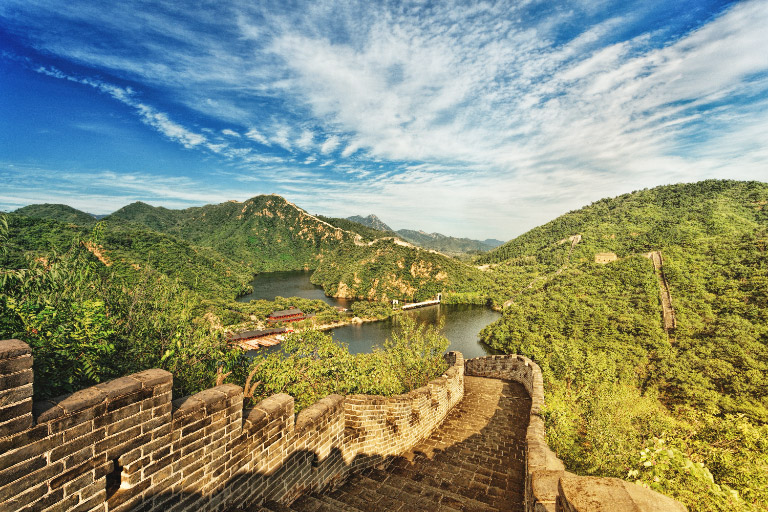
Where is Huanghuacheng Great Wall
Huanghuacheng Great Wall, or Huanghuacheng Lakeside Great Wall, is located at Jiuduhe Village in Huairou District of Beijing. It is about 80km (2h15m by car) to the north of central Beijing (Tian’anmen Square).
To Forbidden City: about 75km, 2 hours’ drive
To the Summer Palace: about 68km, 1h45m’s drive
To the Temple of Heaven: about 90km, 2.5 hours’ drive
To Beijing Hutongs: about 75km, 2hours’ drive
To Beijing Capital International Airport: about 80km, 1h45m’s drive
To Beijing South Railway Station: about 90km, 2.5 hours’ drive
To Beijing West Railway Station: about 80km, 2 hours’ drive
How to Get to Huanghuacheng Great Wall
In peak season (April - October), you can take a direct tourist bus (about 2 hours) from Dongzhimen Transportation Hub Station (东直门公交枢纽站) to Huanghuacheng Great Wall. This bus operates only once a day. It will leave Dongzhimen (about 9km, 30 minutes’ drive to the northeast of Tiananmen Square) at 8:30am and bring you back from Huanghuacheng Great Wall at 16:00pm. If you miss the bus or travel there in off-peak season (November - March), then you will spend at least 3.5 hours on bus transfer from Tiananmen Square.
To save all the troubles and make your trip more enjoyable, you can consider traveling with China Discovery . According to your own needs, we will customize a private tour for you covering all the transfer you need during the trip from the airport/train station to the hotel and the tourist attractions. In this way, you can travel worry-free with a comfortable vehicle, skilled driver, and professional guide. >>Read More About How to Get to Huanghuacheng Great Wall
Attractions Around Huanghuacheng Great Wall
Mutianyu great wall (慕田峪长城).
Mutianyu Great Wall is about 26km (40 minutes’ drive) to the east of Huanghuacheng. To transfer between these two places, it is recommended to take a car, because the bus will make a long detour that takes you about 2.5 hours. Mutianyu section is the “longest great wall in China” so far. It boasts splendid culture, beautiful scenery, and densely dotted watchtowers. It is well protected, so you can still see its original appearance there. >>Read More About Mutianyu Great Wall .
Ming Tombs (明十三陵)
The Ming Tombs is about 20km (30 minutes’ drive) southwest of Huanghuacheng. Bus is also not recommended because you need to make at least 2 transfers and it will take you about 3.5 hours. The Ming Tombs, covering an area of over 120 square kilometers, is the resting place of 13 emperors in the Ming Dynasty (A.D. 1368-1644). There is a 7km Sacred Way leading to the tombs with 12 stone animals lining up on each side. At present, only the Sacred Way, Changling Tomb, Dingling Tomb, and Zhaoling Tomb are open to the public. One hour or two is sufficient for you to take a trip there. >>Read More About the Ming Tombs

How to Plan a Huanghuacheng Great Wall Tour
There are many choices for you to take a Great Wall hiking tour . If you want to visit Huanghuacheng, you can start your trip at around 8:00 or earlier. After about 2 hours’ drive, the rest of the day is for you to explore Huanghuacheng Great Wall freely. But generally speaking, 3-4 hours is fair enough. So you can return to downtown Beijing or head to another section of the Great Wall in the afternoon. Usually the Great Wall is just one part of a Beijing tour . To better explore this ancient city, you are recommended to spend about two more days to visit Tiananmen Square , now the largest city plaza in the world, one of the world’s five most important palaces – the Forbidden City , the largest and best-preserved royal garden in China Summer Palace , and experience the typical Beijing Hutongs .
If you have any other questions or ideas, please feel free to contact us . Our professional travel consultants are always ready to help!
Keep Reading About Beijing Attractions
- Great Wall of China
- Forbidden City
- Mutianyu Great Wall
- Jinshanling Great Wall
- Tiananmen Square
- Summer Palace
- Temple of Heaven
- 798 Art District
- Jingshan Park
- Beijing Hutong
- National Museum of China
- Gubei Water Town
- Lama Temple
- Yandaixie Street
- Nanluoguxiang
- Beijing Olympic Park
- Badaling Great Wall
- Jiankou Great Wall
- Simatai Great Wall
- Juyongguan Great Wall
Top Beijing Tours & Travel Guide
- Popular Beijing Tours
- Great Wall Hiking Tours
- Beijing Visa Free Tours
- Beijing Layover Tours
- Tpo 6 Beijing Vacations
- Beijing Family Tours
- Beijing Travel Guide
- Beijing Travel Articles
- Great Wall Trip Planning Guide
- How to Plan a Beijing Trip
- Things to do in Beijing
- Top Experiences Recommended by LP
- Featured Activities in Beijing
- How to Get to & around Beijing
- Weather & Seasons in Beijing
- Beijing Maps
- Beijing 144/24 Hour Visa Free
- Recommended Hotels in Beijing
- Beijing Photo Gallery
- Top Beijing Food and Snacks
- Beijing Shopping
- Beijing Nightlife
- Beijing FAQs & Tips
Recommended Beijing Tours
Top 3 Beijing tours chosen by most customers to explore Beijing in the best way. Check the detailed itinerary, or tailor your own trip now with us.
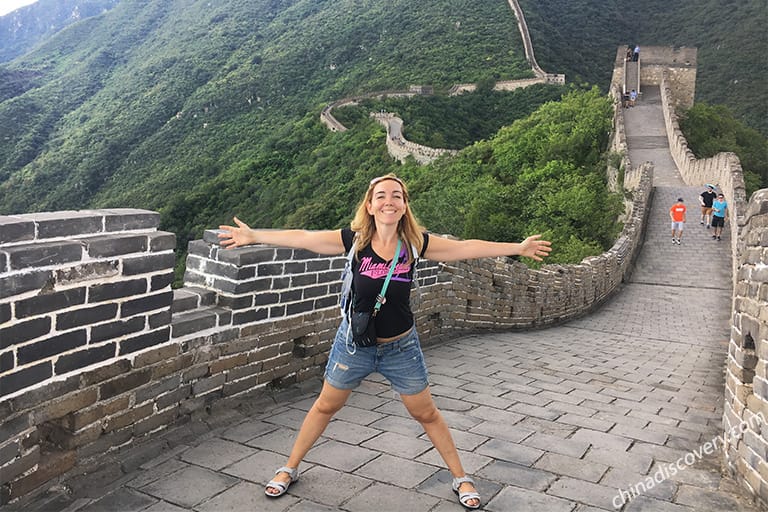
4 Days Classic Beijing Tour Package (Leisure Paced)
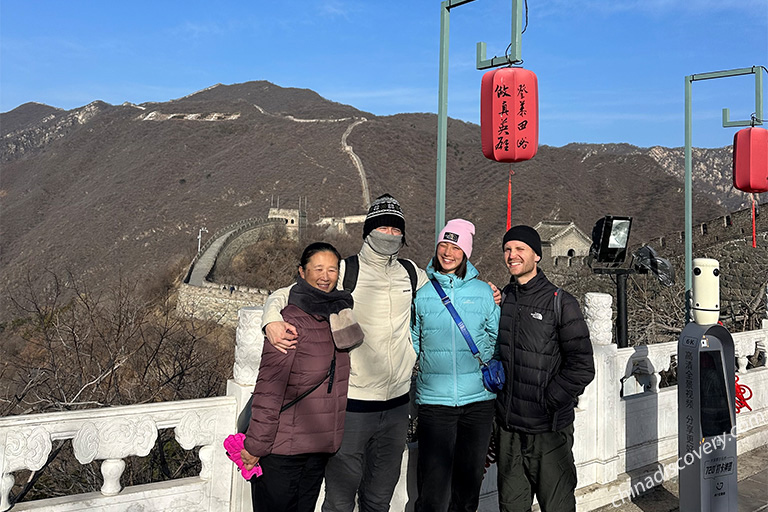
2 Days Mutianyu and Jinshanling Great Wall Hiking
Beijing / Mutianyu / Jinshanling
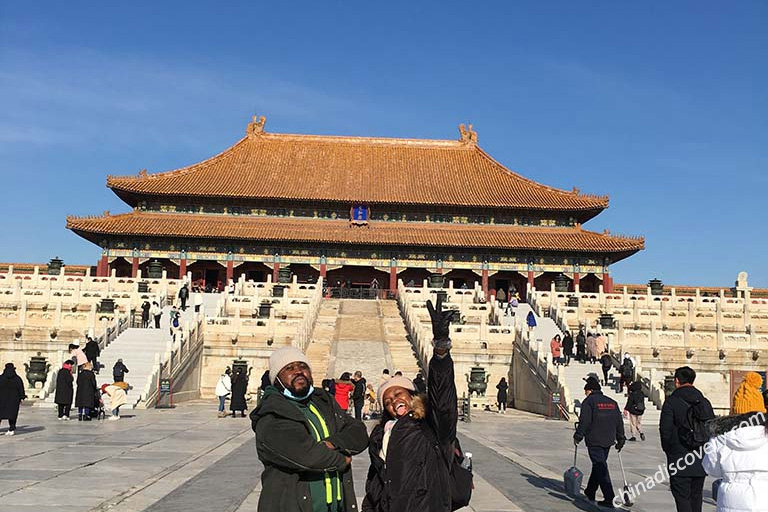
3 Days Beijing Essential Short Stay Tour (Visa Free)
Start planning your tailor-made holiday to China by contacting one of our specialists. Once inquired, you’ll get a response within 0.5~23.5 hours.

Have a question? Get answers from our travel experts or guests
- Your Question:
- Your Email:
- Affordable and valuable price
- 100% tailor-made packages
- Highly rated customers reviews
- Efficient customer support
China Tours
- Top 10 China Tours
- Classic China Tours
- China Tours from Beijing
- China Tours from Shanghai
- China Tours from Hong Kong
- China Tours from Chengdu
- Short China Trips
- Customize China Tour
- China Panda Tours
- Family Tour with Kids
- High-Speed Train Tour
- Silk Road Travel
- Yangtze River Cruise
- Hiking & Trekking Tours
- Photography Tours
- China Minority Travel
- Beijing Shanghai Tours
- Shanghai Yangtze Tours
- Chengdu Jiuzhaigou Tours
- Chengdu Lhasa Tours
- Suzhou Hangzhou Tours
- Guilin & Yangshuo
- Zhangjiajie
“Very good experience”
“WONDERFUL 25 DAYS IN CHINA - PRIVATE TOUR”
“Awesome China tour from northeast to southwest”
Any questions, please email us at: [email protected] or call us at: 86-19138970032 (Monday-Friday 9 a.m. to 6 p.m. GMT+8)
- Terms & Condition
- Privacy Policy
- Customer Support
Copyright © 2011-2024. All rights reserved.
Cookie policy
We use cookies to give you the best experience on our website. Continue using our website means you agree with our cookie policy. For more info, please read here .
Winter is here! Check out the winter wonderlands at these 5 amazing winter destinations in Montana
- Travel Destinations
Why Is The Great Wall Of China A Tourist Attraction
Published: November 7, 2023
Modified: December 28, 2023
by Cleopatra Fleischman
- Arts & Culture
- Plan Your Trip
Introduction
The Great Wall of China, one of the most iconic and impressive structures ever built, stands as a testament to the ingenuity and ambition of the ancient Chinese civilization. Stretching over 13,000 miles, this architectural marvel traverses diverse terrains, from rugged mountains to vast plains, and holds immense historical and cultural significance.
The Great Wall of China was originally constructed as a defensive fortification to protect China from nomadic tribes and potential invasions. Its construction began as early as the 7th century BC and continued for centuries under different dynasties. The wall consists of various sections, each built during different time periods and using different materials.
Today, the Great Wall of China has become a major tourist attraction, drawing millions of visitors from around the world. Its sheer size, historical significance, and breathtaking views have made it an enduring symbol of Chinese civilization and a UNESCO World Heritage site.
Aside from its historical and cultural significance, the Great Wall of China offers visitors a chance to experience the architectural wonders of ancient China. From the imposing watchtowers to the steep steps and winding paths, every section of the wall showcases the remarkable engineering skills of the people who built it.
This article will delve into the historical background, architectural features, and significance of the Great Wall of China. We will also explore the factors contributing to its popularity as a tourist attraction, the challenges it faces, and the preservation efforts being undertaken to safeguard this magnificent wonder.
Historical Background of the Great Wall of China
The origins of the Great Wall of China can be traced back to the Warring States Period (476-221 BC) when various Chinese states built walls to defend their territories. However, it was during the Qin Dynasty (221-206 BC) that the first unified and continuous wall was constructed. This early version of the wall served as a defense against attacks from the northern nomadic tribes.
Over the centuries, different dynasties, including the Han, Sui, and Ming, contributed to the construction, expansion, and reinforcement of the wall. The Han Dynasty (206 BC-220 AD) extended the wall further west to protect important trade routes, while the Sui Dynasty (581-618 AD) repaired and reinforced existing sections. However, it was the Ming Dynasty (1368-1644 AD) that extensively rebuilt and expanded the Great Wall to its current form.
During the Ming Dynasty, the Great Wall reached its peak as a defensive structure. It was constructed using bricks, stones, and rammed earth, with watchtowers strategically placed along its length. These watchtowers provided lookout points and fortified positions for soldiers.
While the primary purpose of the Great Wall was defense against invaders, it also served as a symbolic display of imperial power and national unity. The wall symbolized the strength and greatness of the Chinese empire, reinforcing the metaphorical notion that China was an impregnable fortress.
Despite the incredible scale and effort put into the construction of the Great Wall, it was not entirely effective in keeping out invaders. In fact, numerous breaches and invasions occurred over the centuries. However, the wall served as a deterrent and made it more challenging for invaders to breach China’s borders.
Today, the Great Wall of China stands as a testament to the rich history and perseverance of the Chinese people. It reflects their determination to protect their land and preserve their cultural identity amidst external threats. It also stands as a reminder of the incredible engineering achievements of ancient civilizations, captivating visitors with its historical significance and architectural grandeur.
Architectural Features of the Great Wall of China
The Great Wall of China is a remarkable testament to the architectural brilliance of ancient China. Its construction, spanning centuries and different dynasties, showcases a variety of architectural features and techniques. Here are some notable features of the Great Wall:
- Materials: The construction of the Great Wall utilized a variety of materials, depending on the availability in each region. The most common materials include stones, bricks, and rammed earth. In some sections, layers of tamped earth, reeds, and wooden frames were used to strengthen the structure.
- Watchtowers: Distributed along the length of the wall, watchtowers served as strategic strongholds and observation posts. These towers allowed soldiers to survey the surrounding areas, spot potential threats, and communicate using smoke signals or lanterns. The design of the watchtowers varied across different sections of the wall and often incorporated intricate features and decorative elements.
- Fortresses: In addition to the watchtowers, the Great Wall also housed numerous fortresses at key points. These fortresses provided additional defense and acted as military bases. They were equipped with barracks, stables, wells, and other necessary facilities to sustain soldiers stationed along the wall.
- Gateways and Passes: The Great Wall featured gateways and passes at strategic locations that allowed for controlled access and movement. These gateways were fortified with additional defensive structures, such as barbicans and drawbridges, to enhance security.
- Steep Grades and Steps: Due to the varying terrains it crossed, the Great Wall often traverses steep mountain slopes. To ensure stability and ease of movement, sections of the wall employ steps or inclines. The steps are of varying heights and widths, making the ascent challenging but manageable for both soldiers and visitors.
The architectural features of the Great Wall of China not only served defensive purposes but also exhibited the artistic and aesthetic sensibilities of the builders. The integration of functional elements with decorative elements, such as intricate carvings, ornamental patterns, and inscriptions, showcases the skill and craftsmanship of ancient Chinese architects.
Exploring the Great Wall allows visitors to appreciate the remarkable engineering and architectural marvel that has stood the test of time. From the imposing walls to the watchtowers and fortresses, each section offers a unique glimpse into ancient China’s ingenuity and dedication to protecting its borders.
Significance and Symbolism of the Great Wall of China
The Great Wall of China holds immense historical, cultural, and symbolic significance for the Chinese people. It is not merely a physical barrier but a powerful symbol of unity, national identity, and an enduring testament to human perseverance. Here are some of the key aspects of its significance and symbolism:
- Defense and Protection: The primary purpose of the Great Wall was to defend China against invasions by nomadic tribes from the north. As a result, it played a crucial role in safeguarding the country’s territorial integrity and sovereignty. The wall represented a physical and psychological barrier that deterred potential invaders, fostering a sense of security among the Chinese population.
- Chinese Civilizational Achievement: The construction of the Great Wall exemplifies the remarkable engineering and architectural prowess of ancient China. It stands as a testament to the country’s rich history and the ingenuity of its people. As an architectural marvel, the Great Wall showcases the technological advancements and the immense effort put into its construction, solidifying China’s position as a great civilization.
- Unity and National Identity: The Great Wall has served as a unifying symbol for the Chinese people throughout history. It has played a vital role in fostering a sense of national identity, pride, and resilience. The wall’s construction involved the collective effort and sacrifice of countless individuals, representing the strength that lies in unity and cooperation.
- Cultural Icon and Tourist Attraction: The Great Wall of China has transcended its original purpose and has become an iconic symbol of China. It is a source of inspiration for artists, writers, and poets who have praised its magnificence and grandeur. The wall’s historical and cultural significance attracts millions of tourists from around the world each year, eager to witness this extraordinary feat of human achievement.
- Metaphorical Representation: Beyond its physical presence, the Great Wall holds metaphorical significance. It represents the indomitable spirit and resilience of the Chinese people in the face of adversity. It symbolizes their determination to protect their homeland, preserve their cultural heritage, and withstand external challenges.
The Great Wall of China has left an indelible mark on Chinese history, culture, and national psyche. It continues to inspire awe and admiration, serving as a reminder of the remarkable achievements of the past and the enduring legacy of the Chinese civilization. Whether admired for its historical significance, architectural brilliance, or symbolic representation, the Great Wall remains an iconic symbol of pride, unity, and national heritage for the Chinese people.
Tourism and the Great Wall of China
The Great Wall of China has become one of the most popular tourist destinations in the world, attracting millions of visitors from all corners of the globe. Its historical significance, architectural splendor, and breathtaking views make it an irresistible attraction for travelers. Here are some key factors that contribute to the appeal of the Great Wall as a tourist destination:
- Historical and Cultural Significance: The Great Wall of China is steeped in history and culture. Visiting the wall allows tourists to immerse themselves in the rich heritage and ancient civilization of China. It provides a unique opportunity to learn about the country’s dynasties, conflicts, and the enduring spirit of its people.
- Architectural Marvel: The Great Wall’s monumental architecture and engineering brilliance captivate the imagination of visitors. Exploring its winding paths, climbing its steep steps, and marveling at the watchtowers reveal the skill and craftsmanship of ancient Chinese builders. The sheer scale and complexity of the wall leave tourists in awe of the human achievement it represents.
- Picturesque Landscapes: Stretching through diverse terrains, the Great Wall offers breathtaking and varied landscapes. From panoramic mountain views to sweeping vistas of lush valleys, each section of the wall provides a unique and picturesque experience. The beauty of the natural surroundings enhances the allure of the Great Wall as a tourist destination.
- Trekking and Hiking Opportunities: The Great Wall presents abundant trekking and hiking opportunities for adventure enthusiasts. Whether it’s a leisurely stroll along restored sections or a challenging hike across wild and rugged terrain, the wall offers unforgettable experiences for those seeking outdoor activities and a connection with nature.
- Cultural Exchange: The Great Wall serves as a bridge for cultural exchange. Visitors from different countries and backgrounds come together to explore its wonders, share stories, and learn from each other. The wall has become a meeting point for people from around the world, fostering an environment of cultural understanding and appreciation.
- Photographic Opportunities: The Great Wall offers countless opportunities for stunning photographs. From panoramic shots of the winding wall disappearing into the horizon to close-ups of ancient bricks and intricate watchtowers, the visual appeal of the Great Wall provides photographers with a wealth of subject matter to capture.
With its historical significance, architectural marvels, breathtaking landscapes, and cultural exchange opportunities, the Great Wall of China has firmly established itself as a must-visit destination for travelers. It offers a captivating experience that combines exploration, adventure, and a deep appreciation for the grandeur of Chinese history and culture.
Factors Contributing to the Great Wall’s Popularity as a Tourist Attraction
The Great Wall of China’s popularity as a tourist attraction can be attributed to a combination of factors that make it a unique and captivating destination. From its historical significance to its architectural grandeur, here are some key factors that contribute to the Great Wall’s popularity:
- Historical Significance: The Great Wall holds immense historical value, spanning over centuries and representing the rich legacy of Chinese civilization. It is renowned for its role in defending the nation and its cultural symbolism, making it a remarkable destination for history enthusiasts.
- Architectural Marvel: The Great Wall’s grand and intricate architecture is awe-inspiring to visitors. Its imposing watchtowers, steep steps, and fortified walls showcase the incredible engineering achievements of the ancient Chinese. Tourists are drawn to witness and marvel at the scale and craftsmanship of this monumental structure.
- UNESCO World Heritage Status: The Great Wall of China has been recognized as a UNESCO World Heritage site since 1987. This designation adds to its appeal, as it highlights the wall’s universal value and the need for its preservation. Tourists are often inclined to visit heritage sites of global importance.
- Scenic Beauty: The Great Wall traverses diverse landscapes, offering breathtaking views of mountains, valleys, and picturesque countryside. This natural beauty enhances the overall experience for visitors and makes it an ideal destination for photography and outdoor enthusiasts.
- Cultural Immersion: Visiting the Great Wall allows tourists to immerse themselves in Chinese culture and history. They can learn about the customs, traditions, and beliefs associated with the wall. Interacting with local communities and participating in cultural activities further enriches the experience.
- Accessibility and Infrastructure: The Great Wall’s popularity is also inherently linked to the accessibility and infrastructure available to tourists. Many sections of the wall, such as Badaling and Mutianyu, have been restored and developed with visitor facilities like cable cars, shops, and restaurants, making it easier and more comfortable for tourists to explore.
- Media Exposure: The Great Wall has received significant media exposure over the years, featuring prominently in films, documentaries, and travel shows. This exposure has helped to create awareness and generate interest among potential visitors, driving its popularity as a tourist attraction.
The combination of historical significance, architectural splendor, scenic beauty, cultural immersion, accessibility, and media exposure contribute to the Great Wall of China’s enduring popularity as a must-visit tourist attraction. Its universal appeal as an iconic symbol of Chinese history and culture continues to draw millions of visitors from around the world each year.
Challenges and Preservation Efforts for the Great Wall of China
Ensuring the long-term preservation of the Great Wall of China presents several challenges due to its immense size, age, and exposure to natural and human-related factors. Here are some of the significant challenges and the ongoing preservation efforts:
- Deterioration and Weathering: The Great Wall is over 2,000 years old and has faced extensive weathering and natural deterioration. Harsh weather conditions, including extreme temperatures, rainfall, and wind erosion, contribute to the degradation of the wall’s structural integrity.
- Tourism Impact: The high volume of tourists visiting the Great Wall can also pose challenges to its preservation. Foot traffic, littering, and unauthorized modifications can cause damage to the walls and surrounding areas. Preservation efforts must strike a balance between promoting tourism and protecting the wall.
- Illegal Construction and Quarrying: Illegal construction and quarrying activities near the Great Wall pose a threat to its preservation. Encroachments on its lands, unauthorized mining, and the extraction of materials from the wall can compromise its integrity and historical value.
- Lack of Funding: Preserving the Great Wall requires significant financial resources. However, limited funding presents a challenge to its maintenance, restoration, and research. Securing sustainable funding for preservation and conservation projects remains a continuous challenge.
- Fragmentation and Lost Sections: Over time, sections of the Great Wall have been lost due to neglect, natural disasters, and human activities. Fragmentation poses a challenge to preserving the wall’s integrity and historical continuity. Efforts are being made to locate and restore these lost sections.
- Conservation and Restoration: Preservation efforts involve conservation and restoration work to maintain and repair damaged sections of the wall. This includes stabilizing foundations, replacing missing or decayed bricks, and preventing further deterioration caused by weathering and human activities.
- Education and Awareness: Raising awareness about the importance of preserving the Great Wall is crucial. Educating visitors, local communities, and future generations about the historical and cultural significance of the wall helps foster a sense of responsibility for its preservation.
- Collaboration and Monitoring: Collaborative efforts between government authorities, conservation organizations, researchers, and local communities are vital for the preservation of the Great Wall. Regular monitoring and assessments ensure appropriate measures are in place to protect and preserve this cultural heritage site.
Preserving the Great Wall of China is an ongoing endeavor that requires a combination of research, funding, conservation practices, and public involvement. With concerted efforts, diligent monitoring, and strategic preservation initiatives, it is possible to safeguard this iconic symbol of human ingenuity and Chinese cultural heritage for future generations to admire and appreciate.
The Great Wall of China stands as a magnificent testament to the rich history, culture, and architectural brilliance of ancient China. Its towering walls, grand watchtowers, and expansive landscapes have captivated the imaginations of people around the world for centuries. The Great Wall holds immense historical and cultural significance, representing the resilience, unity, and ingenuity of the Chinese civilization.
As a major tourist attraction, the Great Wall offers visitors a unique opportunity to immerse themselves in the rich tapestry of Chinese history and culture. Its historical significance, architectural marvels, and scenic beauty continue to attract millions of visitors each year. The wall’s popularity is a testament to its universal value as a symbol of human achievement and cultural heritage.
Despite its popularity, the Great Wall faces various challenges that threaten its preservation and integrity. Deterioration, tourism impact, illegal activities, lack of funding, and lost sections pose ongoing challenges that must be addressed through collaborative efforts and strategic preservation initiatives.
Preservation efforts for the Great Wall encompass conservation, restoration, education, and awareness. By raising awareness about its significance, implementing conservation practices, and securing sustainable funding, it is possible to protect the Great Wall for future generations to behold and appreciate.
The Great Wall of China stands as a testament to the enduring legacy of human achievement and the cultural richness of ancient China. It serves as a reminder of the importance of preserving our historical and architectural heritage. With continued efforts and attention, we can ensure that this awe-inspiring wonder remains a symbol of Chinese history and a source of inspiration for generations to come.

- Privacy Overview
- Strictly Necessary Cookies
This website uses cookies so that we can provide you with the best user experience possible. Cookie information is stored in your browser and performs functions such as recognising you when you return to our website and helping our team to understand which sections of the website you find most interesting and useful.
Strictly Necessary Cookie should be enabled at all times so that we can save your preferences for cookie settings.
If you disable this cookie, we will not be able to save your preferences. This means that every time you visit this website you will need to enable or disable cookies again.

15 Top-Rated Tourist Attractions in China
Written by Bryan Dearsley Updated Jan 24, 2024
Ever since the world first discovered China through the writings of adventurer Marco Polo more than 700 years ago, this large Asian country has come to be regarded as the embodiment of all that is mysterious and exotic. Even now, after decades of economic growth, this vast country has lost none of its fascination. Indeed, the contrast between China's ancient customs and the new ultra-modern state that is developing has only increased the fascination with a culture that dates back many millennia.
It's a culture that is much celebrated by the Chinese themselves, as evidenced by the preservation of such important historic sites as the Forbidden City and the Summer Palace in Beijing, each recalling the days of China's emperors. And then, of course, there's the famous Great Wall, winding for 6,700 kilometers all the way from the Yellow Sea to Central Asia, while its countless shrines exude the spirit of age-old Eastern religions.
Thanks to its size, China as a tourist destination offers limitless scope for exploration. Whether you choose to travel aboard a luxury cruise ship through the picturesque Yangtze Gorges, visit a bustling city, or seek out the tranquillity of an ancient temple, this country is full of incredible experiences and sightseeing possibilities.
Discover fascinating, unusual, and adventurous things to do with our list of the top tourist attractions in China.
1. The Great Wall of China
2. the forbidden city & the imperial palace, beijing, 3. the terracotta army, xi'an, 4. the summer palace, beijing, 5. cruising the li river, guilin, 6. chengdu research base of giant panda breeding, sichuan, 7. the yangtze river and the three gorges, 8. the classical gardens of suzhou, jiangsu, 9. the potala palace, tibet, 10. shanghai's promenade: the bund, 11. hangzhou's historic west lake, 12. the mausoleum of light: the northern imperial tomb, shenyang, 13. leshan giant buddha, sichuan, 14. the hong kong skyline, 15. zhangjiajie national forest park, hunan.
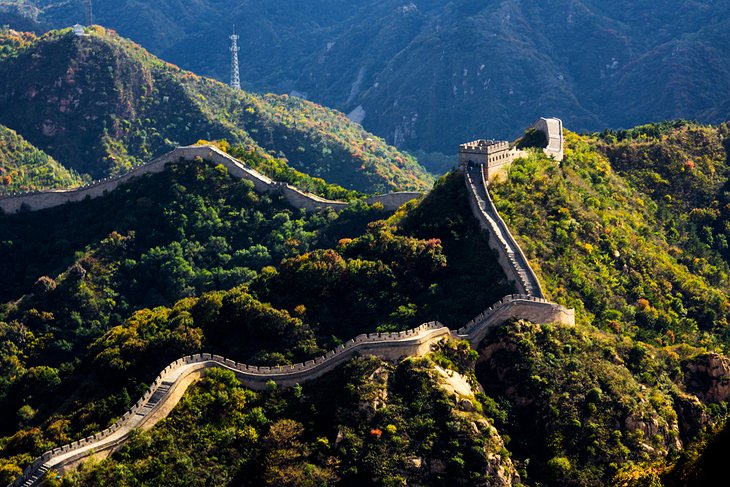
"Nobody can be a true hero unless he has been on the Great Wall" goes the popular Chinese saying, one that clearly demonstrates the importance placed upon this unique ancient monument.
Known in Chinese as 'Changcheng', or the Long Wall, the magnificent Great Wall of China stretches more than 6,000 kilometers from the fortresses of Shanhaiguan in the east all the way to Jiayuguan in the west. Along the way, it passes through Hebei, Tientsin, and Beijing , where the best-preserved sections of the wall can be visited, as well as Inner Mongolia, Ningxia, and Gansu.
Averaging six to eight meters in height but rising as high as 16 meters and wide enough in places for five horses or 10 men to pass, the wall boasts numerous battlements and watchtowers. Some of the wall's oldest fortifications date back as far as the 7th century BC, with the best-known areas added around 210 BC when its various sections were joined together.
Today, the most visited section of the wall is near Badaling Pass northwest of Beijing, easily reached by public transport or organized tours. Other restored sections worth a visit include the section near Gubeikou , 130 kilometers from Beijing; and in Mutianyu , just 70 kilometers northeast of Beijing.
Location: Huairou District, China
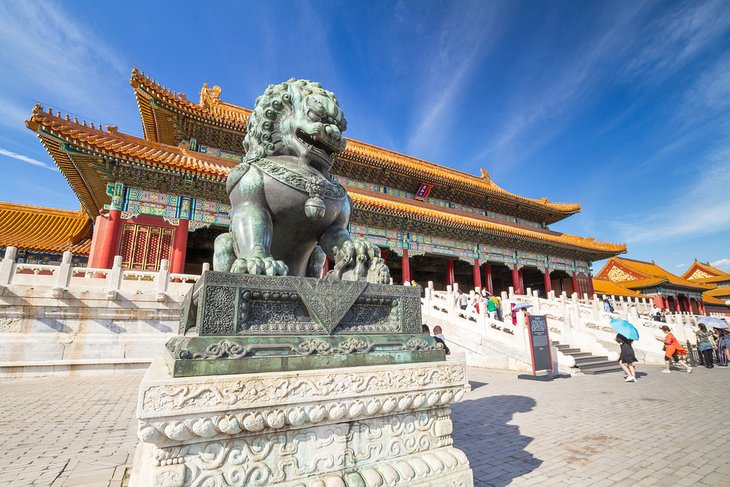
China's largest and most important building, also known as the Imperial Palace, is situated in the very heart of Beijing and is a must-see when visiting the country. Started during the Yuan Dynasty between 1271and 1368, much of the complex seen today was built between 1406 and 1420.
Really many splendid palaces in one, this sprawling complex was the residence of 24 Ming and Qing Emperors whose presence forbade the entry of anyone other than the imperial family and their courtesans. Covering some 720,000 square meters and protected by a 10-meter-high wall with watchtowers and a wide moat, this massive complex consists of areas set aside for ceremonial and administrative purposes, as well as a private residence used by the emperor.
While it can take many hours to see everything, highlights include the five white marble Golden River Bridges; the Hall of Supreme Harmony, a 35-meter-tall building housing the imperial throne; and the exquisite emperor's banquet hall (the Hall of Preserving Harmony).
The Palace Museum with its large collection of art and artifacts from the Ming and Qing dynasties is another must-see.
Spread across an area of more than 720,000 square meters, this impressive nearly 100-year-old museum contains historic buildings that themselves date back to the early 1400s . It takes a lot of time to explore, so be prepared to spend at least a day here. If you can, do a little advance research using the museum's official English-language website to pre-plan the exhibits you're most interested in visiting.
Highlights include fine examples of paintings and ceramics. The museum also houses the country's vast collection of important works of art made from jade and bronze. English language museum tours are available.
Other important attractions in the vicinity of the Imperial Palace include the famous Tiananmen Square , and the Temple of Heaven . One of the country's most important religious sites,this impressive temple dates back to the 15th century.
Address: 4 Jingshan Front St, Dongcheng, Beijing, China
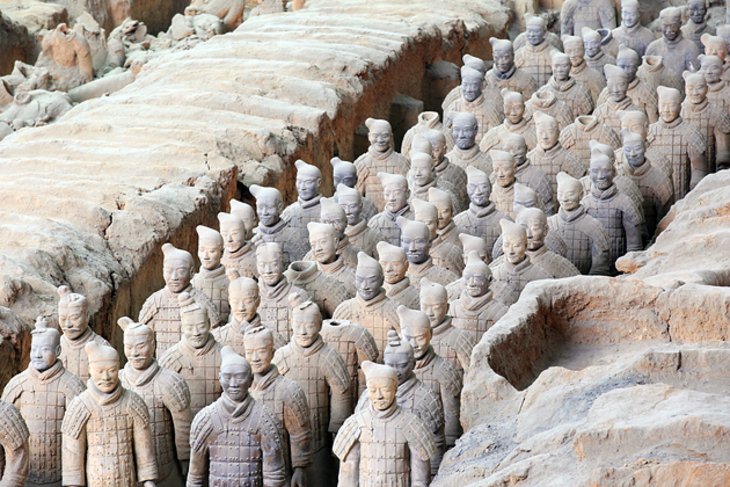
It was while digging wells on the outskirts of Xi'an in the 1970s that farmers stumbled across what was to be China's most important archeological find: the Terracotta Army.
Distributed over three large underground pits and built to guard the First Emperor's tomb, the find included more than 8,000 life-size warriors, some 520 horses, and more than 100 chariots, along with numerous other non-military characters dating from around 280 BC. Although some were severely damaged due to the passing of time, many of the statues unearthed have been painstakingly re-assembled and stand as a testament to the importance bestowed upon the emperor and the afterlife.
This remarkable find is part of Emperor Qin Shi Huang's Mausoleum Site Park and is one of China's most important tourist destinations. It offers the unforgettable experience of standing in front of this assembly of soldiers and horses as if inspecting a centuries-old parade. English-language guided tours are available.
Address: Lintong District, Xi'an, Shaanxi, China
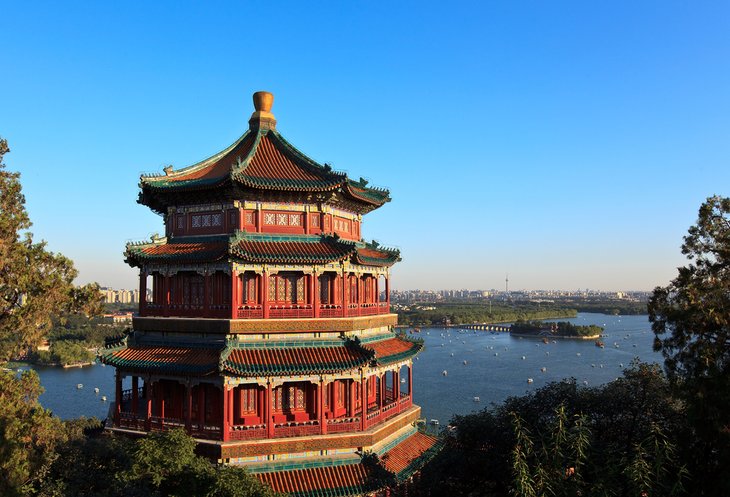
An easy 15-kilometer commute from Beijing, the sumptuous Imperial Summer Palace (Yíhé Yuán) is set amid more than 700 acres of beautiful parkland and is one of China's most visited attractions. While the palace itself was built in 1153, its large lake was added in the 14th century to enhance the Imperial Gardens .
Highlights include the magnificent Hall of Benevolence and Longevity (Renshou Dian), with its throne; and the beautiful Great Theatre, a private three-story structure built in 1891 to satisfy the imperial family's love of opera. This historic venue is still used for performances of traditional Chinese plays and musical events and is worth a visit for a performance or show.
Other highlights include the Hall of Happiness and Longevity (Le Shou Tang Hall) with its lovely gardens and courtyards, as well as many miles of picturesque pathways and walking trails.
If time allows, try to also take in the ruins of the Old Summer Palace in Yuanmingyuan Park. Said to have once been one of the country's most elaborate and architecturally attractive palaces, this once impressive structure was destroyed by colonial forces in the mid-1800s.
Address: 19 Xinjiangongmen Rd, Haidian District, China
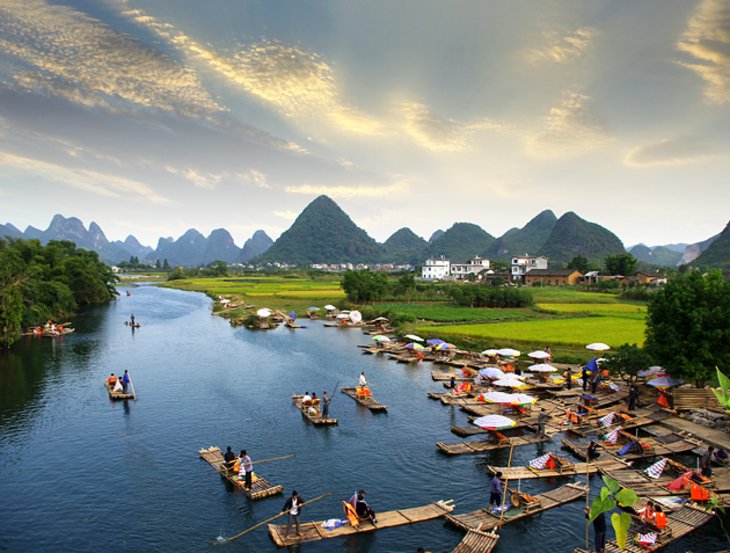
The town of Guilin in the northeast corner of Guangxi boasts some of China's most beautiful countryside. It's famous for the Li River which meanders through the town and surrounding karst mountains.
While for hundreds of years this unique scenery has attracted poets and artists and has been the subject of countless fairy tales and legends, these days, it's popular with tourists from around the world wanting to see this natural splendor up close.
The best way to enjoy the area is to take a cruise along the Li River . The most popular stretch is from Guilin to Yangshuo, where the river winds peacefully through some 80 kilometers of remarkable rock formations and caves with romantic names such as the Mount of Unique Beauty , Elephant Trunk Hill, and Reed Flute Cave .
You can choose from a tourist cruise ship to small bamboo punts, and depending upon the type of boat used, trips can take anywhere from a few hours to multiple days.

No visit to China would be complete without at least one panda experience. While the country's top zoos boast many fine specimens of these fascinating creatures, the best place to see them in a close approximation to their natural habitat is at the excellent Research Base of Giant Panda Breeding in Chengdu in the province of Sichuan.
Here, you'll have the chance to watch as many as 80 pandas go about their daily routines, from foraging to playing in the facility's large park-like setting. In addition to viewing these splendid animals up close, you'll learn a great deal about them from the many permanent exhibits and displays detailing ongoing conservation efforts to safeguard their future.
If possible, try to time your visit for the morning feeding sessions. Not only are the pandas at their most active, it's also when you'll get some memorable photos. Better still, sign up for one of the unique experiential volunteer programs that will have you involved in the feeding and care of these cuddly creatures - and possibly even holding a baby panda. English language tours are available.
Address: 1375 Xiongmao Ave, Chenghua District, Chengdu, Sichuan, China
- Read More: Top Tourist Attractions in Chengdu & Easy Day Trips
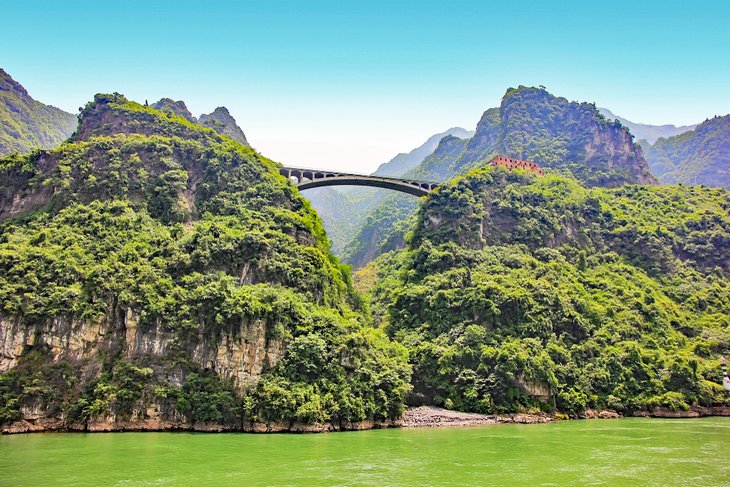
Known in China as Chang Jiang ("Long River"), the mighty Yangtze River extends more than 6,000 kilometers, making it the longest and most important river in China. It also has the distinction of being the third longest in the world after the Amazon and the Nile.
Flowing from Tibet in the west to Shanghai in the east through eight provinces, the Yangtze has, for more than 2,000 years, been China's major transportation route as some 2,700 kilometers are navigable. Its vast catchment area, with its 700 tributaries, covers about one-fifth of the total area of the country and encompasses a quarter of the country's agricultural land.
While its immense length ensures the river can be visited at numerous points in China, by far the most popular for tourists is the beautiful Three Gorges. Named Qutang, Wu, and Xiling, they cover a 200-kilometer stretch between the towns of Fengjie and Yichang. In places a mix of raging torrents and dangerous shallows, here the river winds its way through the gorges and their rugged cliffs and high mountain peaks in a stretch of scenery as dramatic as the Grand Canyon.
Numerous sightseeing options are available, from luxurious riverboat cruises focusing on the region's many historical attractions and places of scenic beauty to challenging adventure tours along the most dramatic sections of the river.
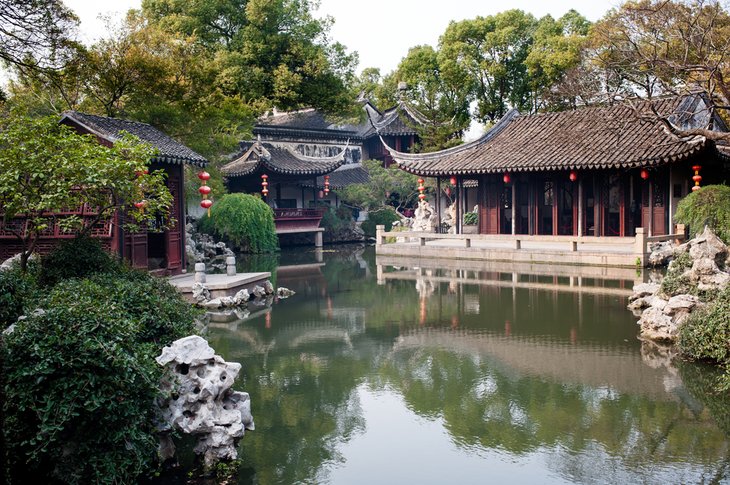
Considered one of the world's most important historic gardens and designated a UNESCO World Heritage Site, the Classical Gardens of Suzhou should rank highly on your China travel itinerary. Located in the historic city of Suzhou in Jiangsu province, these magnificent gardens were established in the 11th century, at a time when the city was experiencing unprecedented growth, and were among some 270 or more gardens planted here.
Of the surviving restored gardens, the most famous is the delightful Garden of Lingering . This seven-acre garden was laid out in 1800 on the site of a park originally created during the Ming Dynasty. One of the most famous garden complexes in China, it boasts a pool, several attractive buildings, a man-made hill, a grove of peach trees, and a lovely covered pathway on the walls of which hang more than three hundred stone tablets engraved with old Chinese characters.
Also worth visiting is the Garden of the Cang Lang Ting Pavilion . This two-acre garden offers many unique features, including a double arcade connecting the inner and outer sections.
Address: 178 Dongbei St, Gusu District, Suzhou, Jiangsu, China
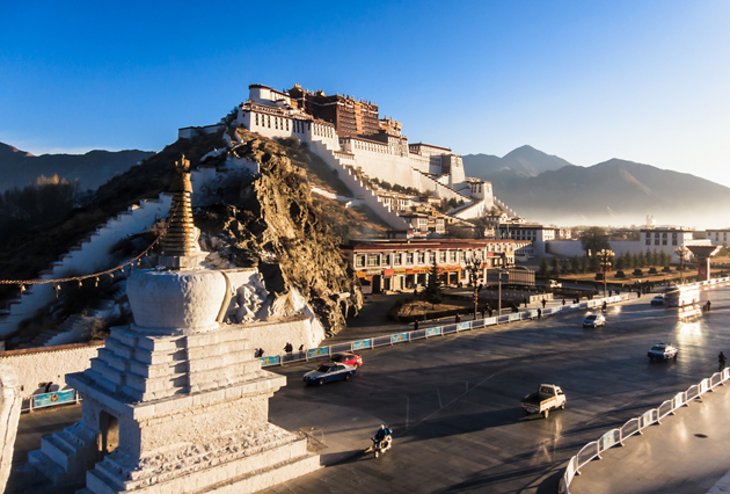
Another of China's most recognizable historic structures is the magnificent Potala Palace in the town of Lhasa, Tibet. Constructed as a fortress and residence for the Dalai Lama, it was for centuries a center of political and religious power and contains many of the religion's most important treasures.
The first of the two Potala Palaces, the Red Palace , was built in the 17th century and contains the complex's most important shrines. These are found in the Enthronement Hall, the walls of which are covered with murals depicting scenes from the lives of the Dalai Lamas and the Tibetan kings. Other highlights of the Red Palace are its many vast halls devoted to the religion's teachings and the elaborate tombs, known as "stupas," of a number of Dalai Lamas.
The equally impressive White Palace was completed in 1648 and includes the sleeping quarters, studies, and reception rooms, most untouched since 1959 when the Dalai Lama fled Tibet. While in Lhasa, be sure to visit the superb Jewel Gardens . Part of the Dalai Lama's summer residence, these 90-acre gardens were first started in the 1840s and encompass everything from grand palaces and pavilions to pleasant lakes.
Address: 35 Central Beijing Road, Lhasa, Tibet, China
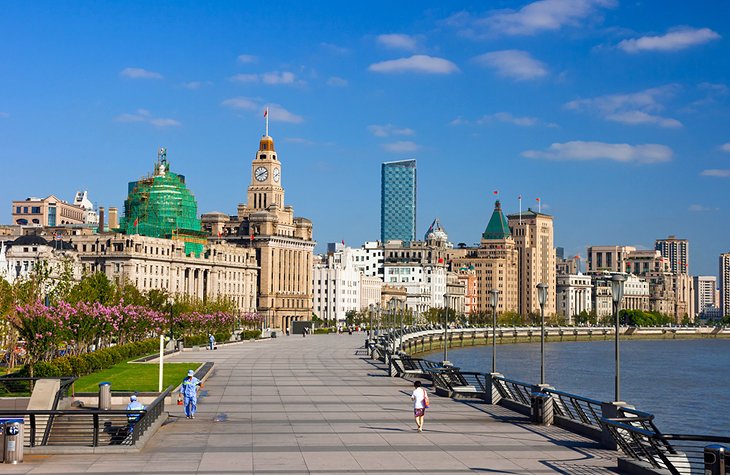
A remarkable act of smart city planning and preservation can be seen in Shanghai's splendid riverside promenade, the Zhongshan Lu, perhaps better known as the Bund (Wàitan). As you stroll this wide pedestrian zone along the Huangpu Jiang River, you'll almost forget you're bang-smack in the middle of China's largest city (Shanghai's population exceeds 24 million people).
Famous for its European feel, a fact owed to the district's past as the location of the city's International Settlement, the Bund is popular for its 52 preserved English- and French-influenced buildings, many now restaurants, cafés, stores, and art galleries. Representing a variety of influences from Gothic to Renaissance styles including a number of Art Deco buildings, the architecture includes highlights such as the old harbor customs office, with its bell tower, and the majestic Peace Hotel.
For the best views of the Bund, visit the 468-meter Oriental Pearl Tower on the opposite bank of the Huangpu Jiang River. If time allows, be sure to also visit the Yu Garden. Known affectionately as the "Garden of Happiness," this must-see garden can trace its roots back to 1559 when it was laid out. Many of the original structures survive to this day.
Address: Zhongshan East 1st Rd, Wai Tan, Huangpu, Shanghai, China
- Read More: Top Tourist Attractions in Shanghai & Easy Day Trips
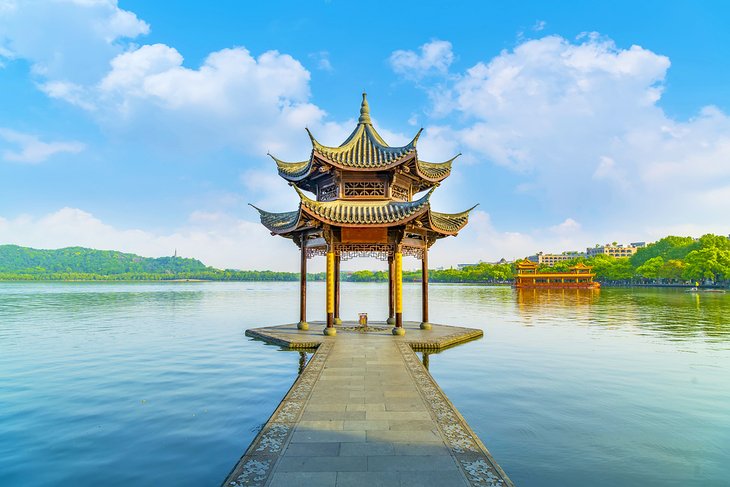
Few cities in China can boast quite the same concentration of splendid historic sites and ancient temples as the city of Hangzhou (Hangchow). Capital of Zhejiang province and located at the southernmost end of China's famous Grand Canal , much of this rich collection is gathered around lovely West Lake, a six-kilometer-square stretch of water in the heart of the old city which is surrounded by numerous hills, pagodas, and temples.
Divided into five distinct sections by man-made causeways dating back as far as the 11th century, it's a marvelous area to explore on foot as you cross from one stretch of water to the next, only to be met with another cluster of fine old buildings. It's particularly pleasant in spring when its many peach trees are blossoming.
Part of the fun is lingering on the lake's many fine old bridges, one of the best being the Broken Bridge (Duanqiao) linking the Baidi Causeway with the shore, and exploring Little Paradise Island with its four mini-lakes linked by the zigzagging Bridge of the Nine Arches .
Be sure to hop aboard one of the many tour boats and small pleasure craft available to whisk you around the lake. And if time permits, stick around for the fun musical fountain show held each evening.
- Read More: Top-Rated Tourist Attractions in Hangzhou
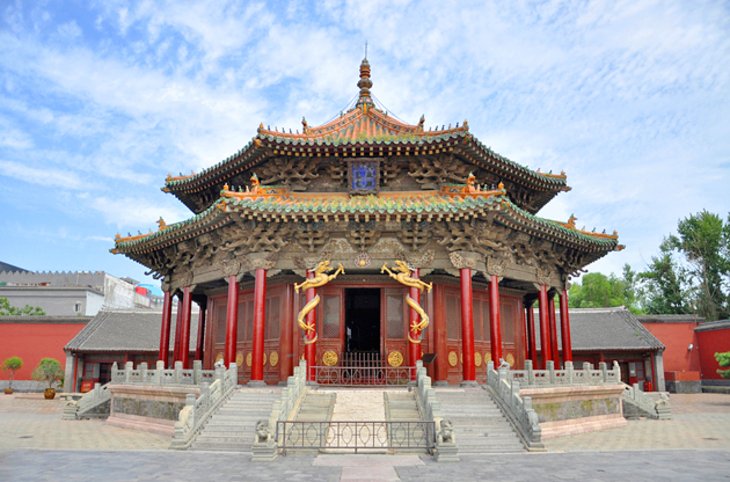
In China's mountainous northeastern region is the old city of Shenyang. This important center for trade and culture is home to the Mausoleum of Light (Zhaoling), also known as the Northern Imperial Tomb.
One of northeastern China's most important historic sites, it's included on the UNESCO World Heritage Site's list of Imperial Tombs of the Ming and Qing Dynasties and is noted for its unique architectural style: a combination of traditionally arranged Chinese burial sites and castle-like buildings of the early Qing period.
Buried here in a vast site covering more than 180,000 square meters that took eight years to complete is Emperor Huang Taiji, who reigned from 1626-35. The site is notable for its 'Path of Souls', a laneway lined with stone columns and sculptures of the emperor's favorite horses.
Another important site is the imposing Imperial Palace dating from the early Qing era, the second largest completely preserved palace complex in China after the Imperial Palace in Beijing. The complex served as a residence for the first Qing Emperors and includes several splendid courtyards around which are grouped numerous buildings, including the Hall of Exalted Government (Chongzheng Dian) housing the imperial throne.
Location: Huanggu District, Shenyang, China
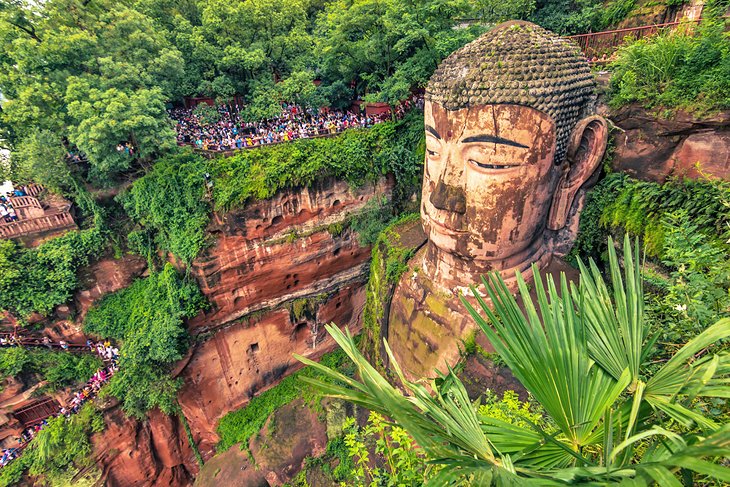
" The mountain is a Buddha and the Buddha is a mountain. " So goes the famous Chinese saying, one that's attributed to the spectacular 71-meter-tall Leshan Giant Buddha. And it certainly makes sense as you stand at its feet as the colossal statue towers high above you.
Started in AD 713 by a Buddhist monk and completed 90 years later, this important religious icon is carved entirely from a stone cliff face and is the largest Buddha sculpture in the world. Representing the Buddha Maitreya, the statue is even more dramatic given its location overlooking the river that it was designed to appease which had often proven treacherous for shipping.
Designated a UNESCO World Heritage Site, the Giant Buddha continues to draw huge numbers of pilgrims from across the globe and is widely regarded as one of China's must-visit attractions. Easily accessible from the city of Chengdu , the Leshan Giant Buddha can be reached by a fun ferry trip from the public docks in Leshan. The scenic park in which the Buddha is set is also worth exploring, so be sure to allocate sufficient time to your itinerary.
Address: 2345 Lingyun Rd, Shizhong District, Leshan, Leshan, Sichuan, China
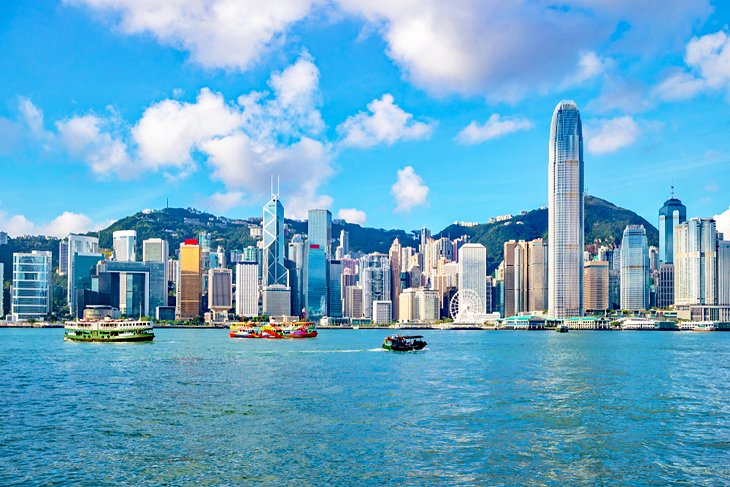
Widely considered one of the world's most dramatic city skylines - as much a result of its having one of the highest concentrations of skyscrapers as it is the presence of the tall hills that frame them - Hong Kong has for decades been the bustling capital of finance and commerce in this part of the Pacific. And it's a cityscape that can be enjoyed from a number of different vantages.
One of the best views is from Victoria Peak on Hong Kong Island, where the skyscrapers frame the city's huge harbor, a special treat after nightfall. Equally stunning is the view from Victoria Harbour itself. Here, you can also take one of Hong Kong's famous ferries. Operated by the Star Ferry company, you can hop aboard and head to various points to wander and explore, such as Kowloon. Or you can simply stay on board and enjoy the views.
If possible, try to time your trip to coincide with the nightly laser extravaganza, a stunning 360-degree laser-light show that uses the harbor's skyscrapers as a magical backdrop. For the best views, try to catch the show from the Kowloon side of Victoria Harbour.
Traveling with family? If so, you'll want to include Hong Kong Disneyland on your travel itinerary. China's first Disney theme park opened in 2005 and while visitors will notice many of the same rides as in the brand's other properties, careful attention was paid to China's cultural heritage. A highlight for fans of Disney's animated movies is the new in 2023 World of Frozen , while 2024 will see the opening of Stark Expo , an area dedicated to the characters of the Marvel universe.
- Read More: Top-Rated Tourist Attractions in Hong Kong
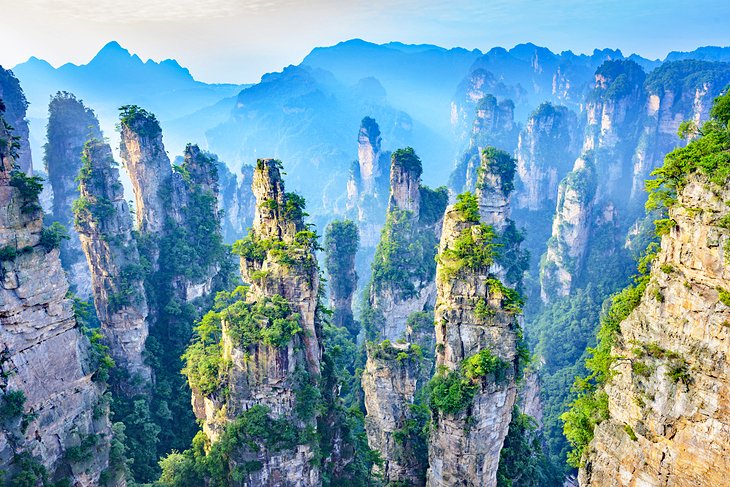
When you first set eyes on Zhangjiajie National Forest Park in Hunan province, it's certainly not difficult to see how filmmaker James Cameron was able to draw inspiration from it.
Cameron's box office hit Avatar , could well have been set in this area of stunning natural beauty, its many unique pillar-like rock formations looking like some incredible alien landscape right out of a sci-fi movie. One of the tallest pillars, standing at an impressive 1,080 meters, has been renamed "Avatar Hallelujah Mountain."
This is one of the lesser-known places to visit in China, but it's well worth the effort to get here. In addition to its many natural wonders, which can best be explored as part of an organized tour, the park boasts a number of new man-made attractions. The first to be built was the Bailong Elevator, aka the "Hundred Dragons Sky Lift." Elevating groups of up to 50 people 326 meters skyward in under two minutes, it's an impressive structure and one that offers dramatic views all the way.
Also notable is the Zhangjiajie Grand Canyon Glass Bridge. Opened in 2016, it's heralded as the world's highest and tallest pedestrian bridge. Standing 300 meters above the ground and extending 430 meters along a spectacular cliff face, it's an attraction that's definitely not recommended for the faint of heart but one of the best things to do if you are looking to add a little adventure to your day.
Location: Wulingyuan District, Zhangjiajie, Hunan, China

More on China
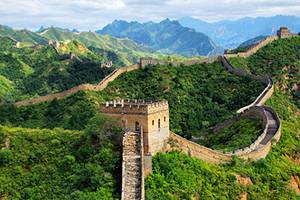

Discover the Wonders: Top Things to Do in China Beyond the Great Wall
C hina, a land of ancient wonders and modern marvels. But what if you've seen the Great Wall and tasted Peking duck? What's next? Dive into the lesser-known treasures of this vast nation and discover why over 55.7 million tourists flocked here in 2018.
TL;DR: China's Hidden Gems
- China is the third most visited country globally, with a rich tapestry of attractions beyond the famous Great Wall.
- From ancient relics in Xi'an to the bustling streets of Shanghai, there's something for every traveler .
- Discover secret spots and insider tips from experienced travelers like Deborah Green.
Why China Should Be on Every Traveler's Bucket List
According to the World Tourism Organization, China ranks third in global tourist visits. But why? Let's delve deeper.
The Great Wall: More Than Just Bricks and Mortar
Yes, the Great Wall is iconic. Stretching over 13,000 miles and with a history spanning 2,300 years, it's a testament to China's enduring spirit. But as travel writer Chris Taylor puts it, "China has a lot more to offer than just the Great Wall or the Forbidden City. The country is vast and diverse , from the ancient relics of Xi'an to the modern metropolis of Shanghai, from the desert landscapes of Xinjiang to the stunning karst mountains of Guilin."
Unearth the Secrets of Xi'an
Speaking of Xi'an, did you know it's home to the Terracotta Army? Thousands of life-sized statues, each with a unique face, guarding the tomb of China's first emperor. A sight that leaves even the most seasoned travelers in awe.
Shanghai: Where Tradition Meets Modernity
From the historic Bund to the futuristic skyline of Pudong, Shanghai is a city of contrasts. Explore hidden alleyways, savor local delicacies , or dance the night away in a rooftop bar. The choice is yours!
Experience the Magic of Guilin
Imagine cruising down a river, surrounded by towering limestone peaks, their reflections shimmering in the water. That's Guilin for you . A place where nature and culture intertwine, offering experiences that linger long after the trip ends.
Insider Tips from Deborah Green
When in China, don't just stick to the tourist trail. Seek out local experiences. Join a tea ceremony, try your hand at calligraphy, or hike off the beaten path in Zhangjiajie. And always , always have some local street food. The flavors will blow your mind!
Dive Deeper: China's Cultural and Natural Wonders
China's vastness isn't just geographical; it's cultural, historical, and natural. Beyond the bustling cities and iconic landmarks, there lies a treasure trove of experiences that often escape the typical tourist's radar. Here's a deeper dive into some of these wonders.
Yunnan's Enchanting Beauty
Located in the southwestern part of China, Yunnan is a province that boasts a diverse range of ethnic groups, each with its unique traditions and festivals. The ancient town of Dali, with its traditional Bai architecture and serene Erhai Lake, offers a peaceful retreat from the urban hustle. Not to mention the breathtaking Yuanyang Rice Terraces, where layers upon layers of cascading fields paint a picture of nature's artistry.
Hangzhou's West Lake
Described by Marco Polo as "the City of Heaven," Hangzhou's West Lake is a testament to that claim. Surrounded by mountains on three sides, this freshwater lake is dotted with pagodas, bridges, and islands. A boat ride here , especially during sunset, is nothing short of poetic. The reflections of the ancient structures on the shimmering waters tell tales of bygone eras.
The Silk Road Adventure
The ancient Silk Road, a network of trade routes that connected the East and West, has left behind a legacy that travelers can still experience today. Cities like Dunhuang offer glimpses into this past with its Mogao Caves, a complex of 492 grottoes adorned with Buddhist art. And then there's the echoing sand mountain, where the dunes sing as the winds pass.
Deborah Green's Pro Tip
If you're looking to truly immerse yourself in China's diverse tapestry, consider attending a local festival. Whether it's the Water-Splashing Festival in Yunnan or the Lantern Festival celebrated nationwide, these events offer a firsthand experience of China's rich cultural heritage. And remember, while landmarks are fascinating, sometimes the real magic lies in the unexpected detours and the stories of the people you meet along the way.
China is more than just its popular landmarks. It's a land of stories, of people, and of experiences waiting to be discovered. So, pack your bags, bring your sense of adventure, and embark on a journey like no other. See you in China!
What are some lesser-known attractions in China?
Places like the Rainbow Mountains in Zhangye, the ancient town of Lijiang, and the serene Jiuzhaigou Valley are just a few hidden gems.
Is street food safe to eat in China?
Generally, yes. Just ensure the food is freshly cooked and the stall is clean. Trust your instincts and enjoy the culinary journey!
How do I get around in China?
China boasts an extensive high-speed rail network, making it easy to travel between major cities. For shorter distances, taxis and subways are convenient options.
What's the best time to visit China?
Spring (April to June) and autumn (September to October) are ideal, with pleasant temperatures and fewer tourists.
Do I need to know Mandarin to travel in China?
While it's helpful, many signs are in English, and translation apps can assist in communication. A smile and gestures go a long way!
World Tourism Organization
China Travel Guide
Interview with Chris Taylor, Travel Writer
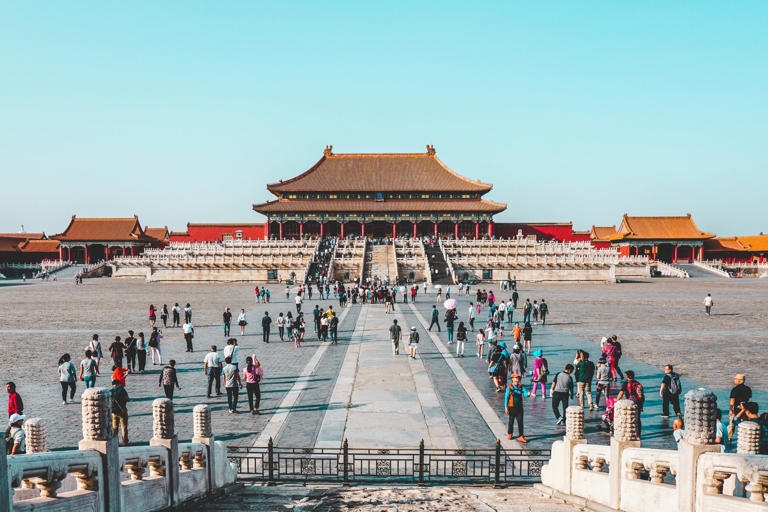

24+ Best Places to Visit in China Besides the Great Wall
24+ modern and historical places in china besides the great wall.
China is such a huge country and with a long and storied past, it’s no wonder that in modern days, historical places in China are all over the place mixed in with some modern marvels! Use this map and list to find some amazing places in China to visit and help you plan your China itinerary ! Whether you have international data or a sim card, you’ll want some apps to ease your travel in China !
1. The Forbidden City
Nestled near Tiananmen Square, the Forbidden City is huge and amazing. It is the most well-preserved wooden structure and is very royal and extravagant! The city has about ninety castles, so you probably will skip a few but make sure to at least look at the main buildings! I would also advise for you to look at the Treasure Halls because they have some amazing jewels as well.
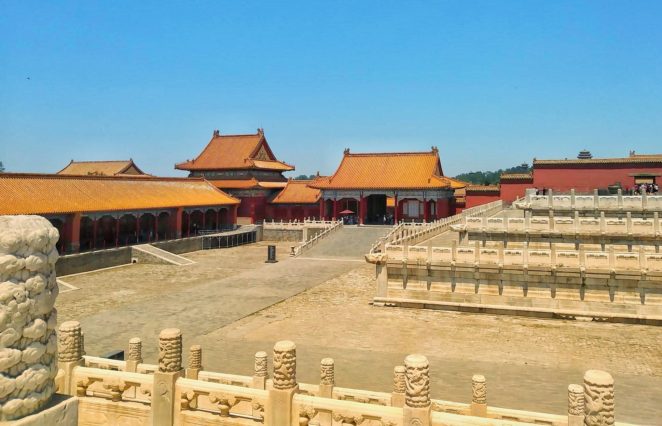
2. Summer Palace
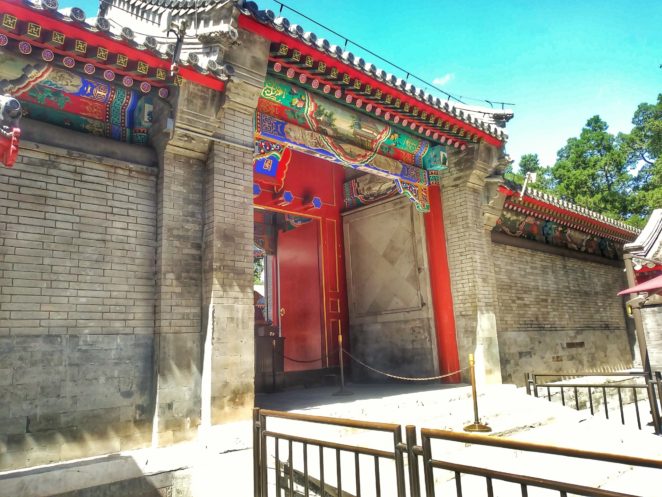
Yet another royal palace, but this time it is for the summer. The area has many little squares and so much history (read: DRAMA ) happened in those very rooms. There is a big central temple where you can climb up to see the skyline; it was amazing up there! There also is one stretch of covered patios that have paintings all over the inside, and each one is different from historical scenes, stories, and still-lifes.
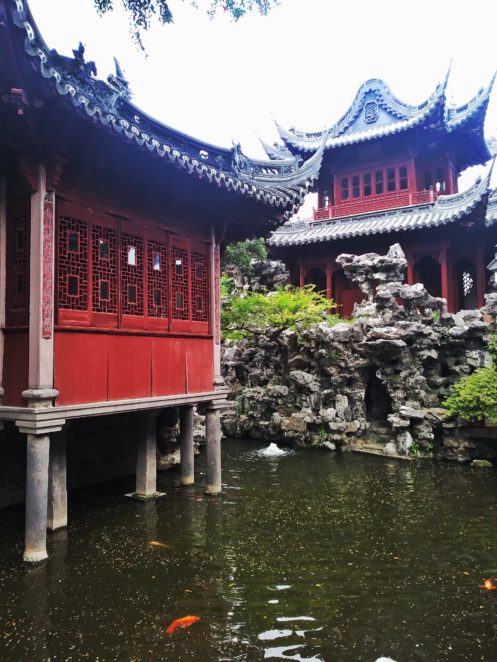
3. Beihai Park
Ahhhh! This was one of my favorite attractions in the whole trip! This park is perfect after a long stretch of sightseeing because you are surrounded by *beautiful* nature. What I love about this is that for every main path, there are tons of small little hikes that you can see. So definitely check out a little area–you might see something you didn’t expect! One of my highlights was renting a paddle boat and going around the lake.
4. Yu Yuan Garden
Another one of my favorite places! I like gardens and nature, so this was right up my alley. This was an area where a rich family lived and you can see Chinese architecture and landscaping at its finest. Also, if you like taking artsy nature photos or photos in general, go here! Nearly every corner is picturesque and it is a great place to relax!
5. Nanjing Road
This is one of the must-dos in Shanghai. This pedestrian-only road is teeming with shops, so if you want to shop, go ahead. If not, you can keep on walking and see the Shanghai skyline! I went at night, and IMHO, I think the night view is better!
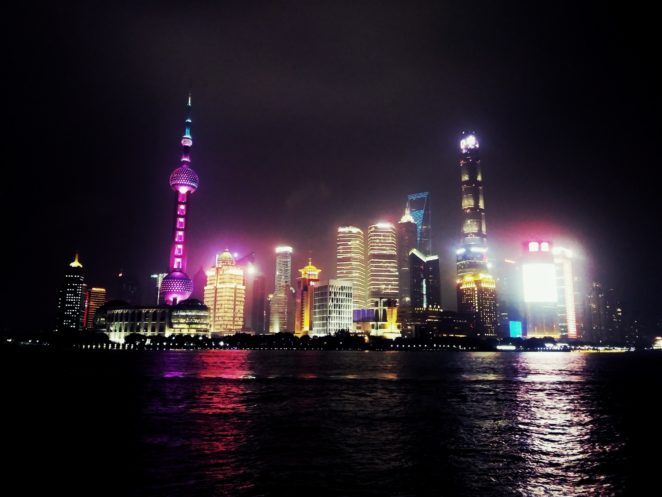
6. Terracotta Warriors
This is another must-do! The pits are huge and sometimes you can see the archaeologists working at the statues while you walk! I would recommend knowing some prior knowledge before coming in since there are not *that* many signs around.
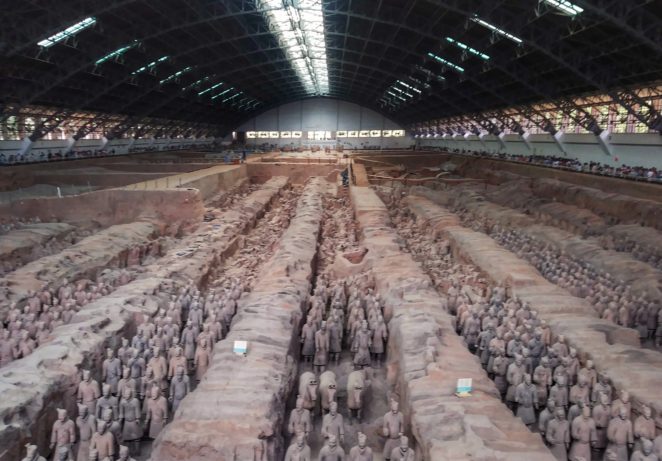
7. Hui Ming Street aka the Muslim Street
If you like food and are not vegetarian, this is for you! This street is super busy (try to catch less crowded times like when it’s not meal time) and is always bustling. There are also a ton of little shops and souvenirs you can get too! Here you can find all kinds of food from rolled ice cream to Xi’an’s famed lamb on a stick. There are soooooo many different kinds of food that it is mind-boggling (I want to try EVERYTHING!!)!
8. Xi’an City Wall
One of my favorites!! The Xi’an city wall surrounds the older parts of the city. Go around 9 pm because it is the best when it gets dark. Each building is outlined in gold neon lights and lanterns hang by every pillar. I rented a bike and that was probably the best decision I have ever made; my dad and I rode around the entire wall, and it was just so much fun!
There are many many more places to go and I encourage you all to go explore on your own.
That’s it from me for now though!

Hi! I’m Anna!
Anna’s Bio Hi! My name is Anna, and I’m actually one of Ms. Heyward’s (AKA Flight of the Educator’s) former students. I love animals, science, and traveling! As of now, I have been to eleven countries (including my own) and three continents, and I hope to travel to many more!
Back to carly aka ms. heyward aka flight of the educator.
Before we move on to more of the historical places in China, I wanted to do a quick shout out to Anna for writing the above portion of this article! Those are her pictures and words which were only slightly edited by me (Swoon, she even correctly placed her own semi-colon. I’m so proud).
I’ve tacked on the following spots because China is a huge country, and I like to make sure these lists have a ton of options! While the top was written, photographed, and curated by Anna, the rest is done by me. Thank you, Anna, for pitching and writing this article! And for all your help with tweaking designs on Canva 😀
9. Ming Dynasty Tombs
The Ming Tombs are a UNESCO Heritage site that houses the remains and treasures of 13 Ming Dynasty members. The first emperor is actually in Nanjing and not outside of Beijing. I swung by the tombs on the way to go see the Great Wall on a tour!
Interested in a tour too? – This is the Great Wall tour I took! It’s a great price, and it included:
1. Great Wall of China tour 2. Ming Tombs 3. Part of the Great Wall with Chair Lift up and Slide down 4. Lunch 5. Traditional Tea Ceremony 6. Trip to a Jade Factory
It’s akin to the Valley of the Kings in Egypt because where the Ming Tombs are located has the most amount of emperors in a single area in China. Not all of the tombs are open to the public, but it’s such a large area, you’d hardly have time anyway!
Since the tombs are underground, it’s a nice respite from the heat (or in my case, rain!) to let you wander the tombs in leisure. My favorite part was the “Underground Palace,” and I thought it was strange/sweet that one emperor was even buried with both his empresses.
10. Dragon Escalator
It’s pretty hard not to think about China when you think dragons, so would that make the most Chinese thing a giant dragon escalator? The dragon is the largest outdoor escalator, and it takes people to the top of a dam. And the fun doesn’t end there!
Once you get to the top of the dam, there are opportunities to ride a boat, ride a cable car, or even bungee jump!
While dragons may be mythical creatures, the closest thing Earth has seen to them are… dinosaurs! Check out these two amazing places in China to see some dinos.
11A. Dinosaurs Fairyland
If you’re looking for the only place in China that’s not crowded, then this is a great bet! Dinosaur Fairyland is written across the landscape a la the Hollywood sign and sets the stage for a journey back in time.
Dinosaurs Fairyland is a park filled with both real and fake remains of the largest animals to ever roam the planet. It’s staggering, really, how big some of those creatures were! It’s a nice mixture of both real and fake bones, great photo opportunities with some critters, and it’s close to Mongolia if you’re heading that way!
11B. Kissing Dinosaurs
You’re probably wondering what the deal with all the dinos on the outskirts of China is, but it’s simply just because there’s a salt lake nearby where many bones were discovered. So, what better way to mark that amazing find with two giant dinos making out over a highway? I mean, it’s just logic.
12. Ancient City of Jiaohe
Jiaohe means River Junction since it was built on an island with the river forming a natural defense on all sides. It’s kinda like the island in Paris with Notre Dam on it! It was an important stop on the old Silk Road, is over 2000 years old, and has earned its spot on the World Heritage Site List.
The city itself was slowly abandoned over a long period of time as it was being harassed by several ruling parties including the Mongols. Although for its age and building material, it’s still largely intact due to the dryness of the air.
13. Hanging Temple of Hengshan
The Hanging Temple AKA the Hanging Monastery is famous for two main things: being on a cliff almost 250 ft above the ground and for being a combination of Buddhism, Taoism, and Confucianism. How many other structures can you say that about?
14. Tianjin Library
I’ve always enjoyed a good look through a library, but that’s because normally the building houses the treasures. But in the Tianjin Library, the building itself is the treasure. Something out of a Science Fiction movie, the walls and even ceilings of the library are all terraced to maximize the anumberof books. Belle from Beauty and the Beast could easily live here. It’s relatively new, and it only opened up in Fall of 2017.
15. Shaolin Temple
I feel like my biggest association with Shaolin monks are Flying Shaolin monks. When I found out about this place, I realized I wasn’t as far off the mark, as you would think.
A recent addition to a Shaolin Monastery is the Shaolin Flying Monks Theater. It’s literally an amphitheater of seats surrounding a large wind tunnel. I’ve been in a small wind tunnel when I’ve done indoor skydiving, so it’s like a massive version of one of those.
Because of incredible planning, the sound isn’t quite as loud as you’d imagine, so it affords the monks the ability to serenely pray as they float as one with nature…with an audience. Sign me up! (There are certain times civilians are able to go too!).
16. Chinese Pyramids of Xian
This next one is sort of an “El Dorado” of China in that a few non-Chinese pilots have insisted that they’ve seen a giant White Pyramid in China (twice the height of the Great Pyramid of Giza in Egypt ), although it hasn’t been found to truly corroborate those claims. It’s almost a conspiracy theory now!
However, there have been tons of Chinese pyramids spotted around China, which is amazing since you only really expect them in Egypt. The ones that have been found are mostly either covered in trees and grass (conspiracy to cover up?) or the more traditional step pyramids.

Picture is from Atlas Obscura
The largest one is associated with Emperor Qin, who is also credited with the Terracotta Army that Anna mentioned above.
Crazy Instagram Spots
17a. zhongshuge mirrored floor.
I know we already talked about the wild library in Tianjin, but the Zhongshuge Library has gone an extra step further with mirrored floors. Talk about wild angles that make this library look almost like it’s a fractal! I can see those Instagram girls with their long flowy dresses and hats looking off into the distance. You too can get an “Extra” Instagram worthy picture here. While you’re there, pick up a book and learn something!
17B. Bund Sightseeing Tunnel
Shanghai’s area called the Bund is connected to the Pudong district of Shanghai by a mag-lev (magnetic levitation train) under a river. Was that sentence not cool enough for you? Because the tunnel itself isn’t just a journey, it’s a destination.
It’s less than 5 minutes to take the journey, but you’ll be on a multimedia thrill ride while you’re on it. My favorite quote about it is from Atlas Obscura (another super fave site of mine), “This psychedelic tourist trap is a leisurely descent into madness.” Sounds like all you need is a cup of tea with the Mad Hatter, and you’re basically in Alice in Wonderland.
18. Quarry Hotel
Most hotels would be very upset to learn that their bottom two floors are underwater, but not Shanghai’s hotel being built in an abandoned quarry! The only use for a quarry for me so far has been for Walking Dead and Stranger Things set, but a visionary decided to make it into a grand hotel!
It’s supposed to be done sometime in 2018, so it’s getting close! It’ll have 2 floors underwater, 16 floors underground (well, below the main level of the ground, anyway), and an underwater restaurant!
19. Propaganda Poster Art Center
I was drawn to the Propaganda Center predominantly because of the Dystopian Unit that I teach in my class. Propaganda has two main purposes: either to create support for a cause or to scare or threaten for a different cause. They are thusly inherently positive (Yay Us!) or negative (Boo Them!). I think it’s very topical to be able to discern when you’re being “handled” by the media… especially when it attempts to “other” a group of people.
You’re actually even able to take home a bit of history and buy some real propaganda! Please don’t be like that American student and try and steal some in North Korea.
20. Fengdu City of Ghosts
While its name might suggest a city filled with actual ghosts, that’s not the case. It’s called the City of Ghosts because it was named after a “Celeb Couple name” that loosely translated to King of Hell. So since then, the town was decorated and known for ghosts, demons, the afterlife and whatnot.
There is a bridge that only the “good” can cross while the “bad” fall below. Sometimes there are even “demon” performers that will guard the bridge from tourists (although they do let them pass).
If you’re really into the macabre, this might be the place for you!
Crazy Bridges and Walkways
21a. brave men’s bridge.
The first time I saw this bridge was when a man was crawling across it and basically crying. While I too have a serious fear of heights, I THINK I’d be able to survive this bridge since I’d have something solid underneath my feet.
As if it’s not fearsome enough to cross a chasm on a narrow wooden bridge, the park decided to take a page out of Indiana Jones and make that once wooden bridge invisible. Well, as invisible as glass can be. Just a short jaunt across a glass bridge would be enough to test someone’s mettle, but this one is almost 1000 ft across! It was the longest bridge until the next bridge (below) was completed.
21B. Zhangjiaje Glass Bridge
China decided to one-up themselves and build yet another glass bridge spanning not just 1000 feet, but 1400! The Zhangjiaje bridge is by China’s Grand Canyon, and you can do both as a trip together!
Just make sure that you have the appropriate footwear. They’ll also make you wear shoe coverings to keep that glass spic and span.
21C. Tianmen Skywalk
The two bridges above cross a vast emptiness, but the Tianmen Skywalk is slightly different. It’s still WAY high up (up to almost 5000 ft!), but instead of connecting two points, it winds around a mountain.
What it still has in common with the other bridges is that it has that same glass bottom to really throw your adrenaline into overdrive. There are a whole bunch of activities to do in the area, and this map will help you plan your trip!
22. Mao Zedong’s Giant Head
Mao Zedong (more commonly known as Chairman Mao) was the founding member of the Communist Party of China. His legacy could be debated for its pros and cons, but what can’t be debated is how cool a giant head in the middle of nowhere is.
And I gotta say… his hair looks fly.
Global Landmarks
23a. world park.
Beijing was home to the Olympics in 2008, but even before that, it set a global stage with the World Park. Much like Epcot in the US, the World Park has recreations of major landmarks all around the world!
They are separated by zones and water to represent the oceans! And also like Epcot, there are several performances during the day!
23B. Window of the World
The Window of the World is similar, but just not in Beijing. It is instead built past Guangzhou near Hong Kong (while you’re there, there are actually a lot of really cool things to do in Guangzhou !). It seems to be built under the same sort of premise of just a park with lots of replicas of famous landmarks from around the world!
Exotic Great Wall Spots
Now I know this article is about historical places in China besides the Great Wall, but that’s the normal sections of the Wall! I’d be remiss if I didn’t at least point out that there were some more interesting places to check out!
24A. Underwater Great Wall
Even without being able to dive this section of the wall, you’d still be able to witness the wall first descending down into the water, climbing back out onto an island before disappearing down into the water again. That alone is worth the trip.
It is actually possible to dive there, however the visibility isn’t too great, and you have to go a long distance with the gear. This dive might require more gear than normal since it’s generally a pretty chilly site. It should be done by advanced divers, for sure. However, how cool to dive between this amazing wonder! And to swim in, around, and through it!
The wall didn’t sink into the water or anything, though. The area was flooded to make a reservoir.
24B. Great Wall Meets the Sea
I mean, it’s gotta end somewhere, right? It’s also known as the Old Dragon’s Head because it looks like a dragon is resting and drinking out of the water. I’m not sure how helpful this area of the wall is because wouldn’t invaders just go around? I’m not sure; I’m not a doctor.
24C. Wild Wall
The main parts of the Great Wall that the tourists visit are rebuilt and well kept to keep the tourists happy. However, there are sections of the wall (vast swaths of them!) that are not kept to such a standard and are deemed the Wild Wall. These parts of the wall are how nature intended them to look, and they are still pretty amazing to be seen.
Pin this for later if you’re planning on heading to China!
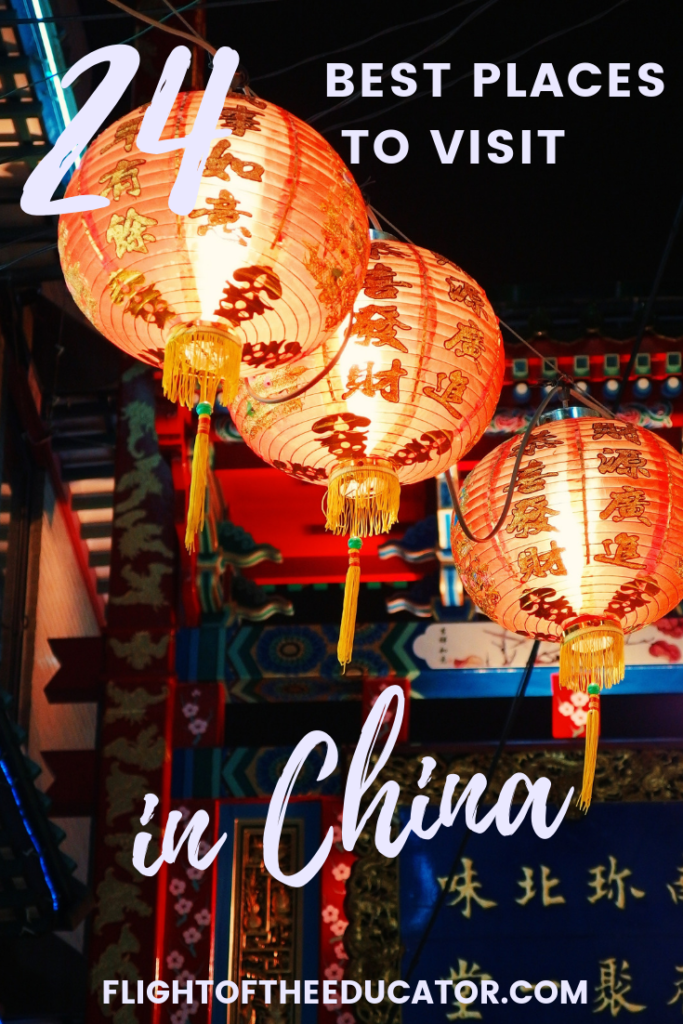
Hi! My name is Anna, and I’m actually one of Ms. Heyward’s former students! I love animals, science, and traveling! As of now (I'm in High School), I have been to 11 countries and three continents, and I hope to travel to much more!
Using a Travel Agent vs Booking Online
11 natural wonders in greece for your next trip, you may also like, swan hellenic antarctica cruise review, things to do in buenos aires, unveiling the wonders of scuba diving in easter..., g adventures belize and guatemala itinerary ~ tour..., antarctica with quark ultramarine review, clothes for antarctica ~what to wear in antarctica, atlas ocean voyages world navigator ship details, atlas ocean voyages review, g adventures colombia express tour review, how to visit vegas on a budget.
[…] We did, however, love our stay in China and I couldn’t be more proud of traveling to a destination than I am of traveling to China. The country is magnificent and it’s impossible to explore it in one month or even 6 months. There are just so many beautiful sites in China! […]
[…] that are dedicated to preserving this beautiful creature from extinction. While if you are into historical places to visit, you should be able to do that throughout the […]
[…] will include visiting the Great Wall, Summer Palace, local gardens, Olympic Stadium, and other historical places in China. Plus, I have to go back to try the soy milk and Chinese donuts, and other local foods since I […]
[…] We did, however, love our stay in China and I couldn’t be more proud of traveling to a destination than I am of traveling to China. The country is magnificent and it’s impossible to explore it in one month or even 6 months. There are just so many beautiful sites in China! […]
[…] Whilst travelling China, don’t miss the best places to see in China! […]
[…] Are you looking for ideas for other sites and places to visit around China, be sure to check out this post a 24+ Best places to visit in China […]
[…] If you are not ready to leave China just yet, why not check out these historical places in China. […]
Great blog post! Always say, your student lucky to have you! I hope they listen when you are filling their heads with all this wonderful knowledge
Comments are closed.
This website uses cookies (sadly, not chocolate chip) to improve your experience. We'll assume you're ok with this, but you can opt-out if you wish. Accept Read More

IMAGES
VIDEO
COMMENTS
Though the Great Wall is over 6,000 kilometers long, the best 10 sections to visit are around Beijing's north and east: 1) the best-restored, Mutianyu, 2) the most beautiful, Jinshanling, 3) the wildest, Jiankou, 4) Simatai, 5) Huanghuacheng, 6) Gubeikou, 7) Juyongguan, 8) Huangyaguan, 9) Shanhaiguan, and by far the most crowded 10) Badaling ...
Some of the best tourist attractions along the Great Wall of China include Badaling Great Wall, Shanhai Pass, Baishi Mountain, and Yanmen Pass Scenic Area. Other AAAAA-rated tourist attractions in China include Mount Pan in Tianjin, Guwenhua Jie in Tianjin, Olympic Green in Beijing, and Baiyang Lake in Hebei among others. 4.
A Complete Guide to Visiting the Great Wall of China. The Great Wall of China stretches 13,000 miles over mountains, forests, reservoirs, and desert. It took a millennium to build, involved multiple dynasties, and pissed off a lot of Huns. Inextricably tied to the history of the country, to visit China without seeing it would cause you to be ...
4. Jiankou [SEE MAP] Located some 70 kilometers to the north of Beijing, Jiankou is the wildest, most dangerous, and therefore most exhilarating part of the Great Wall to explore. Completed all the way back in 1368, the wall hasn't been restored since.
6 Things to Do on Mutianyu Great Wall of China. - Last updated on Jan. 03, 2024 by Brenda Lian -. 6 best places to see Great Wall of China are Mutianyu, Badaling, Simatai, Jinshanling and Jiankou in Beijing; and Gansu for Jiayuguan, Yumenguan and Dunhuang Great Wall.
To the Chinese, the Great Wall is known as "Wan Li Chang Cheng" (万里长), or literally, "Long Wall of Ten Thousand Li" ("li" is a measure of distance about 500m or about a third of a mile). But of course, that's not the actual length of the wall, but just an ancient way of saying "this is a long friggin' wall.".
In terms of visiting the Great Wall from east to west, the top 8 recommended sections are Simatai, Jinshanling, Gubeikou, Mutianyu, Jiankou, Huanghuacheng, Juyongguan, and Badaling. These fortified walls serve as a stronghold in protecting the capital of China, Beijing.
Discover the best attractions in The Great Wall including Jiankou Great Wall, Jinshanling, and Mutianyu. Lonely Planet. Destinations. Planning. Inspiration. Shop. Search. Saves. Open main menu. Asia. ... China Great Wall Museum. The Great Wall. This sizeable museum blusters through a history of the Wall, from its origins as an earthen ...
Today, sections of the Great Wall are still the most visited tourist attractions in the country. The Great Wall of China earned a spot as one of the New 7 Wonders of the World in a global survey. For generations, this great engineering feat has captured imaginations around the world.
The Great Wall of China is one of the modern seven wonders of the world, and a protected UNESCO World Heritage site, making it one of the top must-see destinations for intrepid explorers.The wall is unfathomably long, running 21,196 km all along the northern border of China, travelling through mountains, deserts, beaches and grasslands.
China Great Wall information on its popular sections, tours, history, facts, construction, pictures, maps and travel tips as well as culture & its protection. ... 10:00 Bus 877 from Deshengmen to Badaling takes 1 to 1.5 hours; tourist bus line from Dongzhimen Wai Station to Mutianyu takes 1.5 to 2 hours. 10:00 - 13:00 2 to 3 hours' hiking ...
China's most famous icon, the Great Wall stretches over 21,000 kilometers, winding its way through 15 provinces, 97 prefectures and 404 counties. Here are some of the most stunning spots ...
A visit to the Great Wall is an essential part of any comprehensive China tour.First built as a fortification more than 2,000 years ago, much of the wall is now in ruins, but at some locations you can both view and walk out on this massive monument, which snakes its way through northern China for some 5,500 miles from the east coast to the Gobi Desert.
The Great Wall of China is China's most popular tourist destination with 10 million people visiting every year. A trip to China would be incomplete without seeing this 21,000 kilometers long historical treasure. Walking across the various parts of the structure will take travelers to ancient times while also showcasing its distinct architecture ...
Every year, more than 10 million people flock to the Great Wall of China, making it one of the world's most popular tourist attractions. The Badaling section sees the most visitors each year. It ...
Beijing, the capital city, possesses about 573km (356 miles) of the Great Wall including the world famous Badaling, Mutianyu, Jiankou, etc., stretching alone the steep peaks and hills at its remote northern districts. You can easily plan a satisfied day trip to the closer sections of the Great Wall from Beijing.
The Great Wall of China is one of the top tourist attractions in the world, drawing more than 10 million visitors from all corners of the globe every year. It's one of those really cool experiences that everyone should have in their lifetime. They don't call it one of the 7 Great Wonders of the World for nothing.
Huanghuacheng Great Wall, or Huanghuacheng Lakeside Great Wall, is located at Jiuduhe Village in Huairou District of Beijing. It is about 80km (2h15m by car) to the north of central Beijing (Tian'anmen Square). To Forbidden City: about 75km, 2 hours' drive. To the Summer Palace: about 68km, 1h45m's drive.
The Great Wall holds immense historical and cultural significance, representing the resilience, unity, and ingenuity of the Chinese civilization. As a major tourist attraction, the Great Wall offers visitors a unique opportunity to immerse themselves in the rich tapestry of Chinese history and culture. Its historical significance, architectural ...
Discover fascinating, unusual, and adventurous things to do with our list of the top tourist attractions in China. On This Page: 1. The Great Wall of China. 2. The Forbidden City & the Imperial Palace, Beijing. 3. The Terracotta Army, Xi'an. 4.
China is the third most visited country globally, with a rich tapestry of attractions beyond the famous Great Wall. From ancient relics in Xi'an to the bustling streets of Shanghai, there's ...
9. Ming Dynasty Tombs. The Ming Tombs are a UNESCO Heritage site that houses the remains and treasures of 13 Ming Dynasty members. The first emperor is actually in Nanjing and not outside of Beijing. I swung by the tombs on the way to go see the Great Wall on a tour!